Introduced back in 2007 as the company's first compact crossover, the QX50 was known as the EX up until 2013. The renamed vehicle went on sale in the U.S. as a 2014 model and, for 2016, it received a new facelift and enhanced rear seat legroom. Although praised for its roomy interior and rich standard equipment list, the QX50 is often criticized for being nearly as expensive as its BMW and Mercedes-Benz competitors and for its somewhat dated exterior design. The latter will change starting 2017, when Infiniti is set to introduce the second-generation model.
But before the production model hits the streets, Infiniti introduced the QX50 concept.
Showcased at the 2017 Detroit Auto Show, the QX50 concept is heavily based on the QX Sport Inspiration that the Japanese company launched in 2016. It features Infiniti's recent styling language, but it's enhanced by a range of new design elements that have yet to debut on other models. On top of the restyled body work, the new QX50 will also bring new technology to the market, including the brand's first semi-autonomous drive system, as well as a new turbocharged 2.0-liter engine with variable compression ratio. The later is a first for the automotive industry.
"With the unveiling of the QX Sport Inspiration at the 2016 Beijing Auto Show, we showed the future of Infiniti QX models. The new QX50 Concept evolves this concept further and shows how Infiniti could develop its future presence in the fastest-growing vehicle segment globally," said Roland Krueger, President of Infiniti.
There's no word as to when the actual production model will make its global debut, but until that happens, let's have a closer look at the production-ready concept.
Continue reading to learn more about the Infiniti QX50 Concept.
2017 Infiniti QX50 Concept
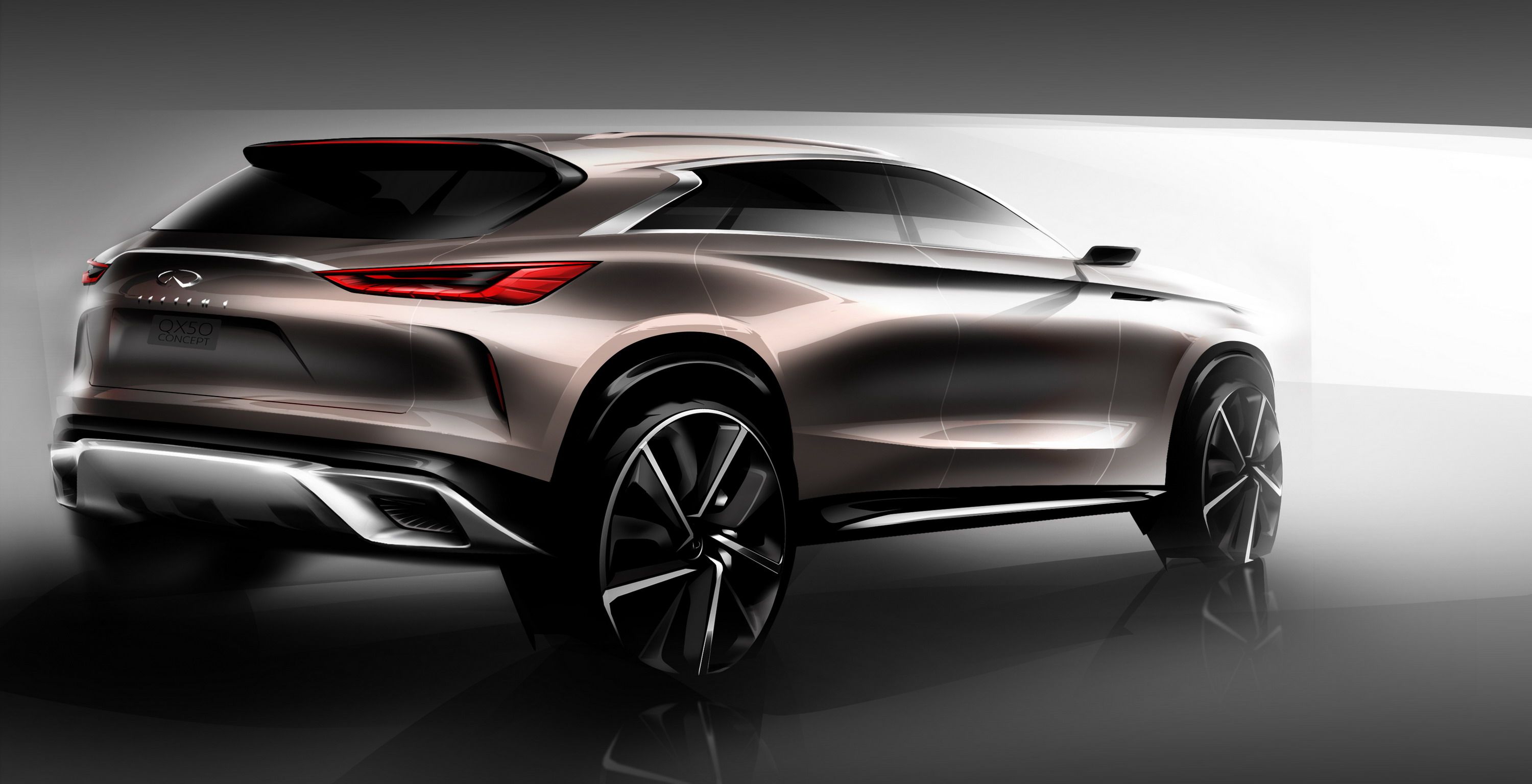

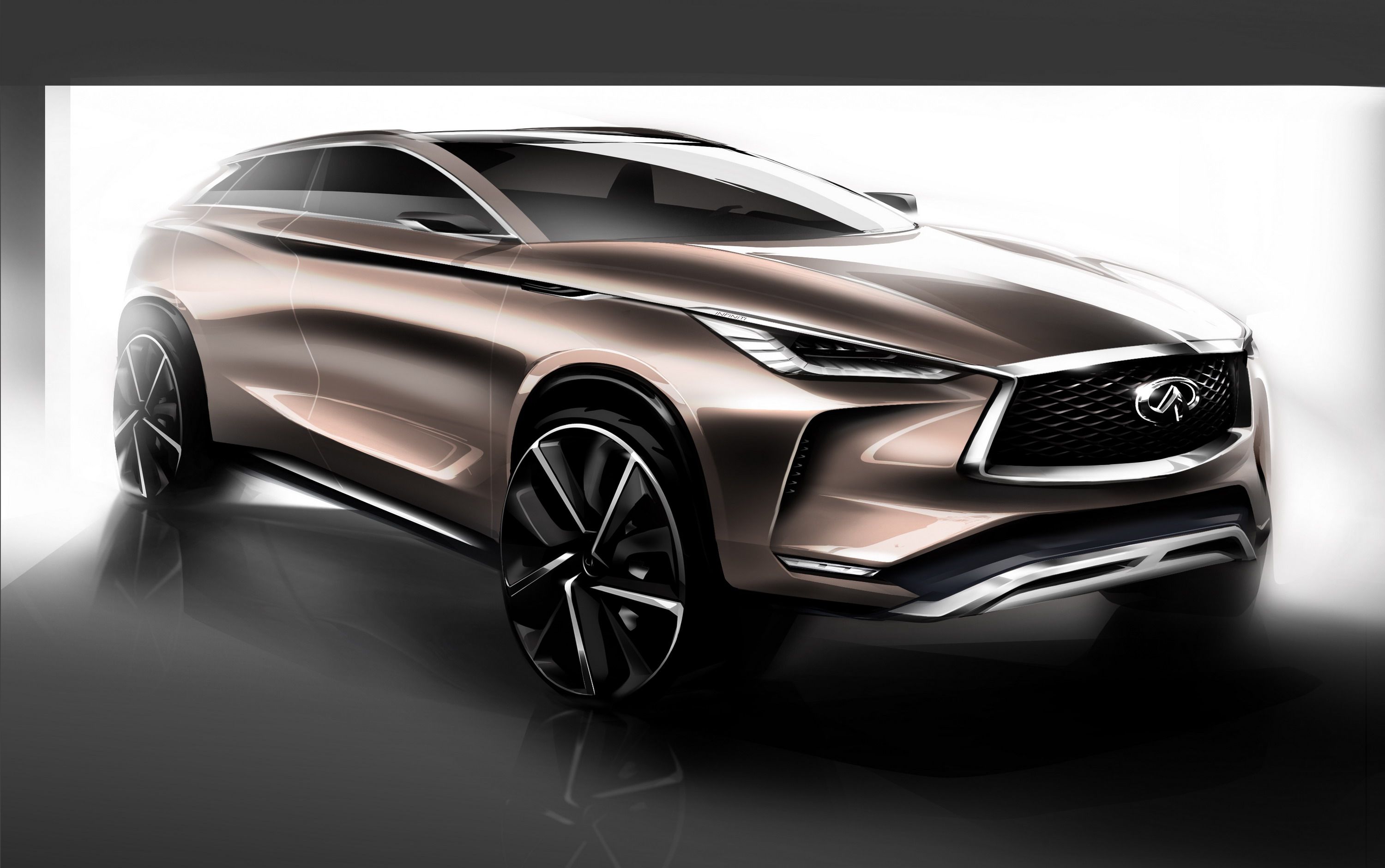
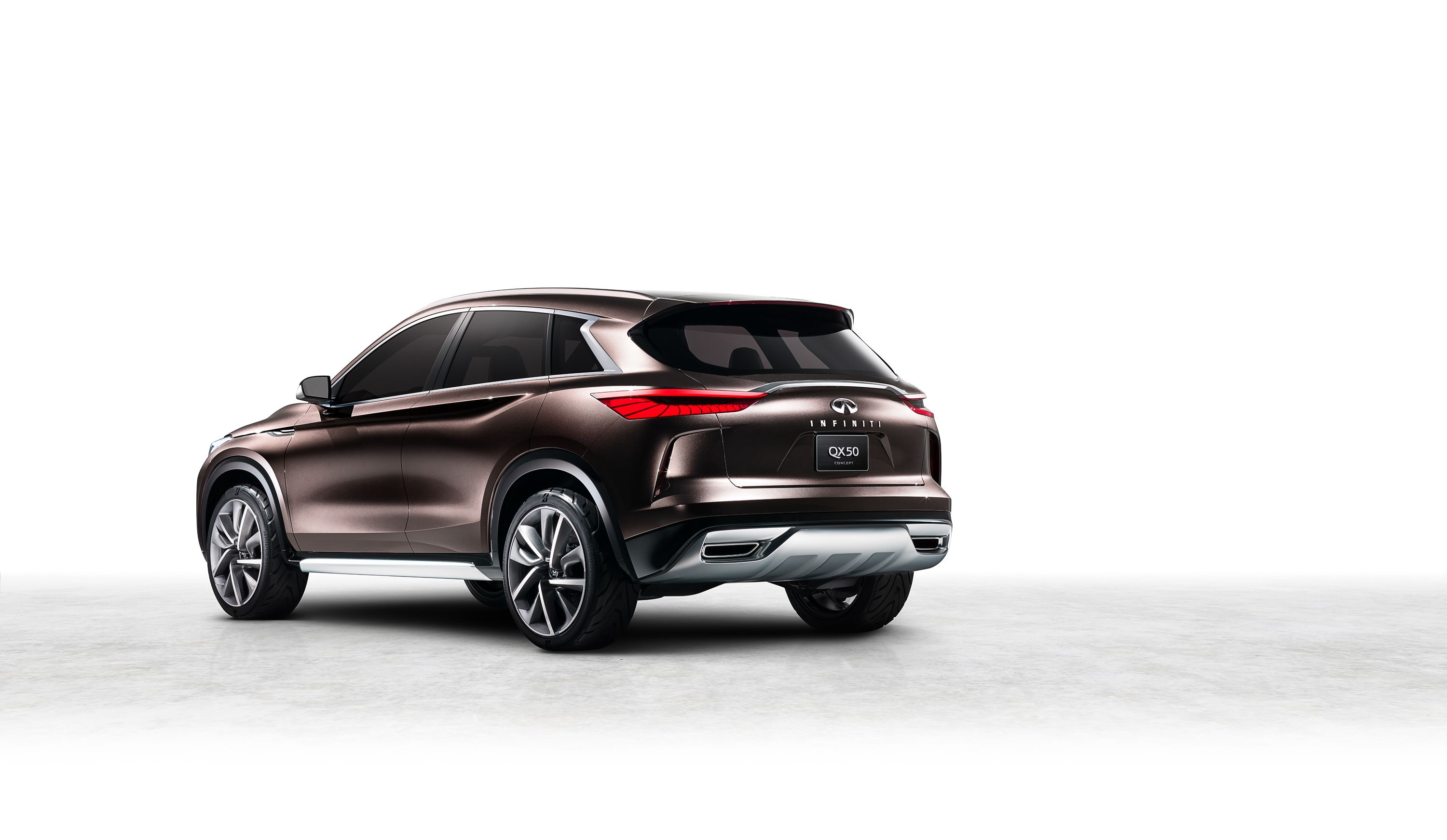
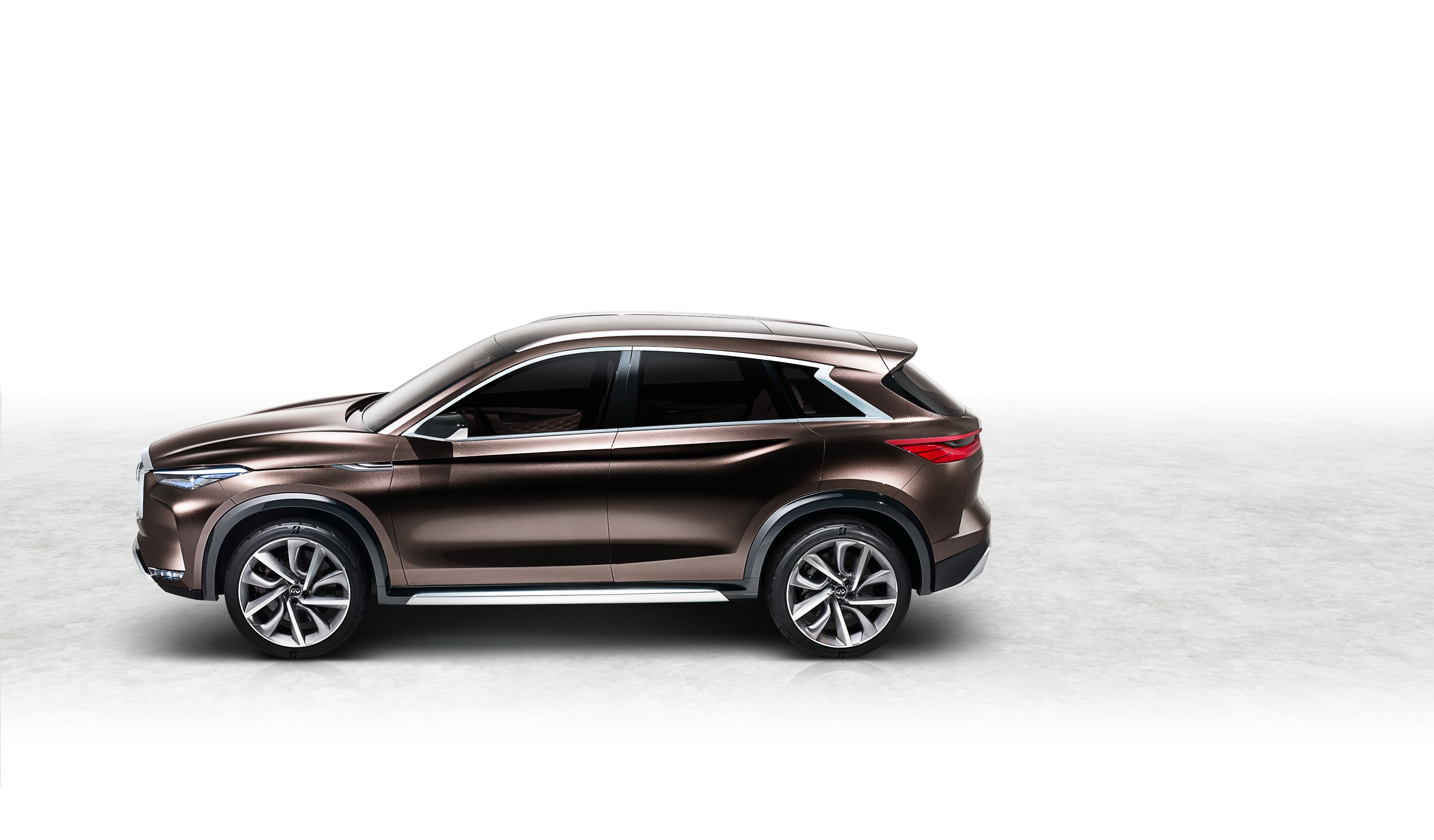
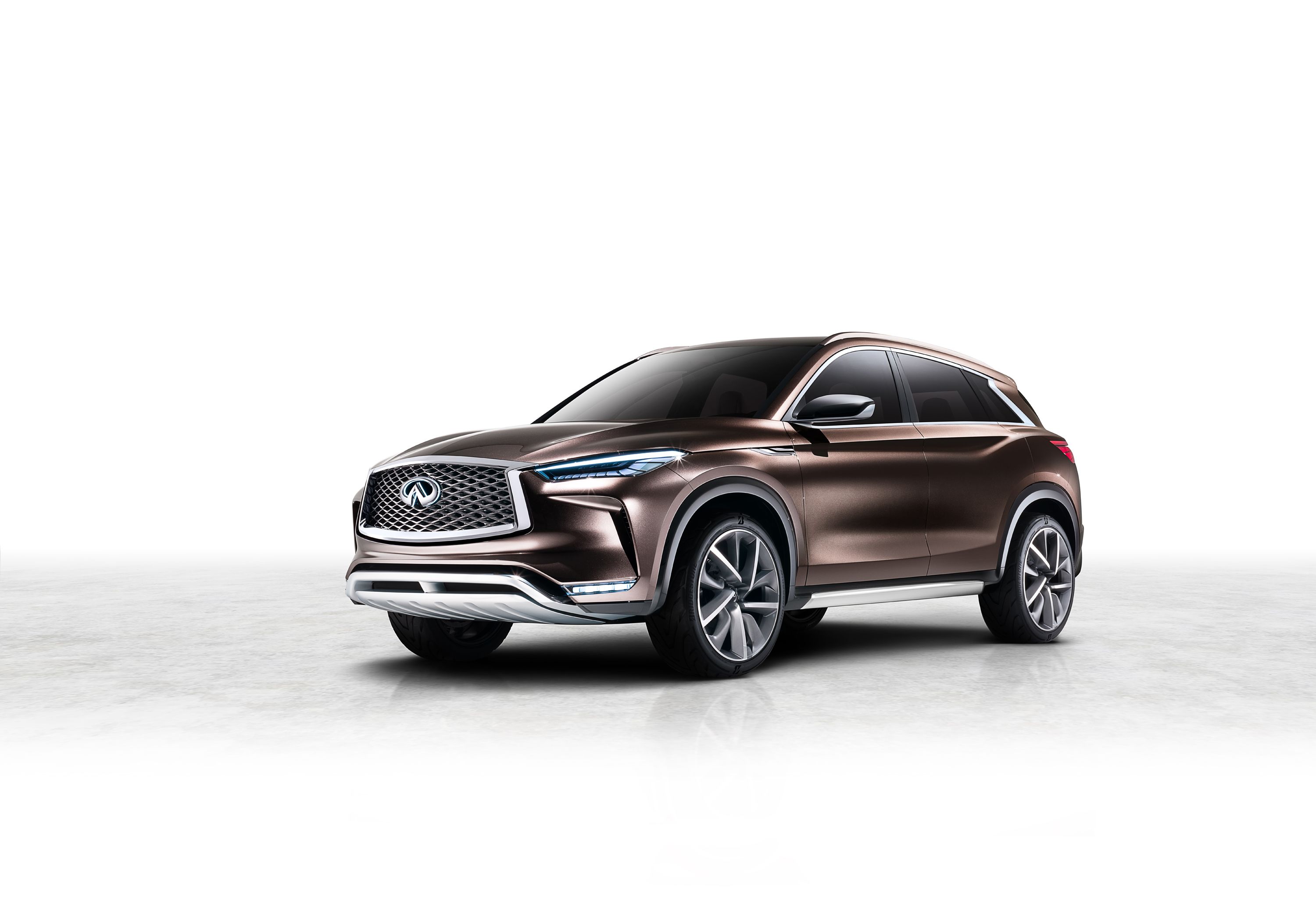
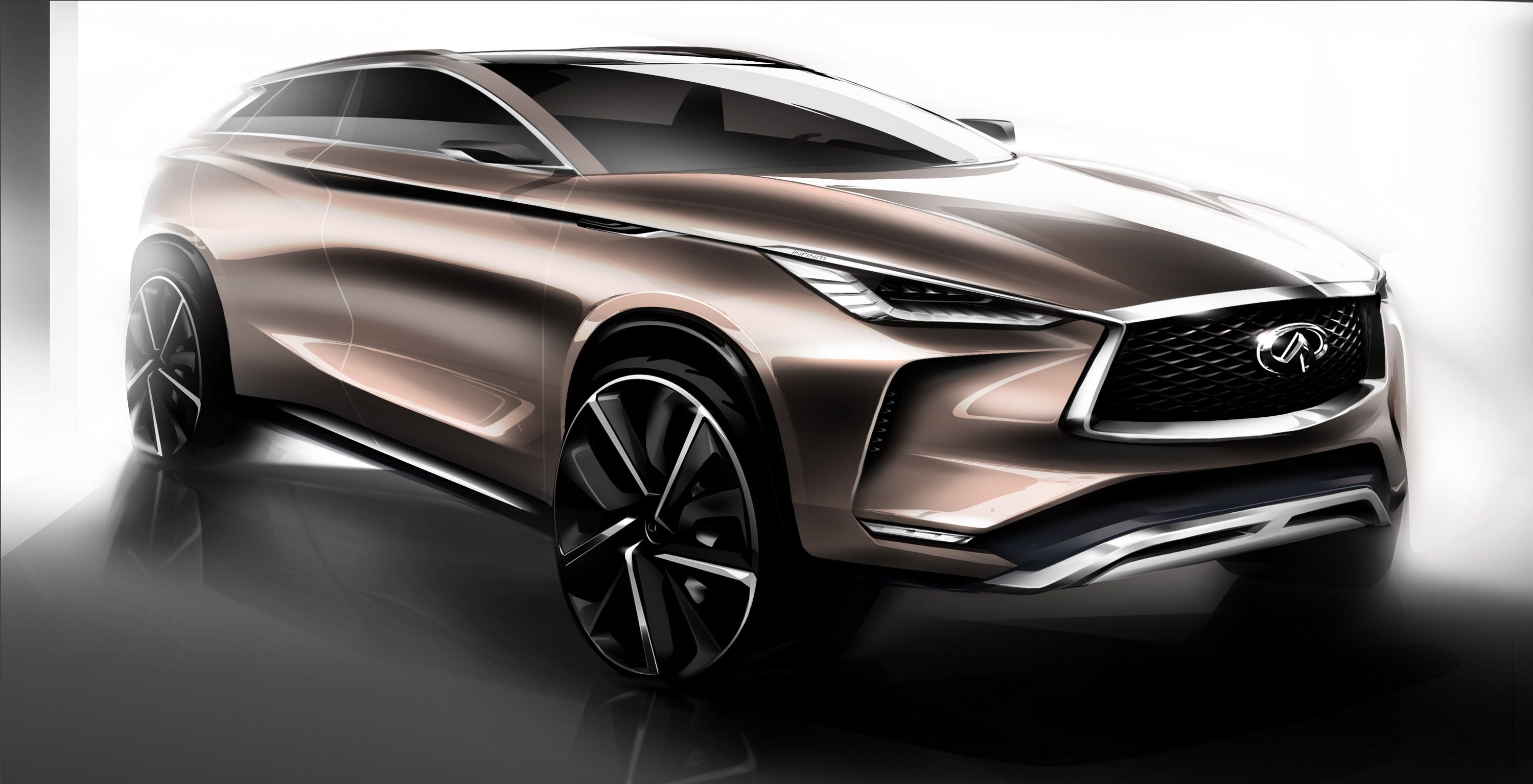
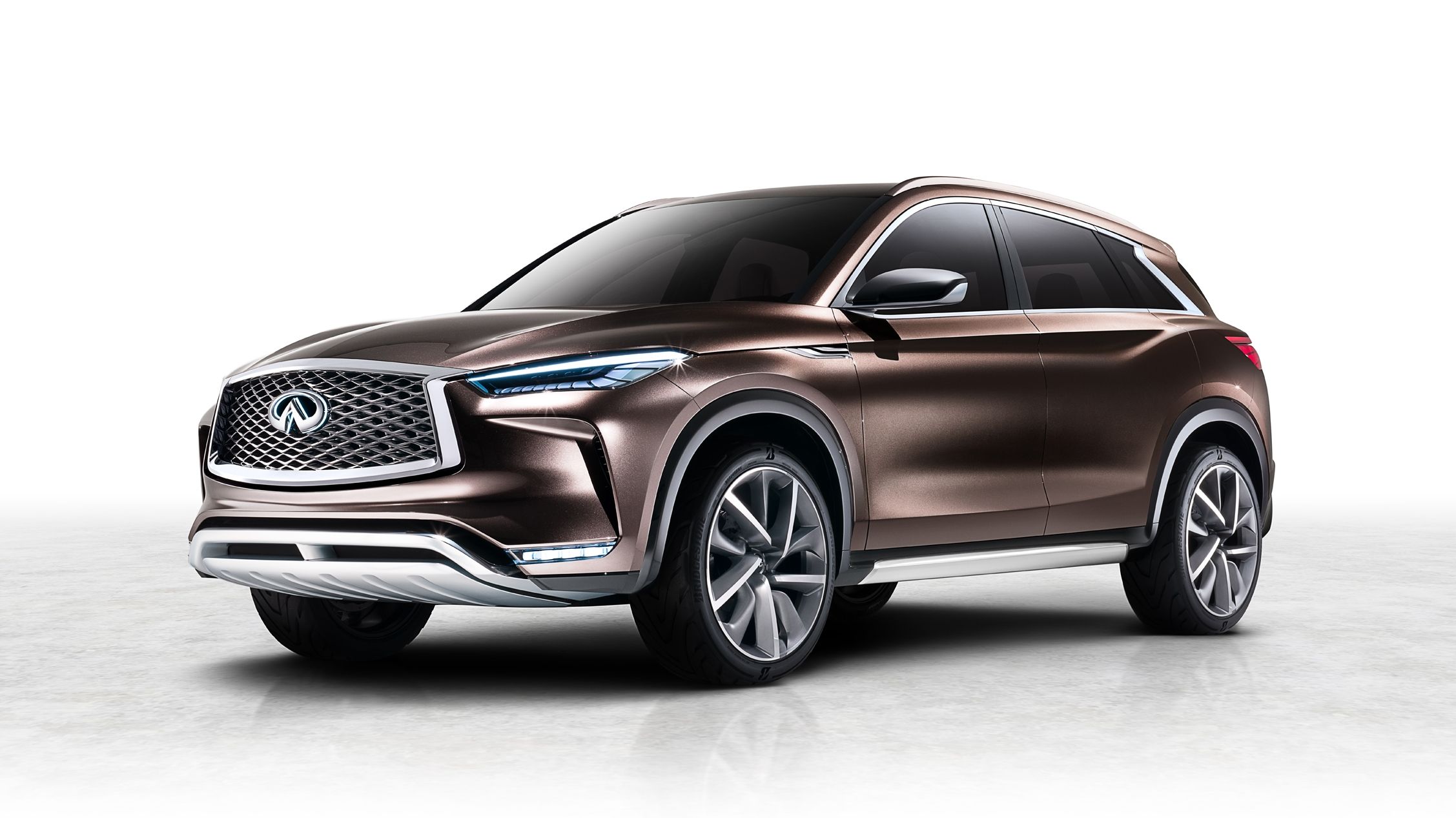
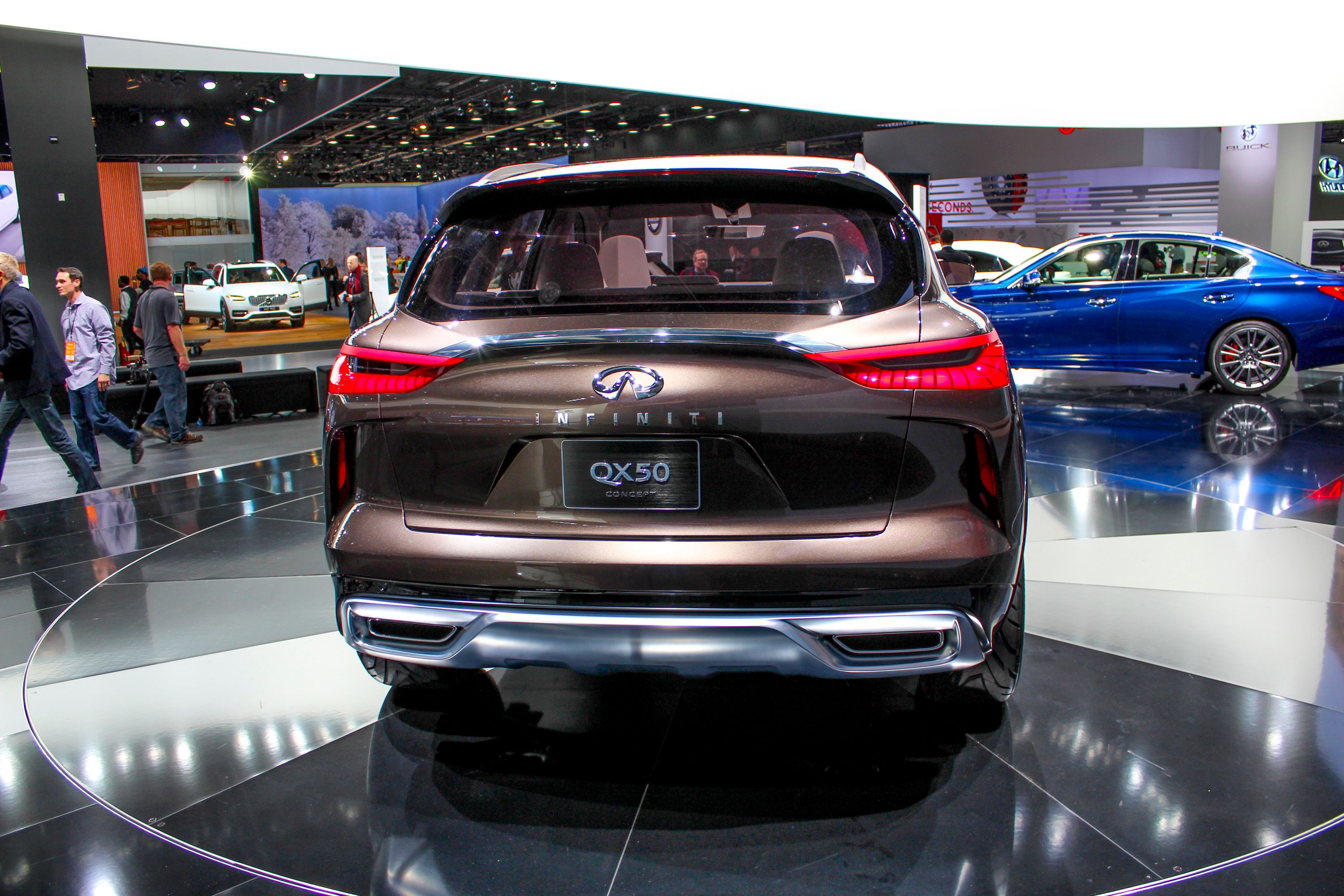
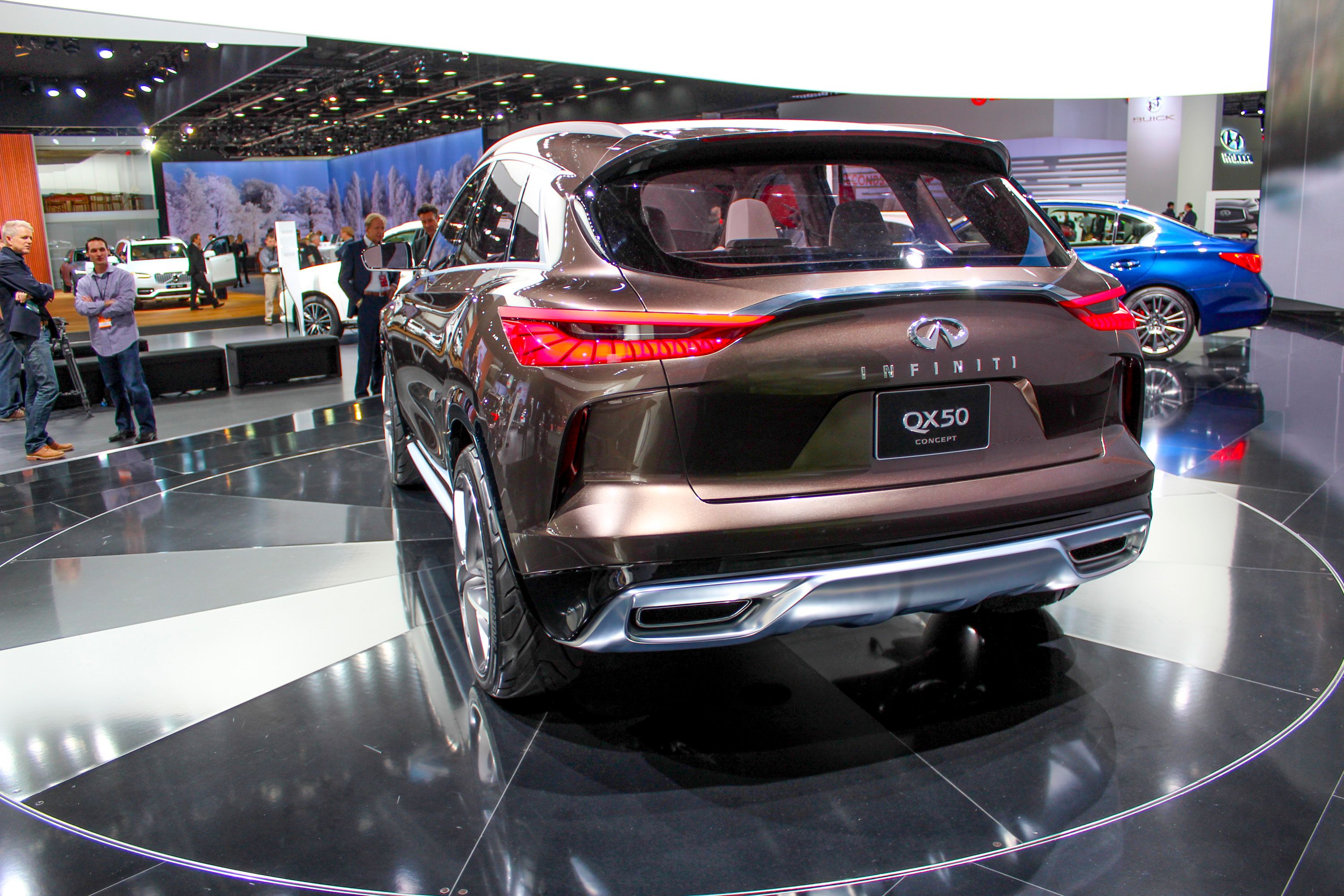
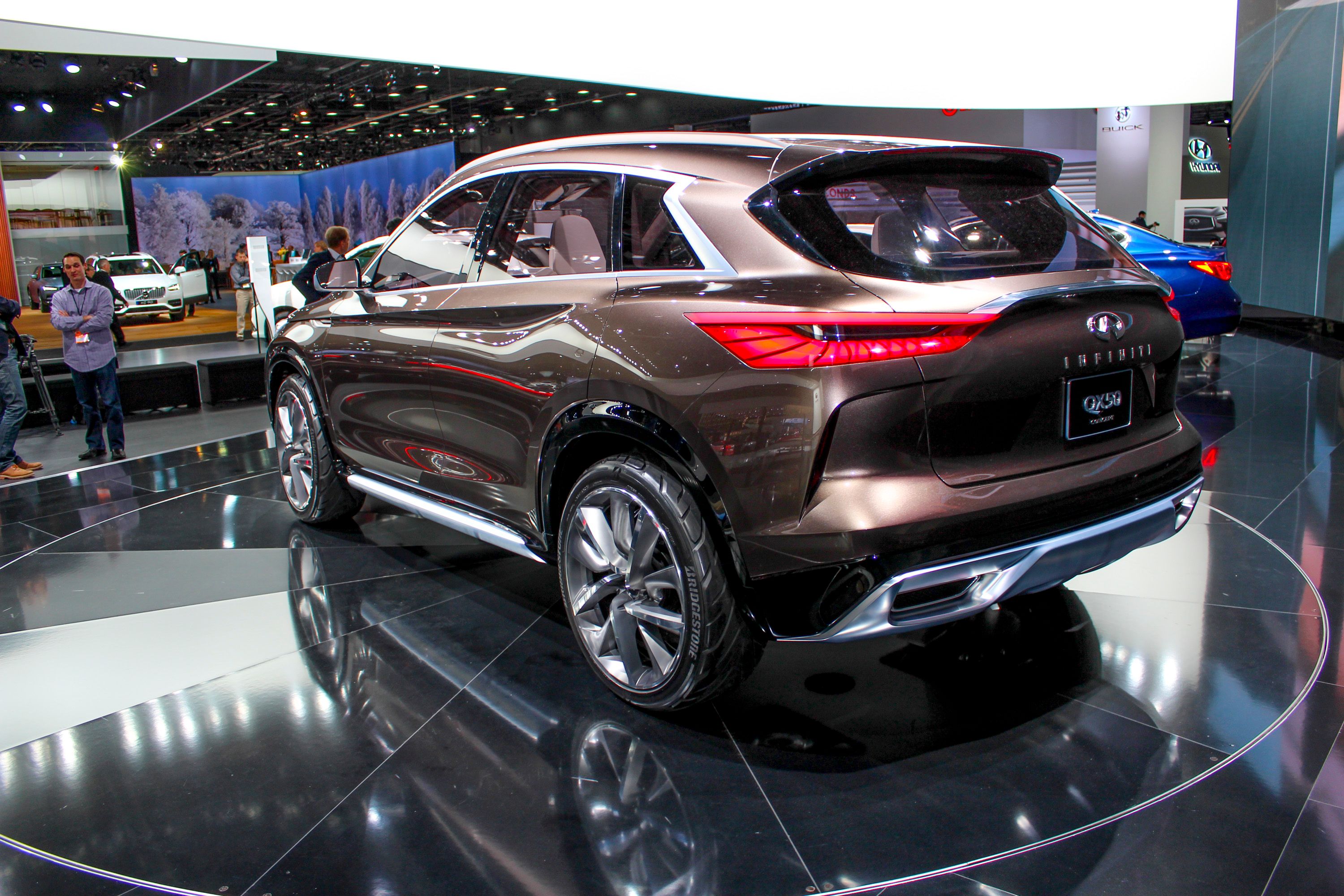
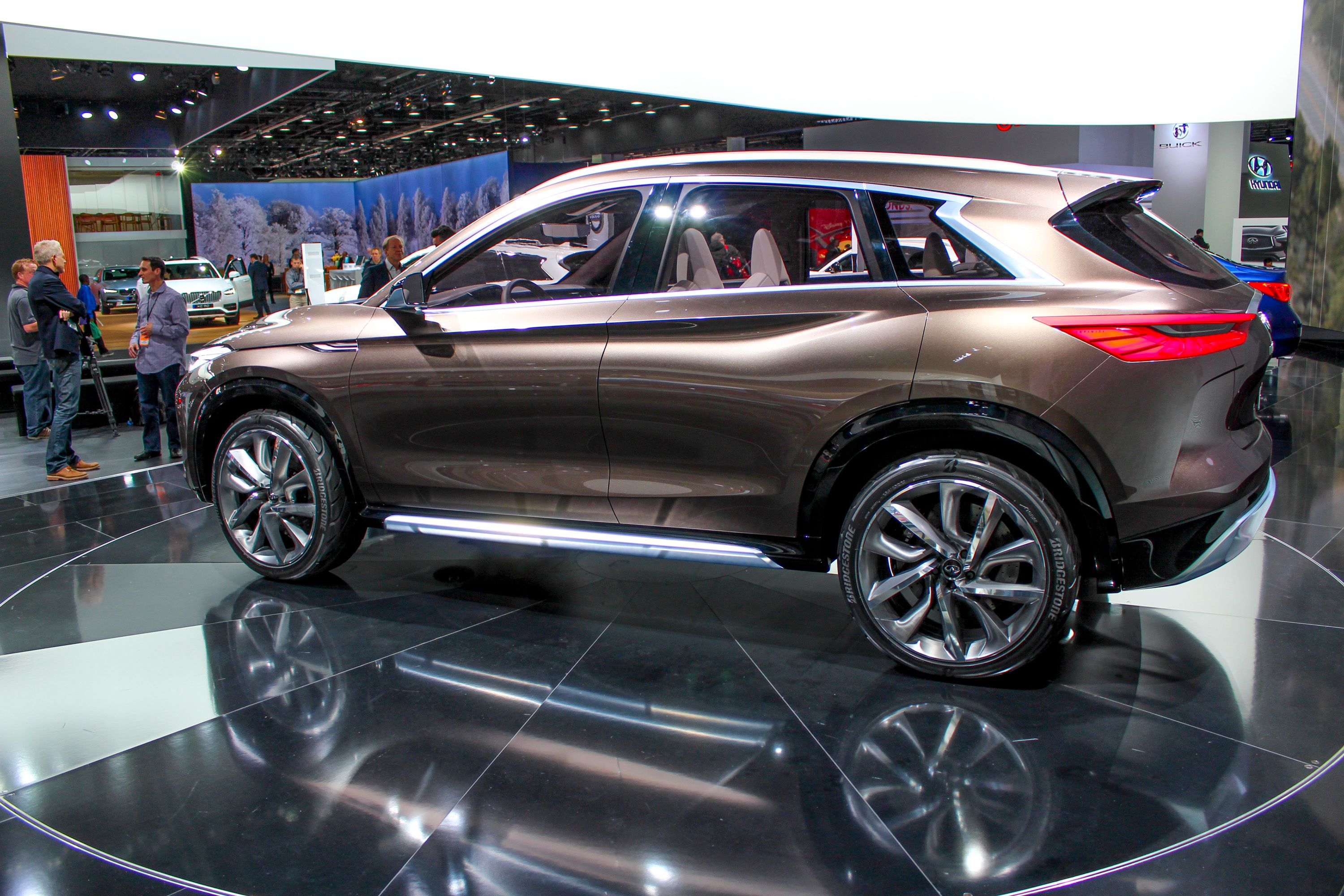
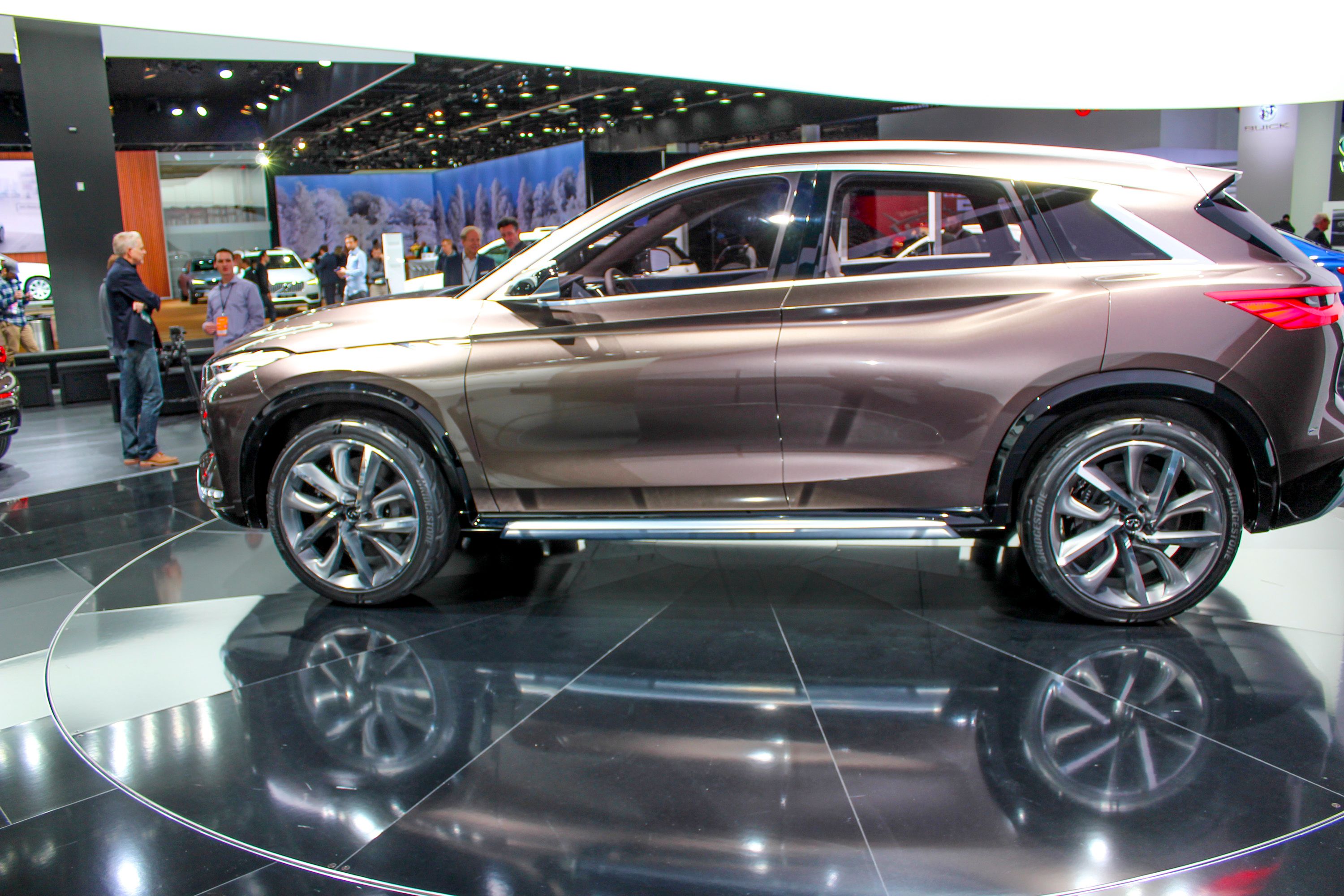
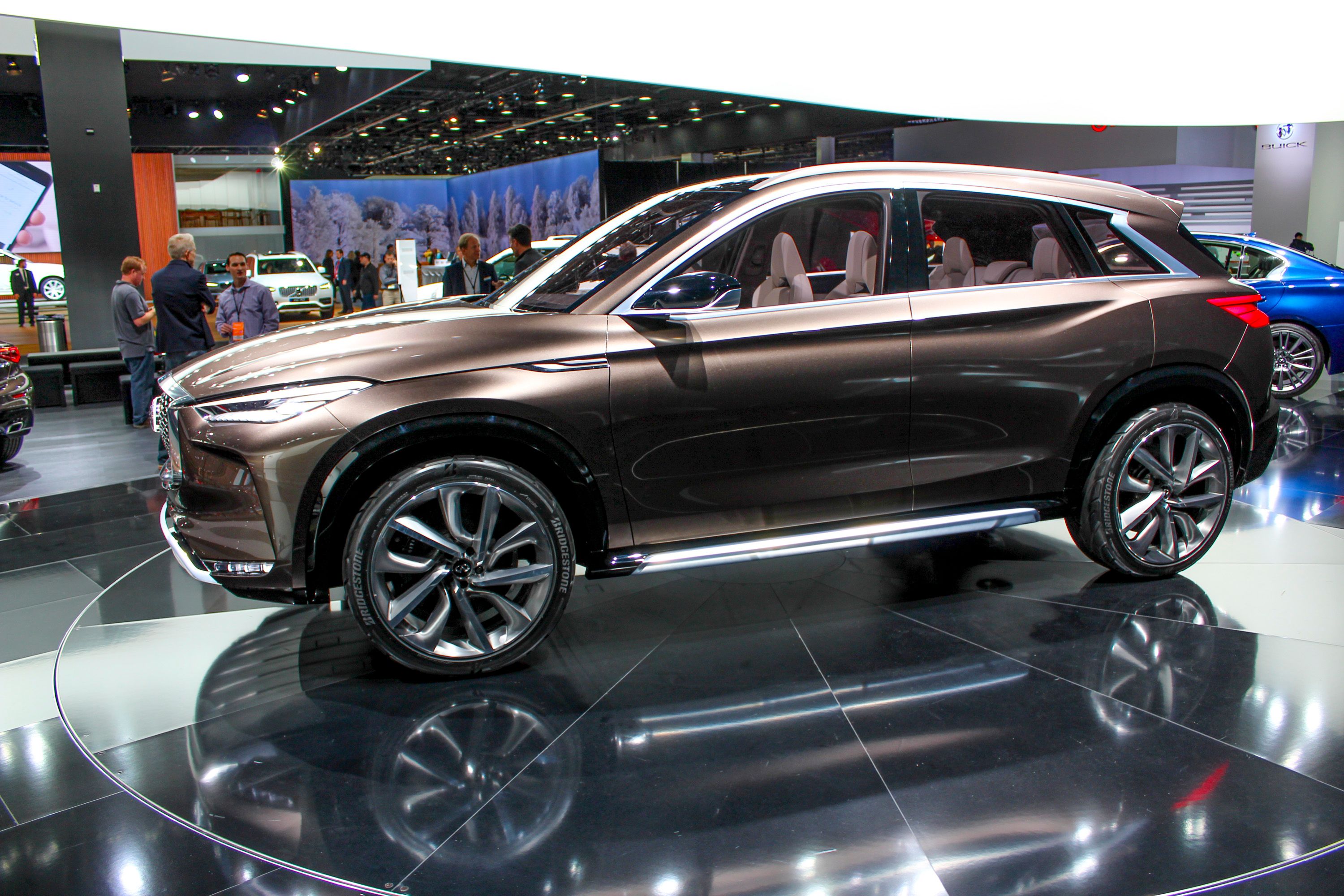
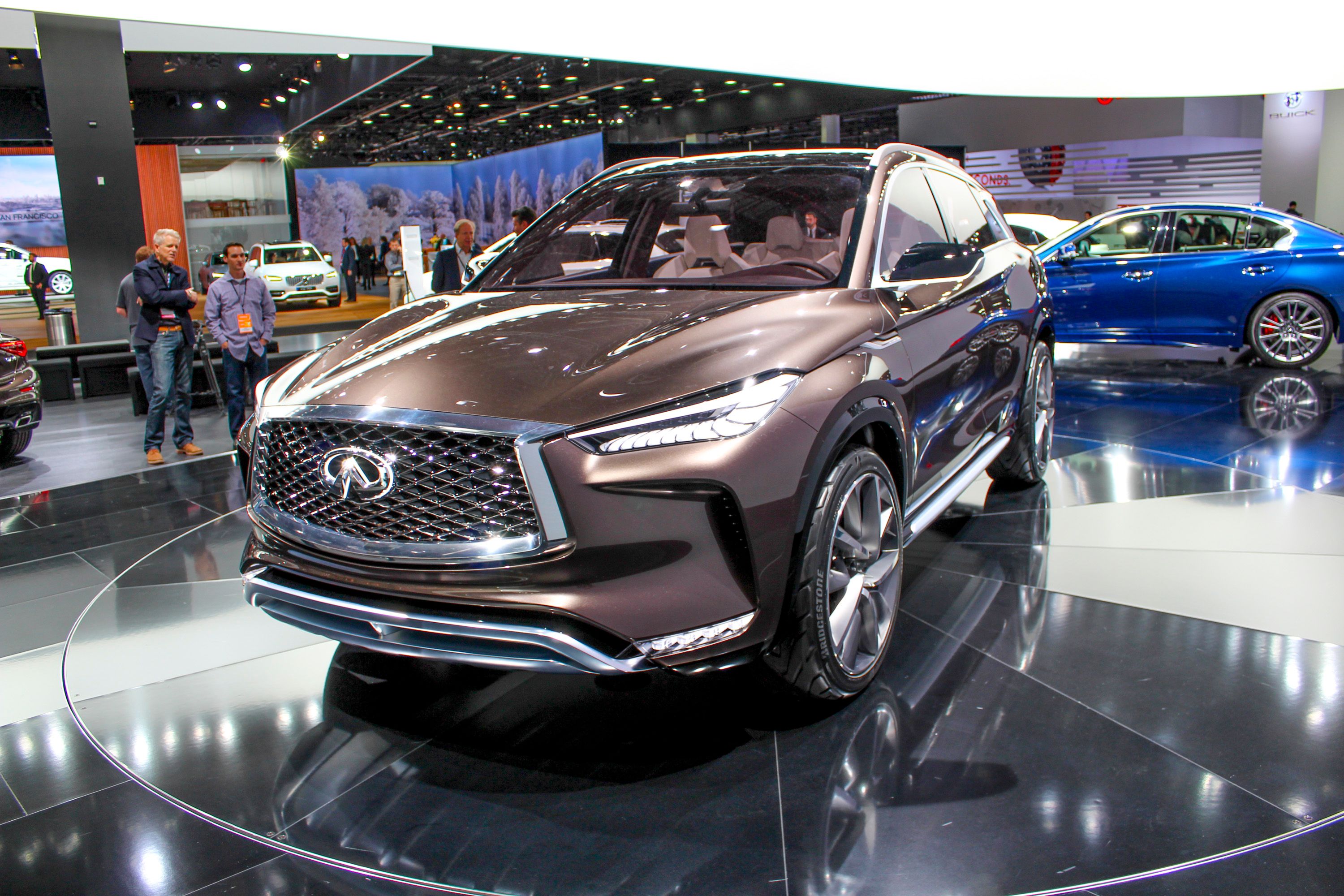
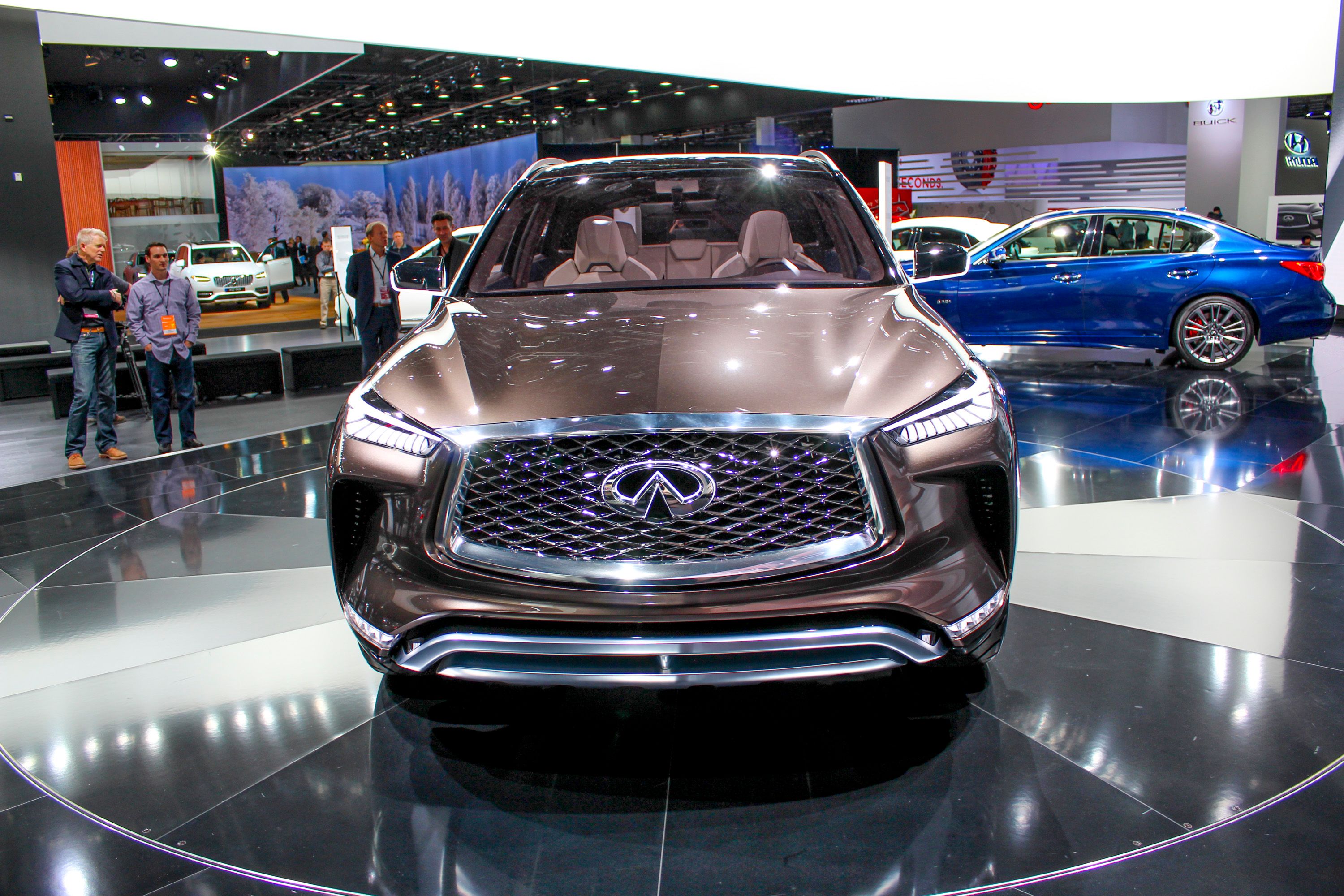
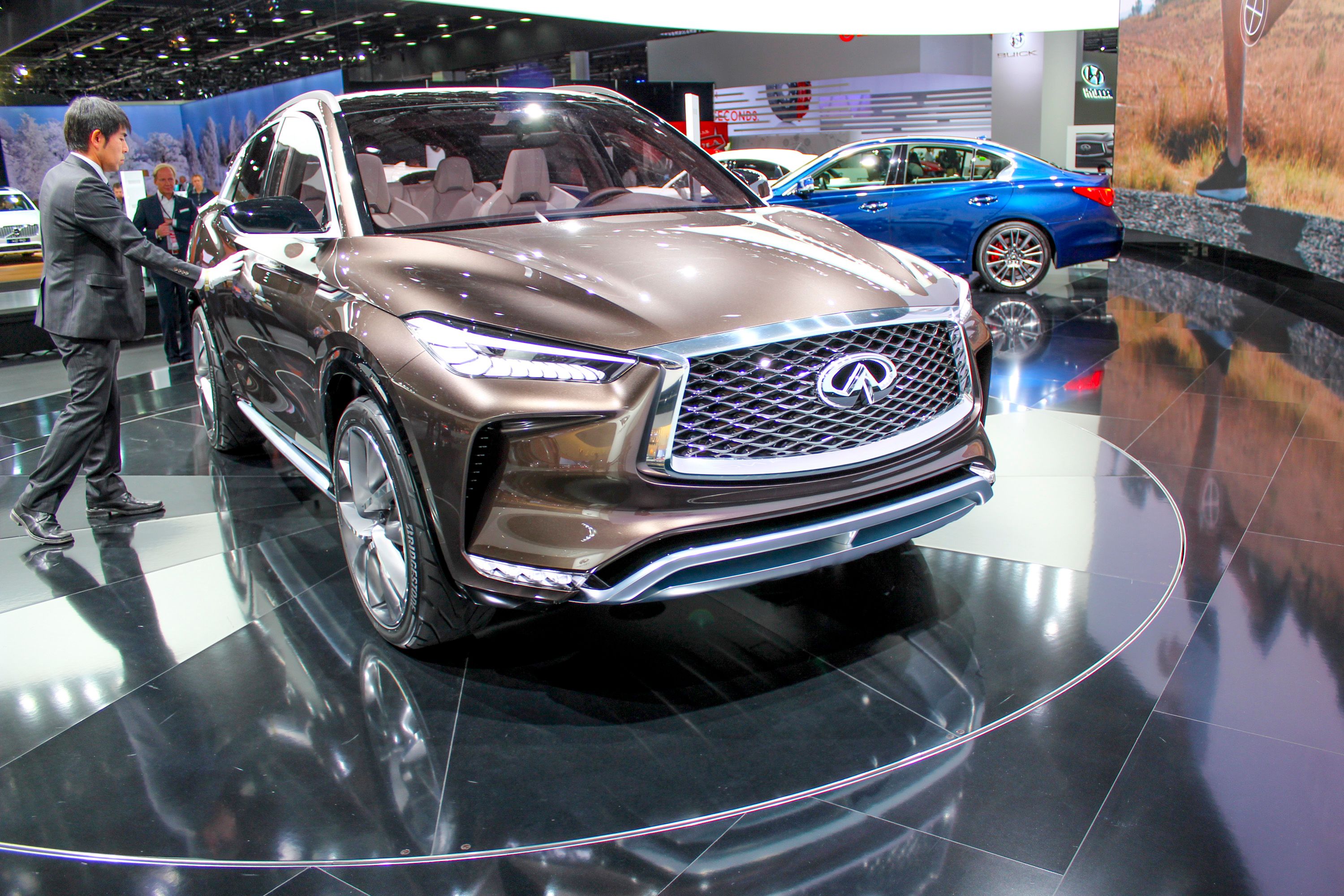
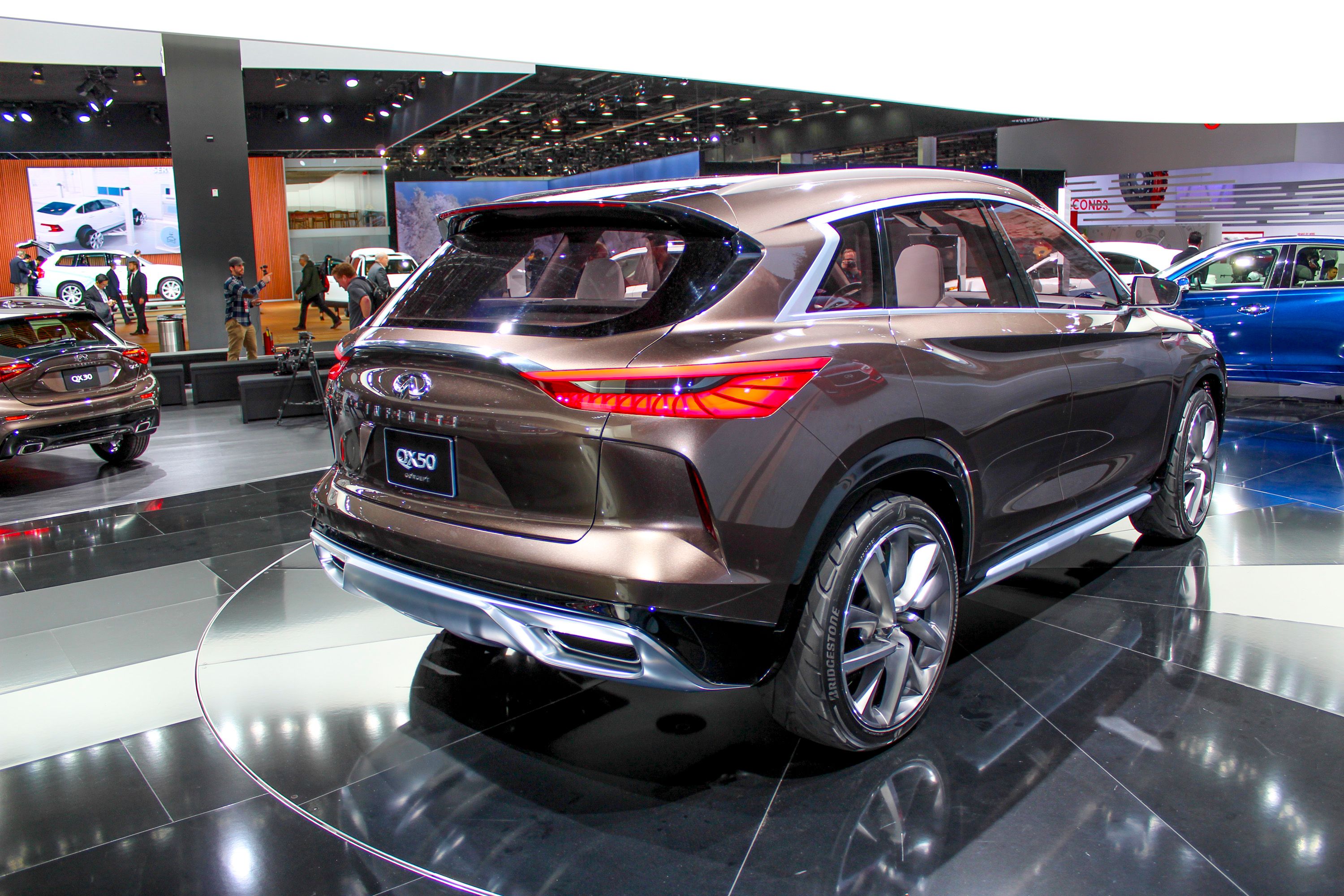
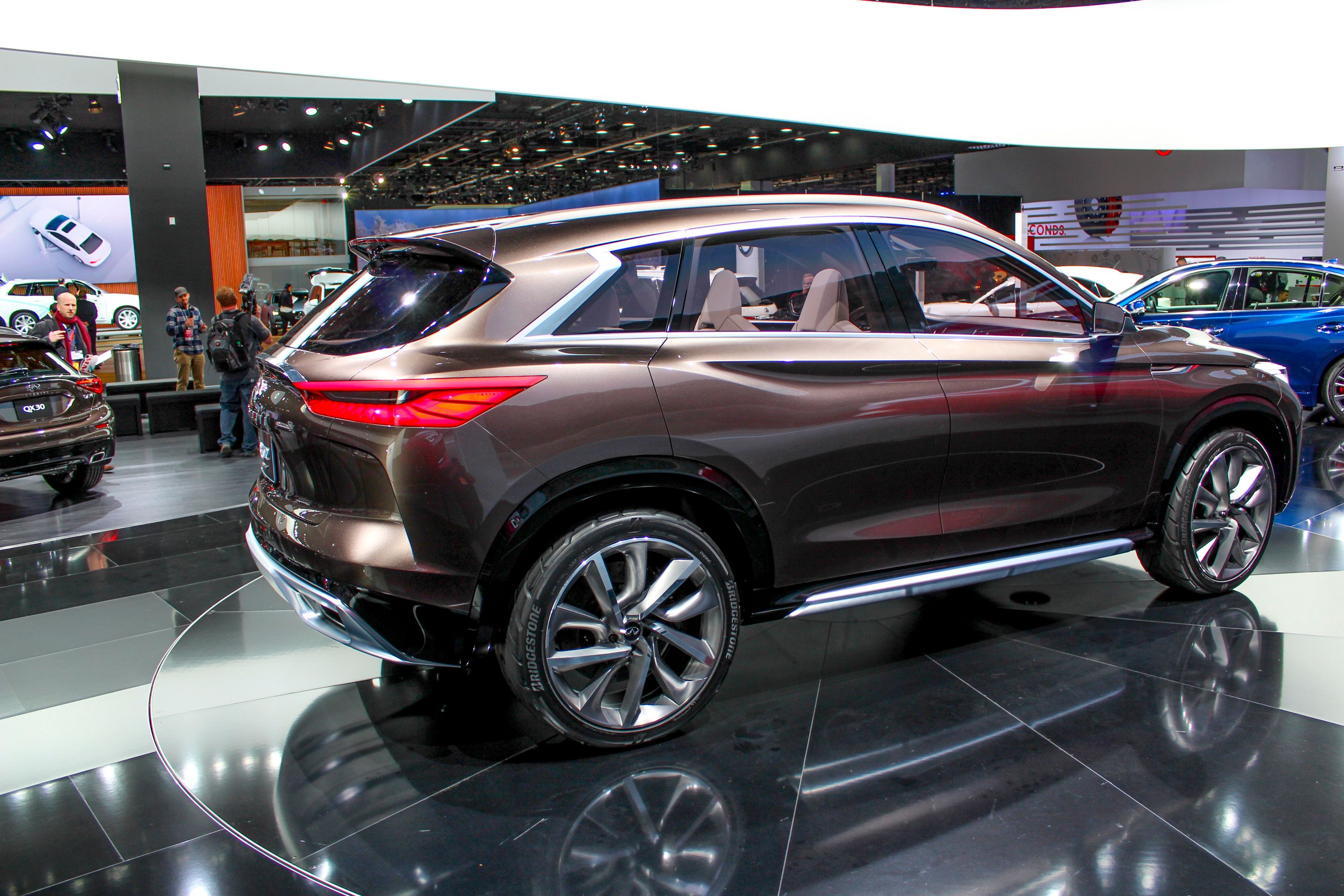
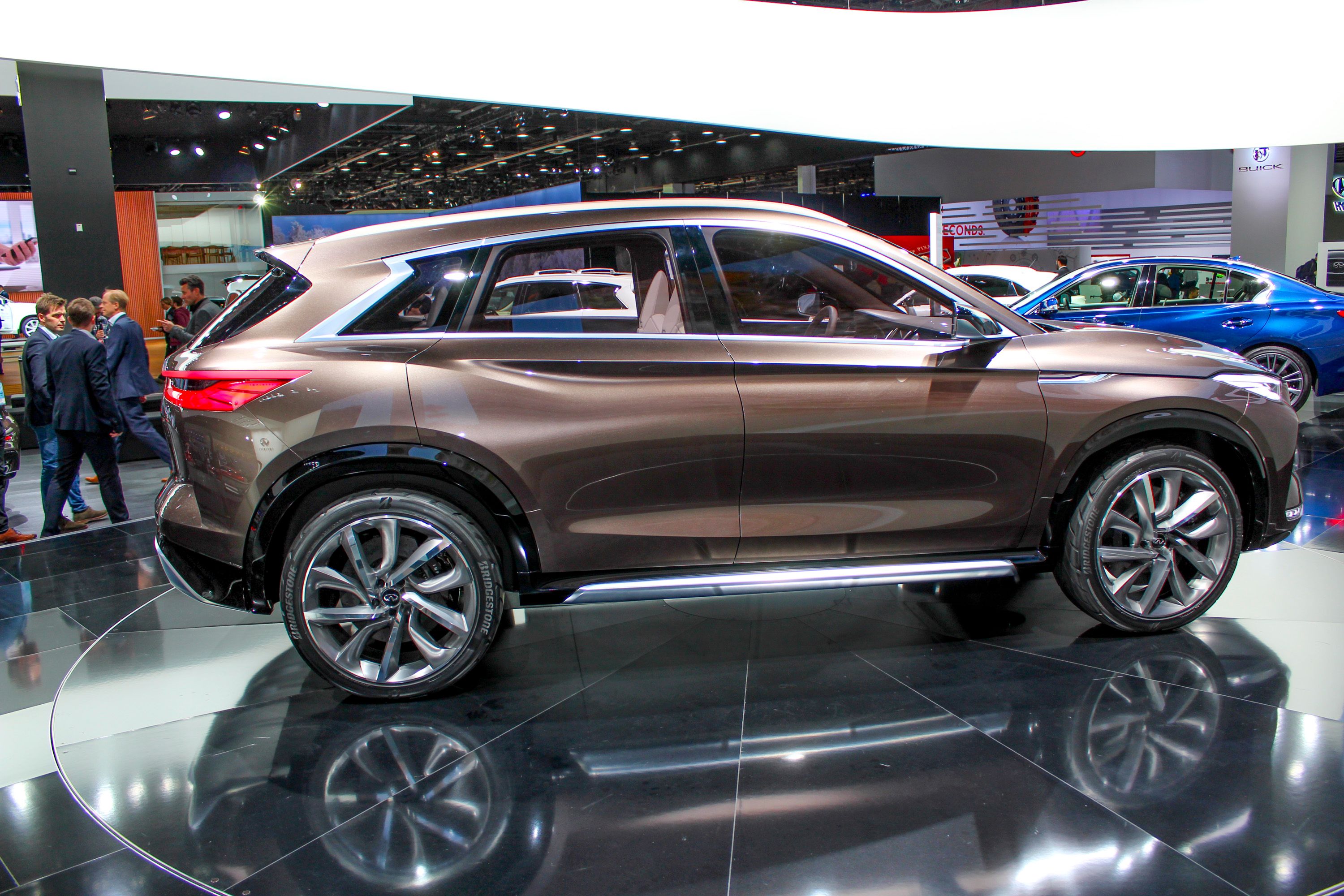
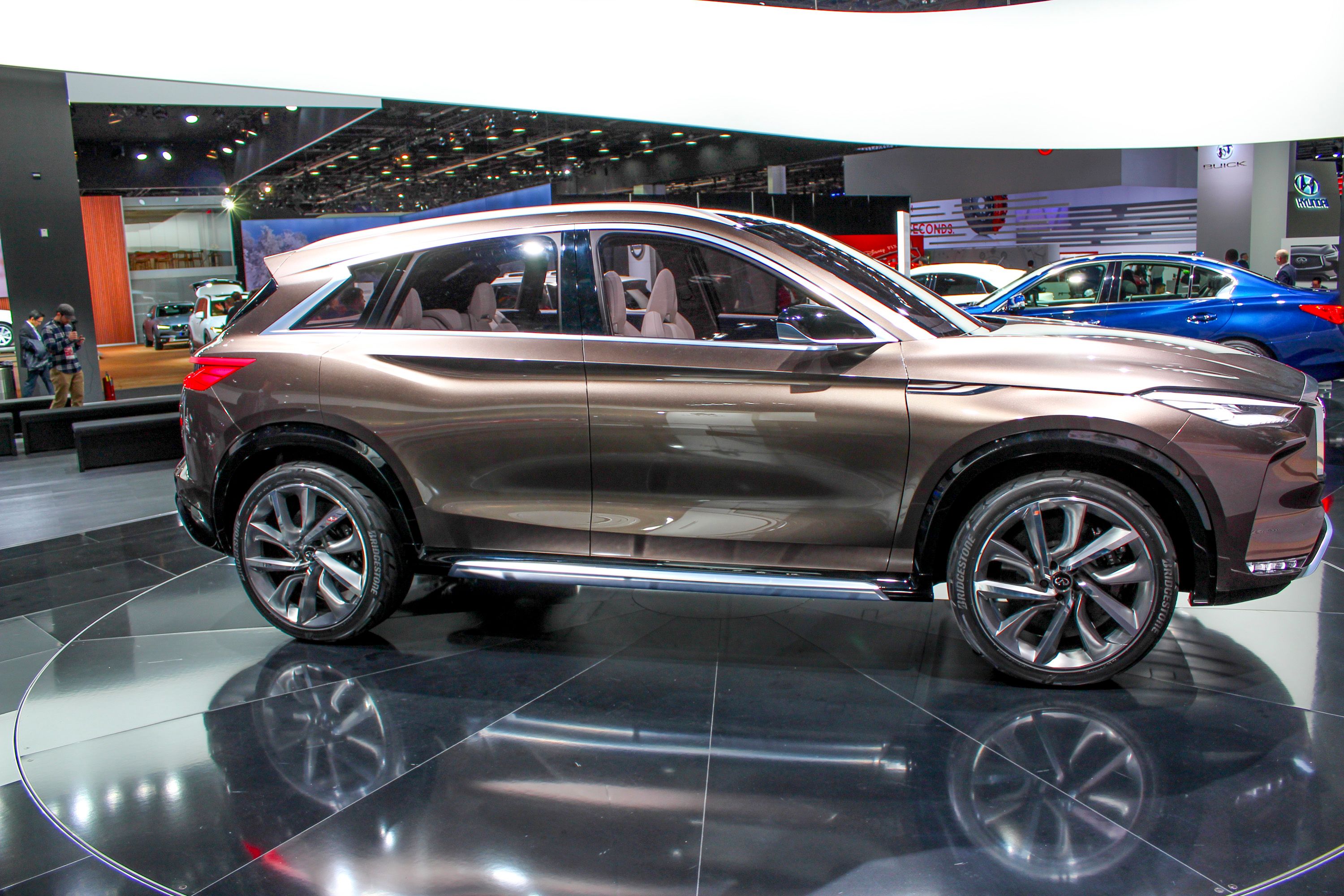
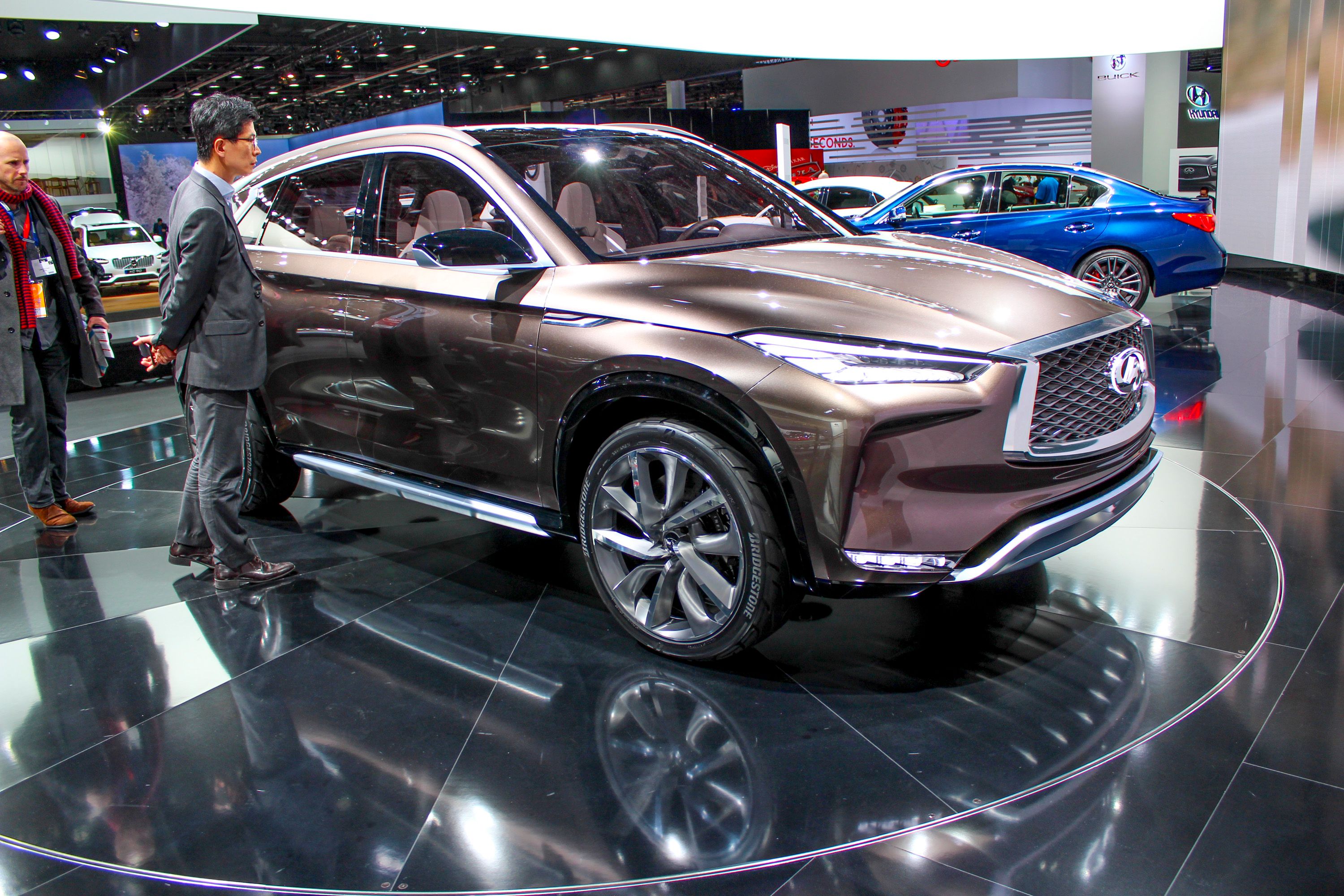
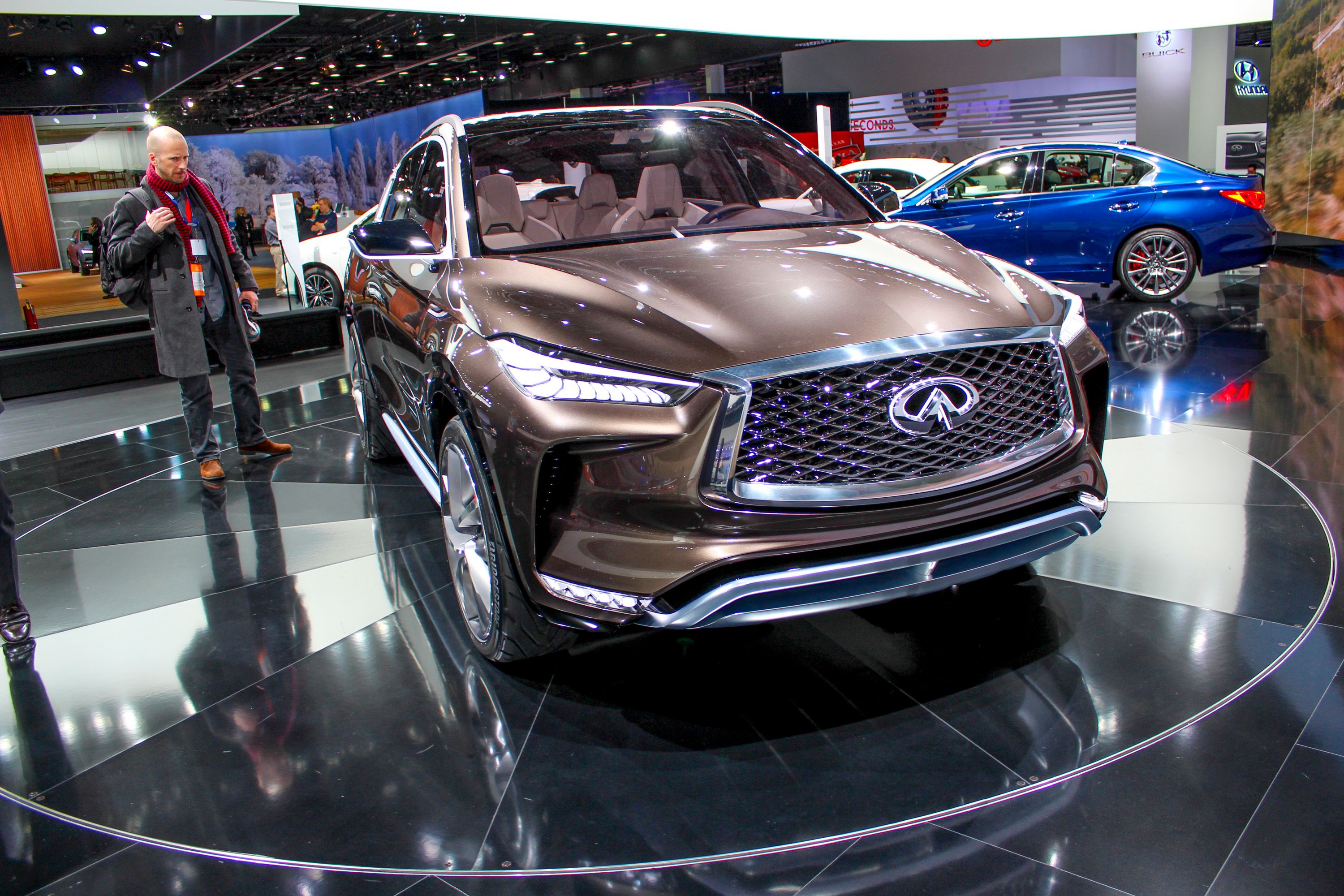
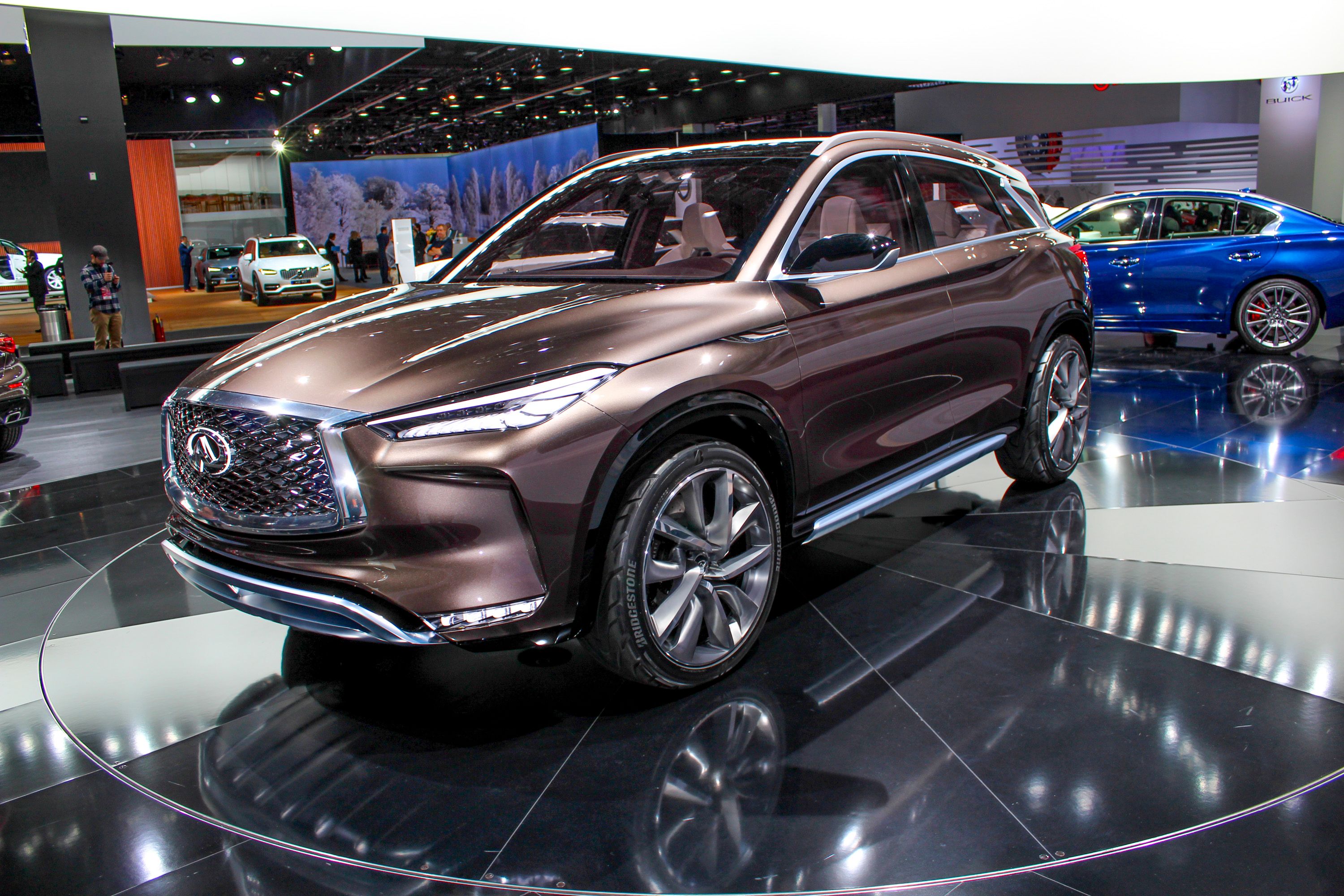
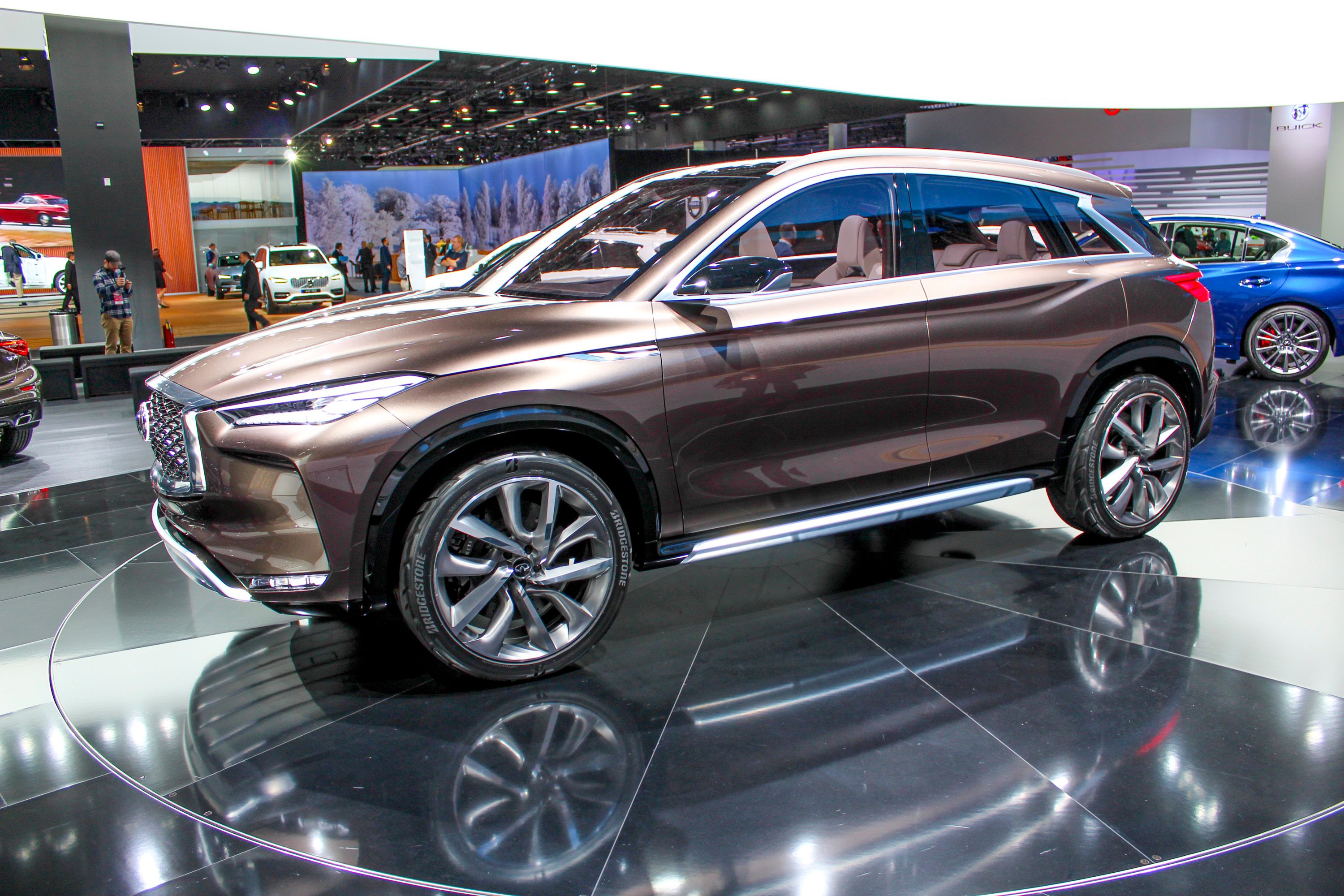
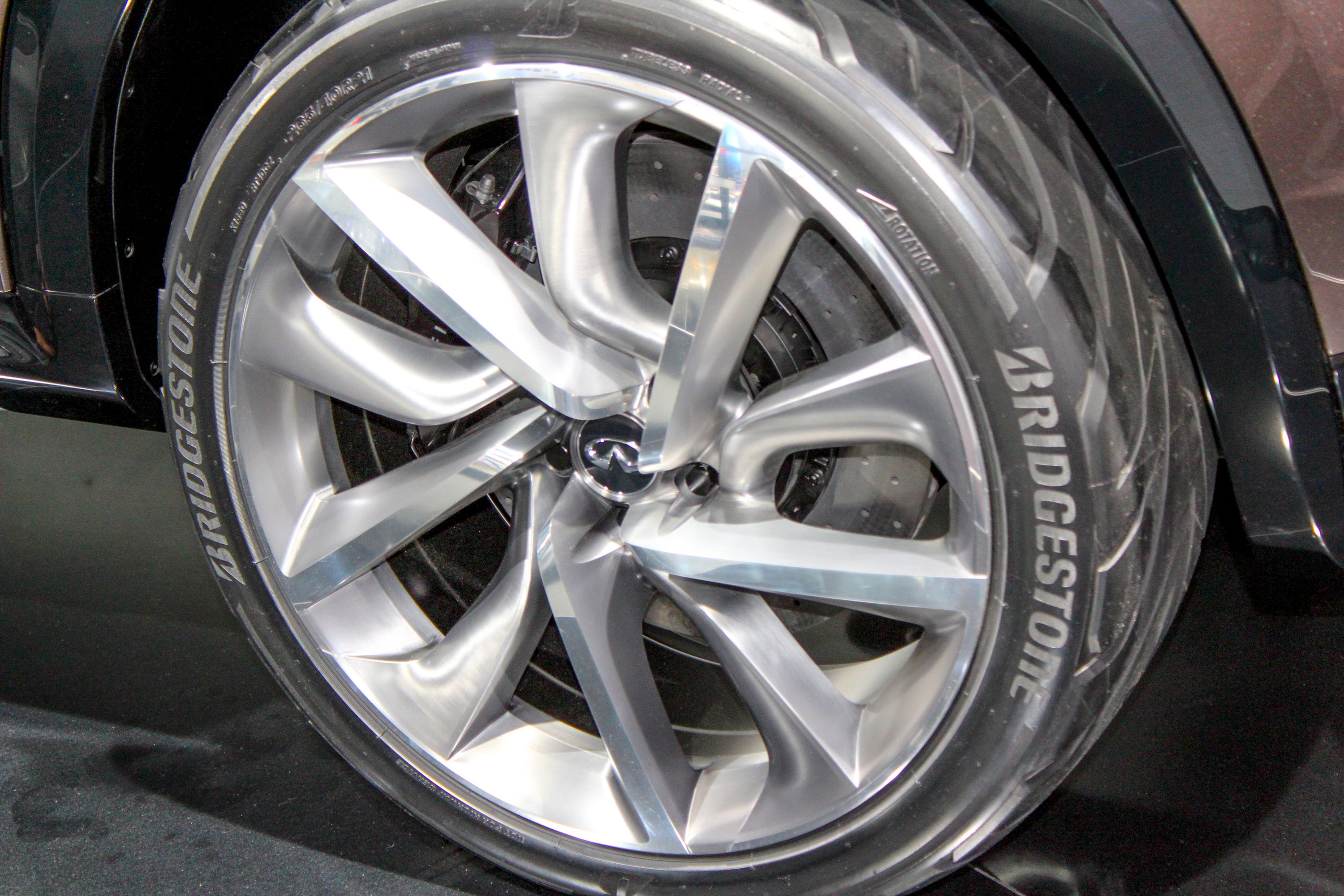
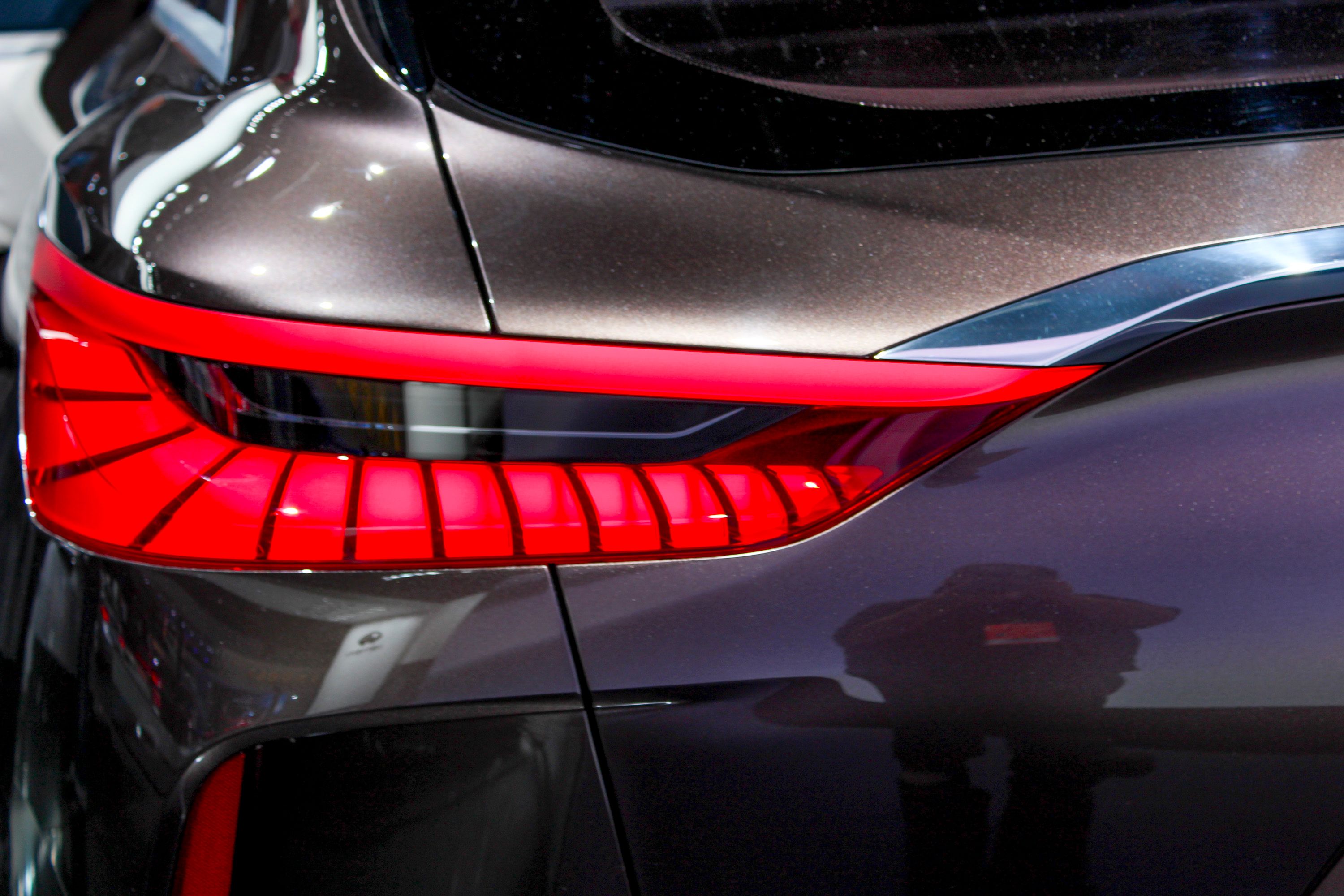
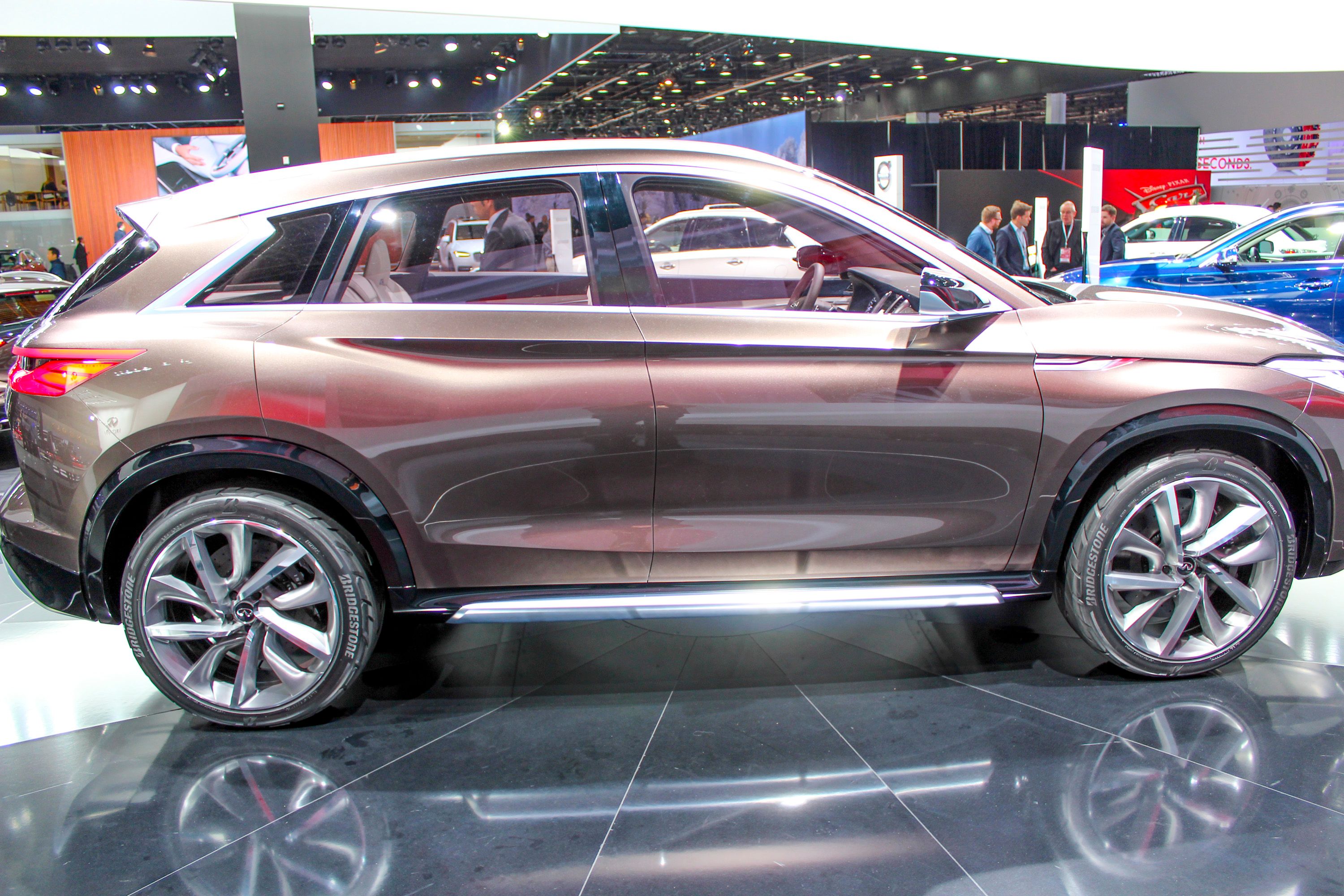
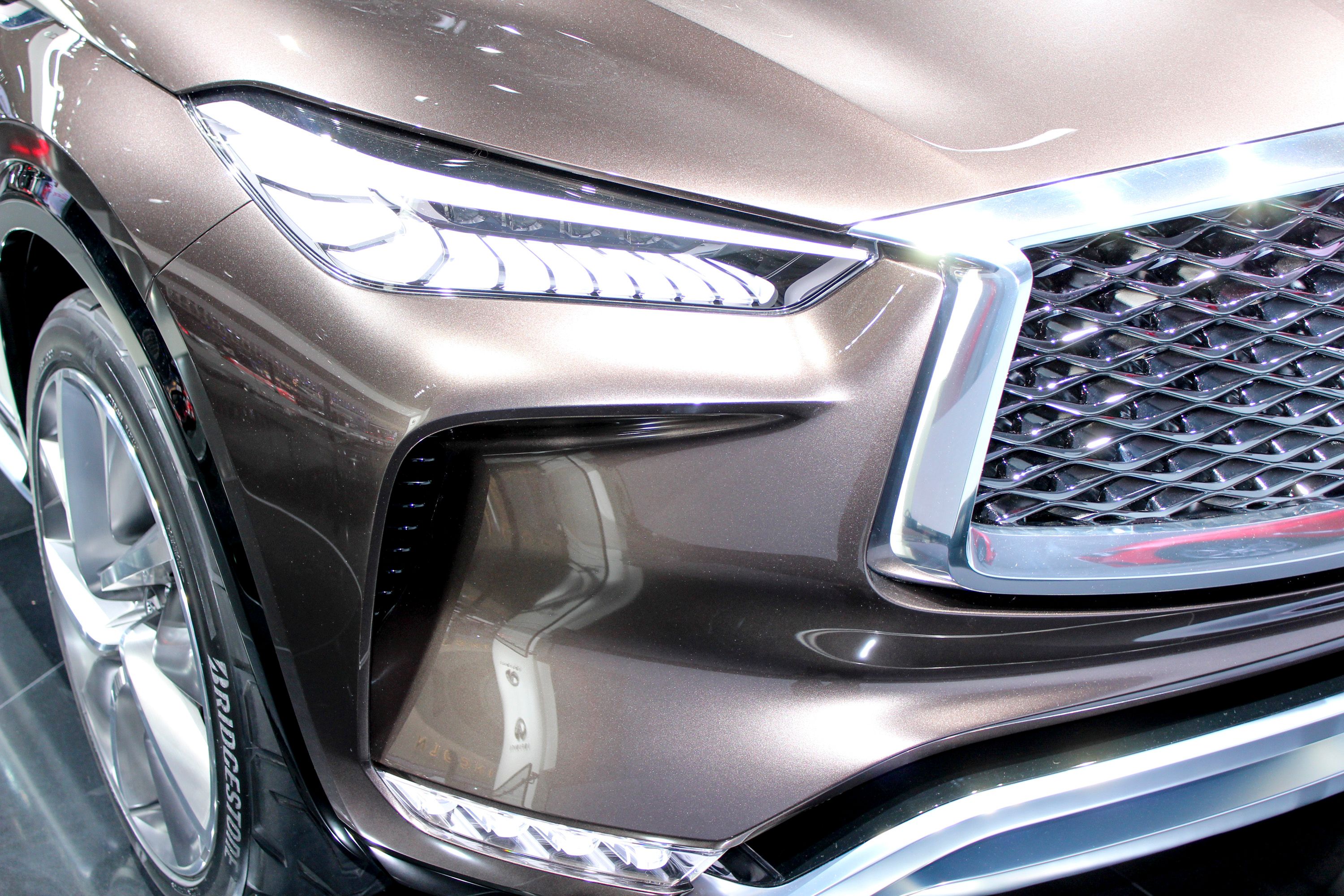
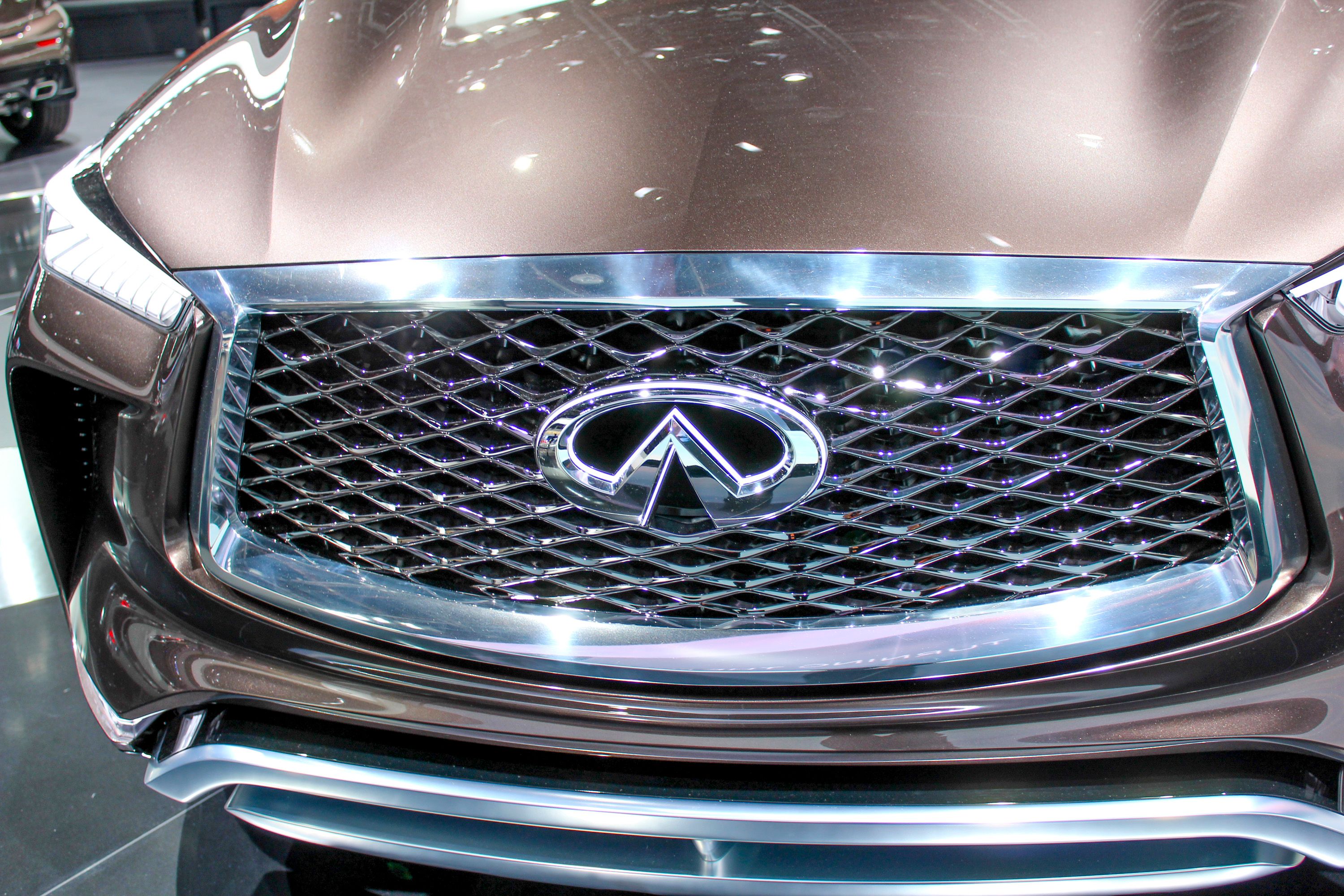
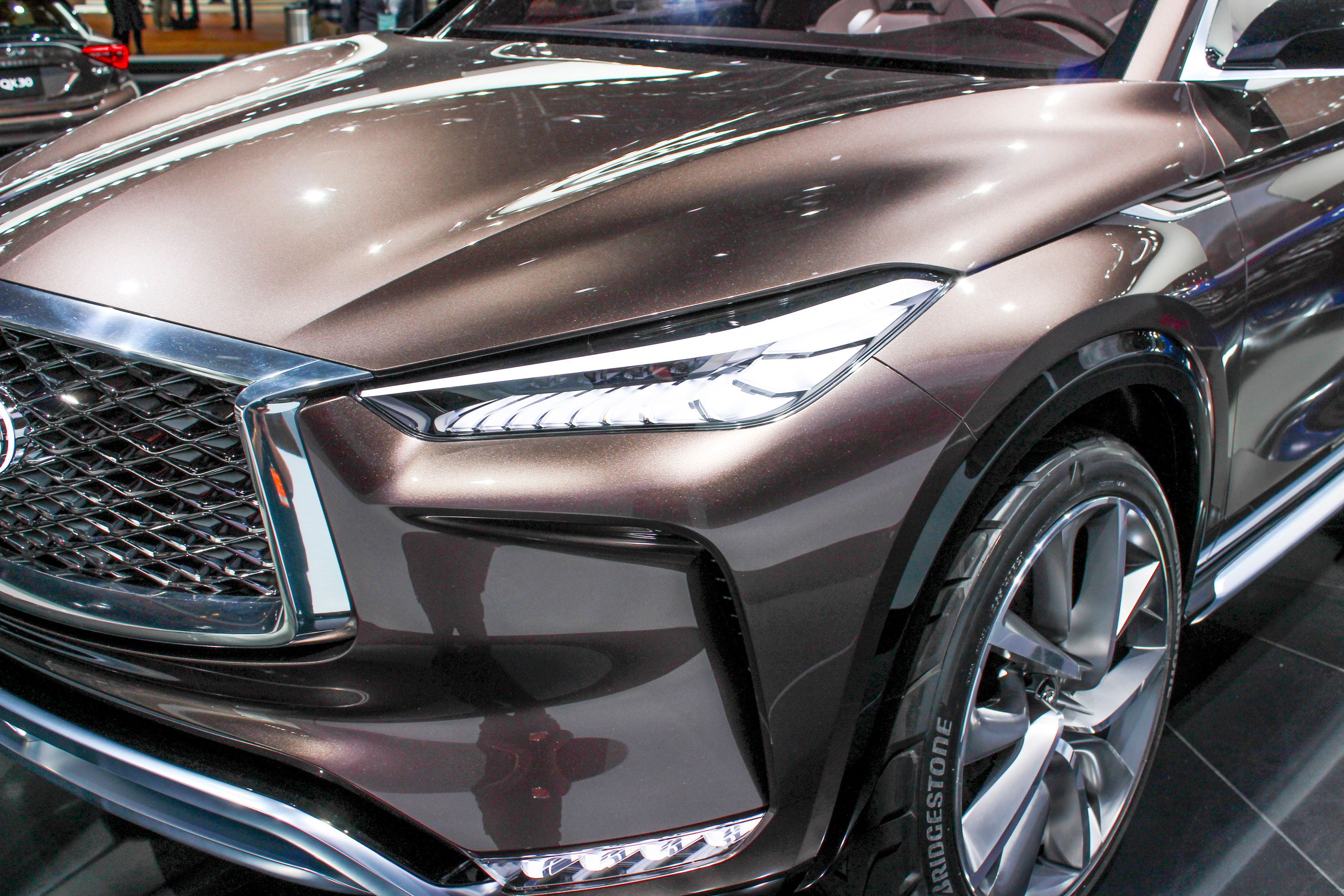
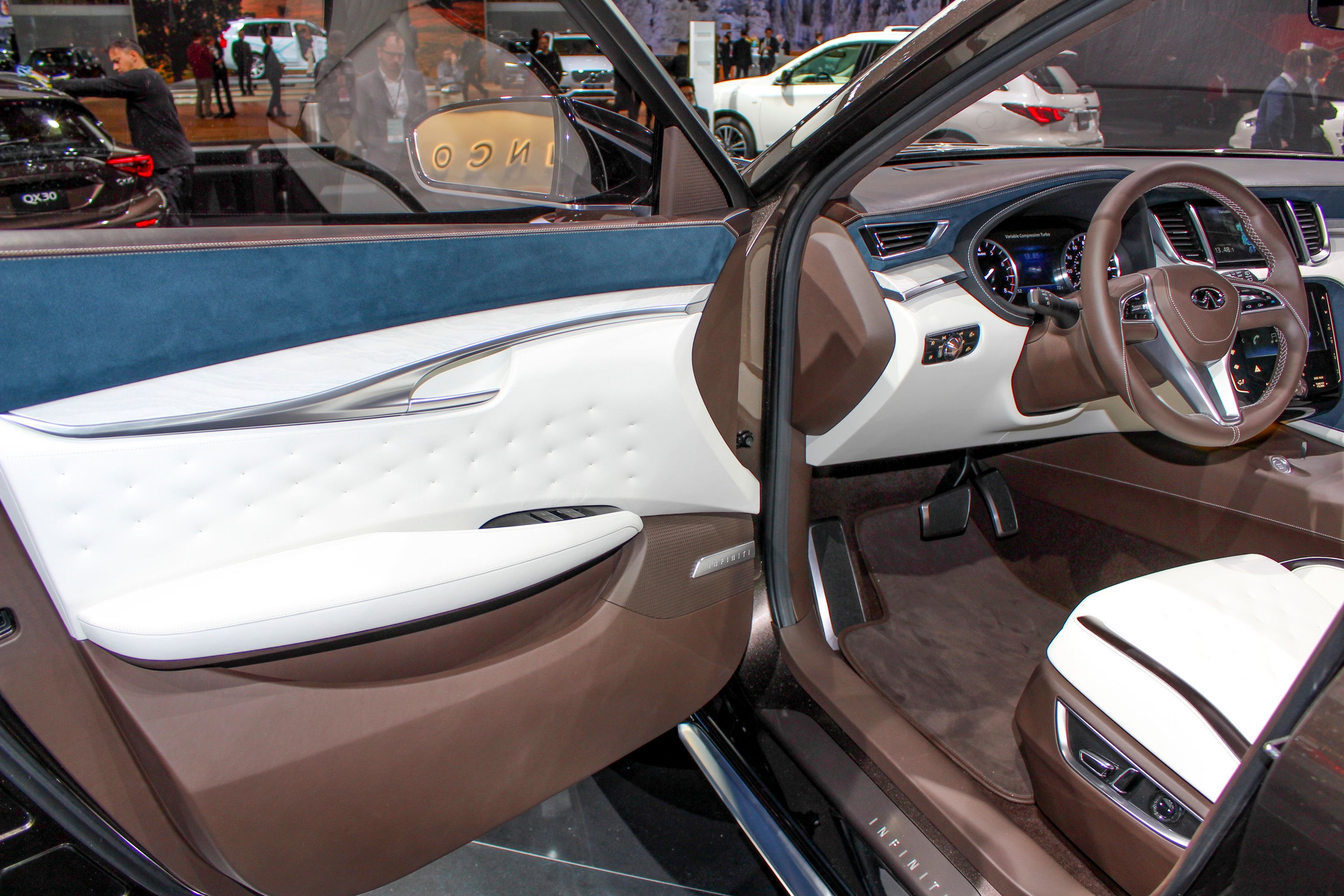
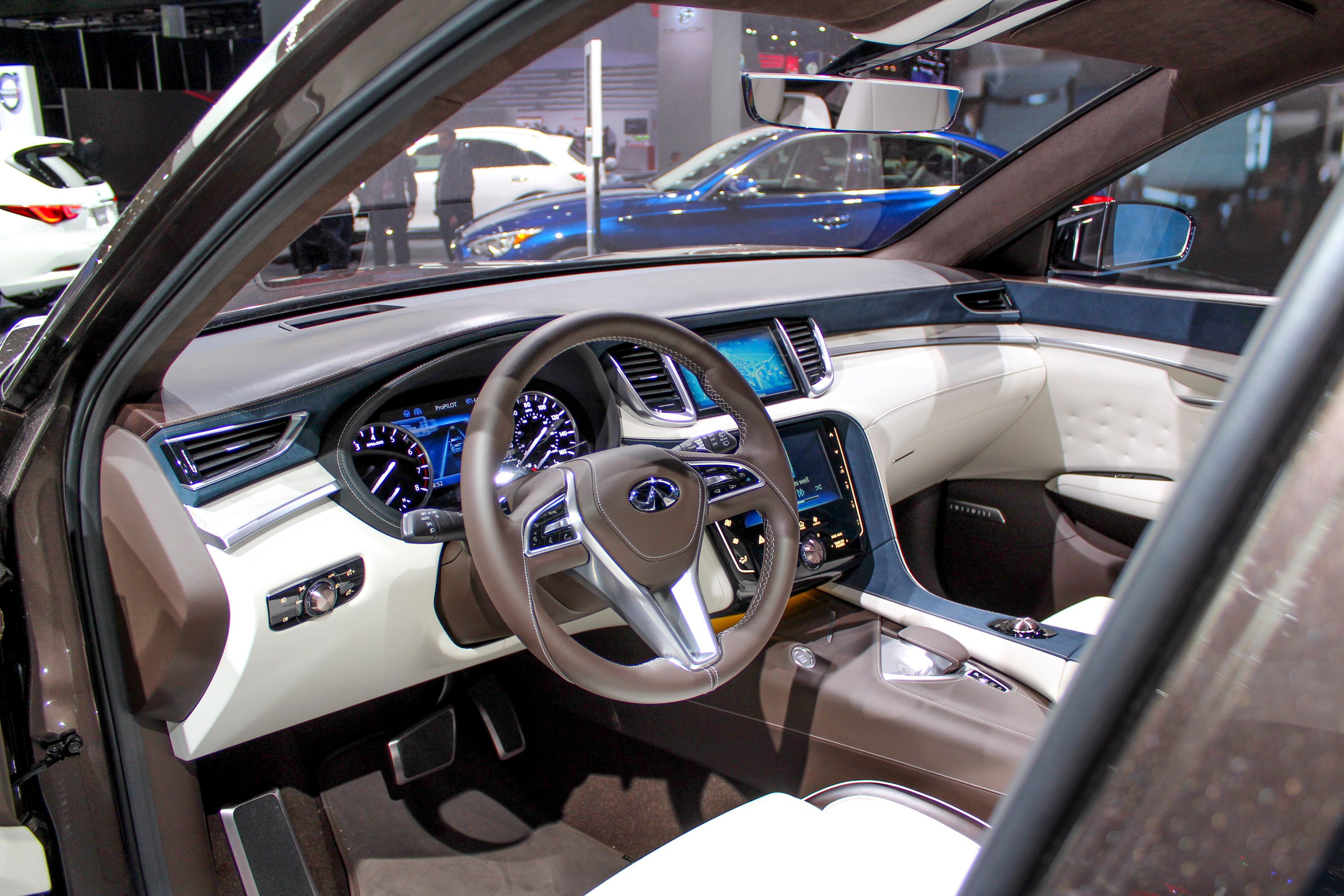







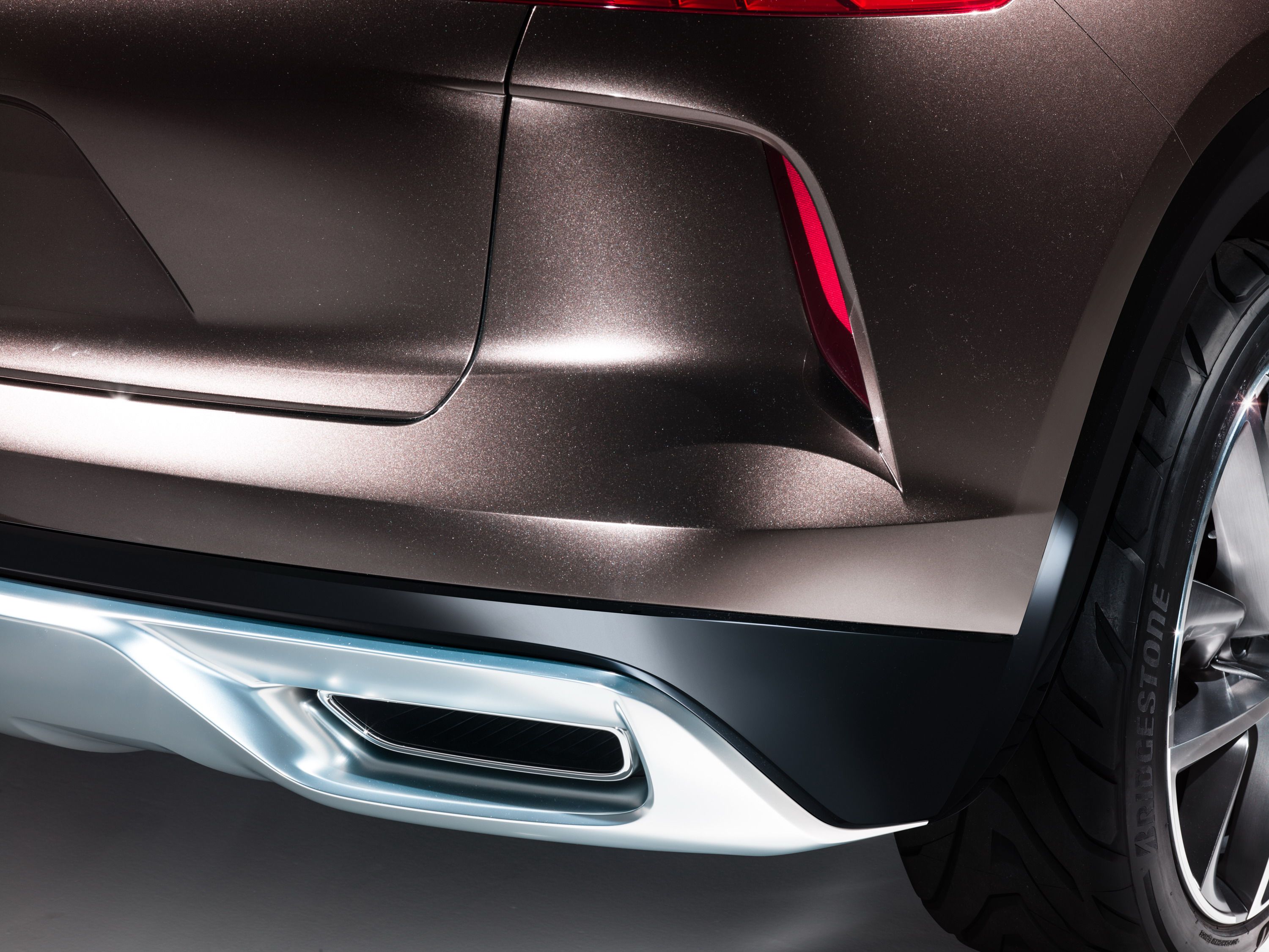
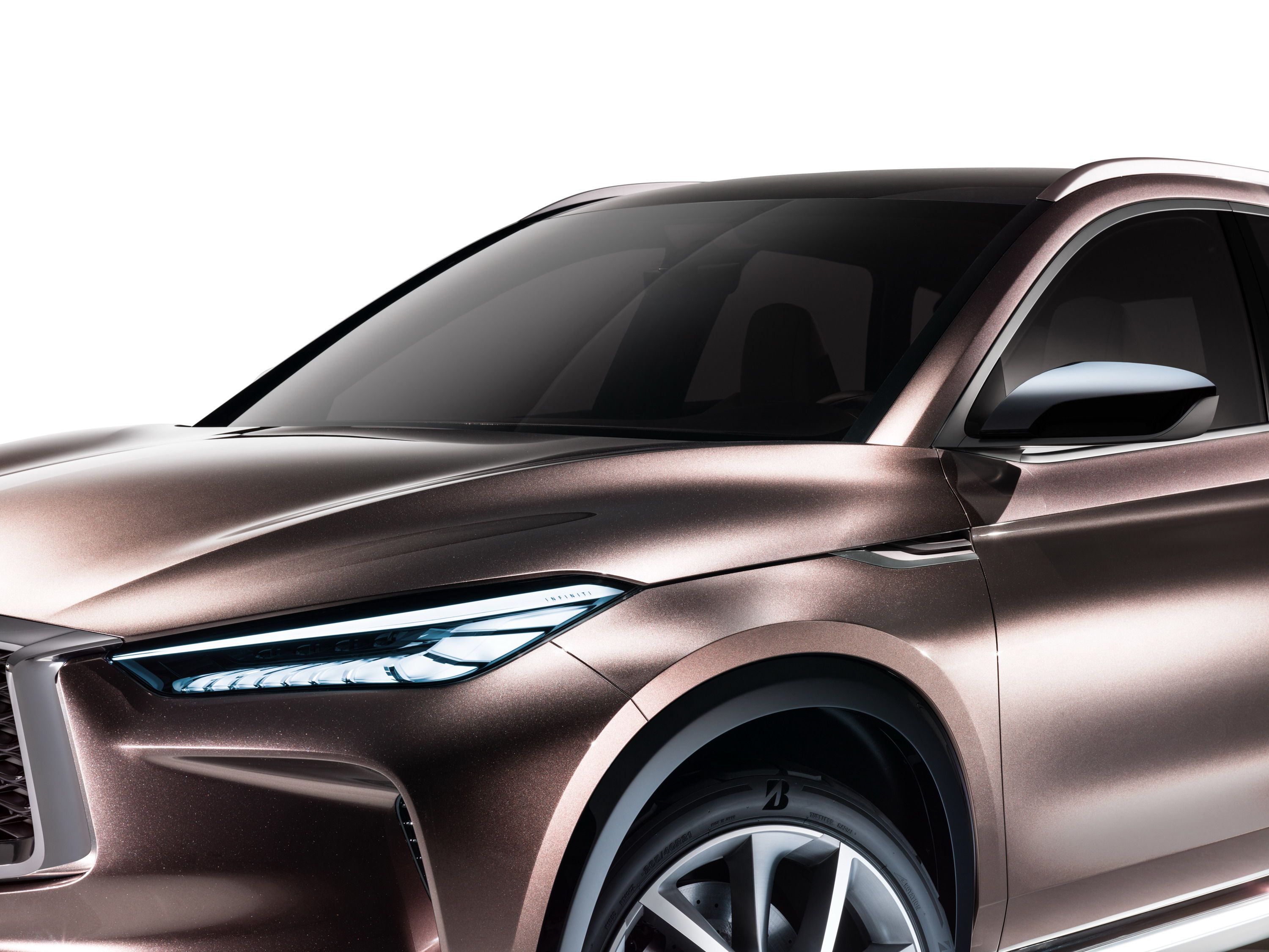
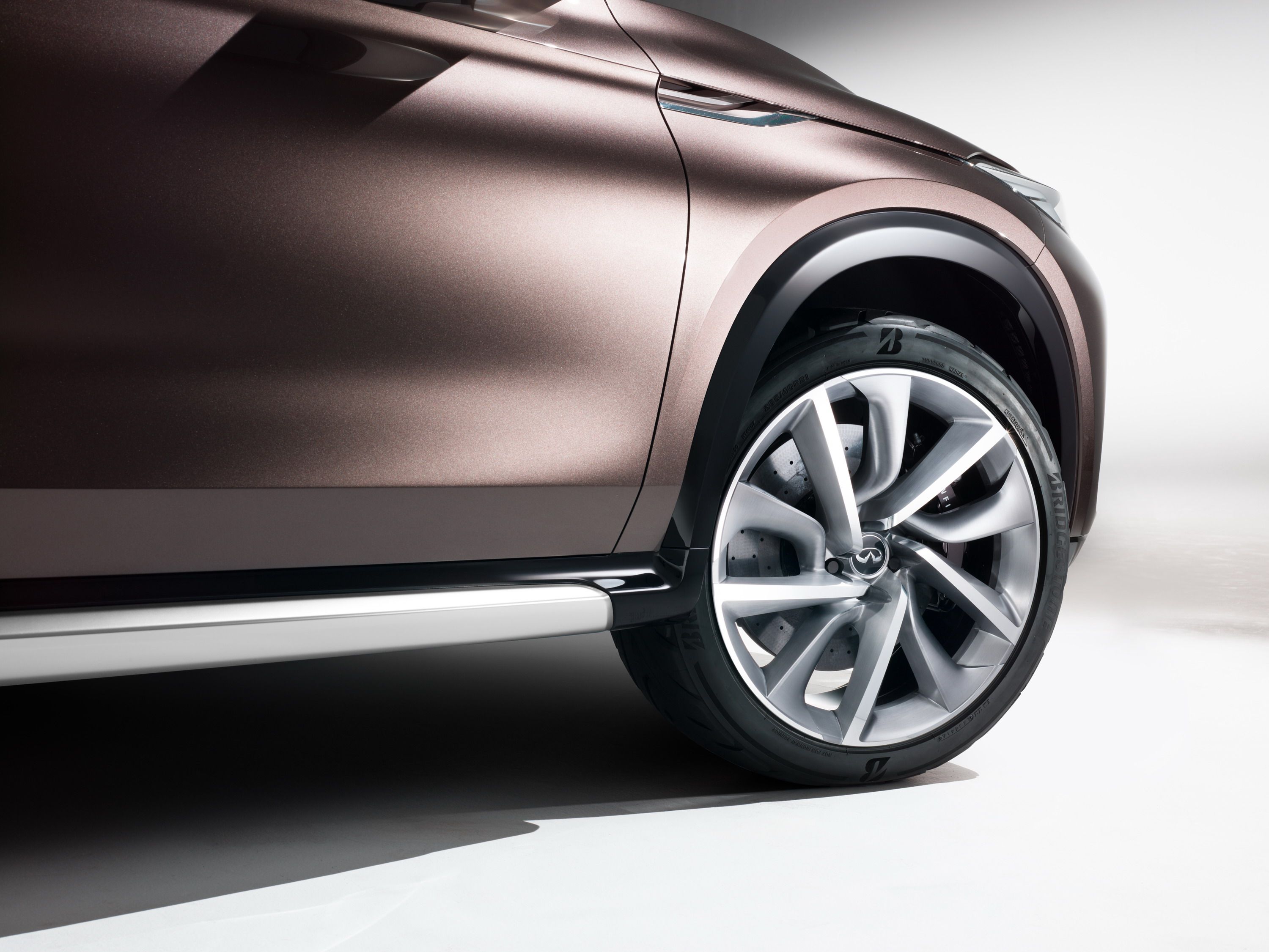
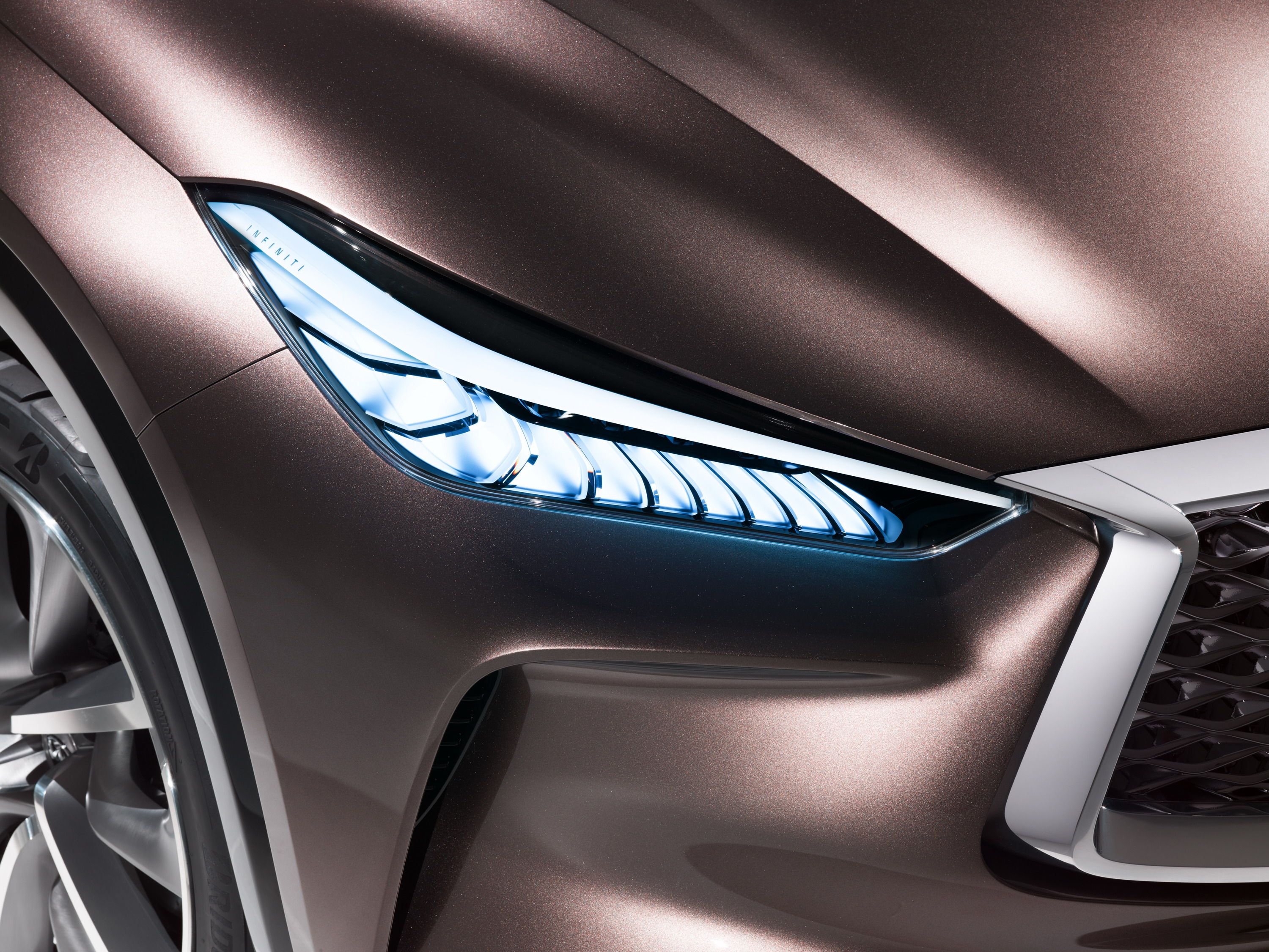
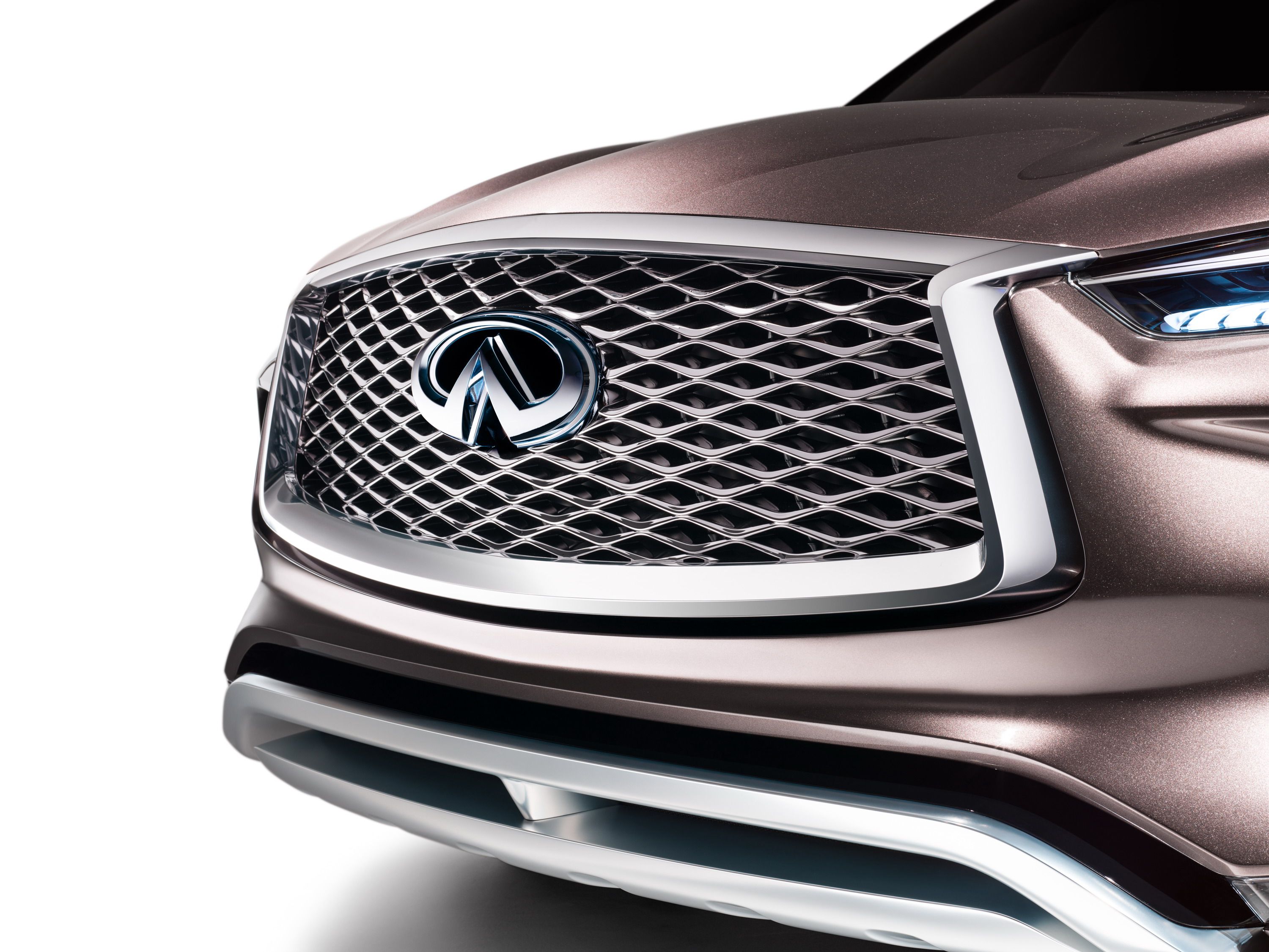
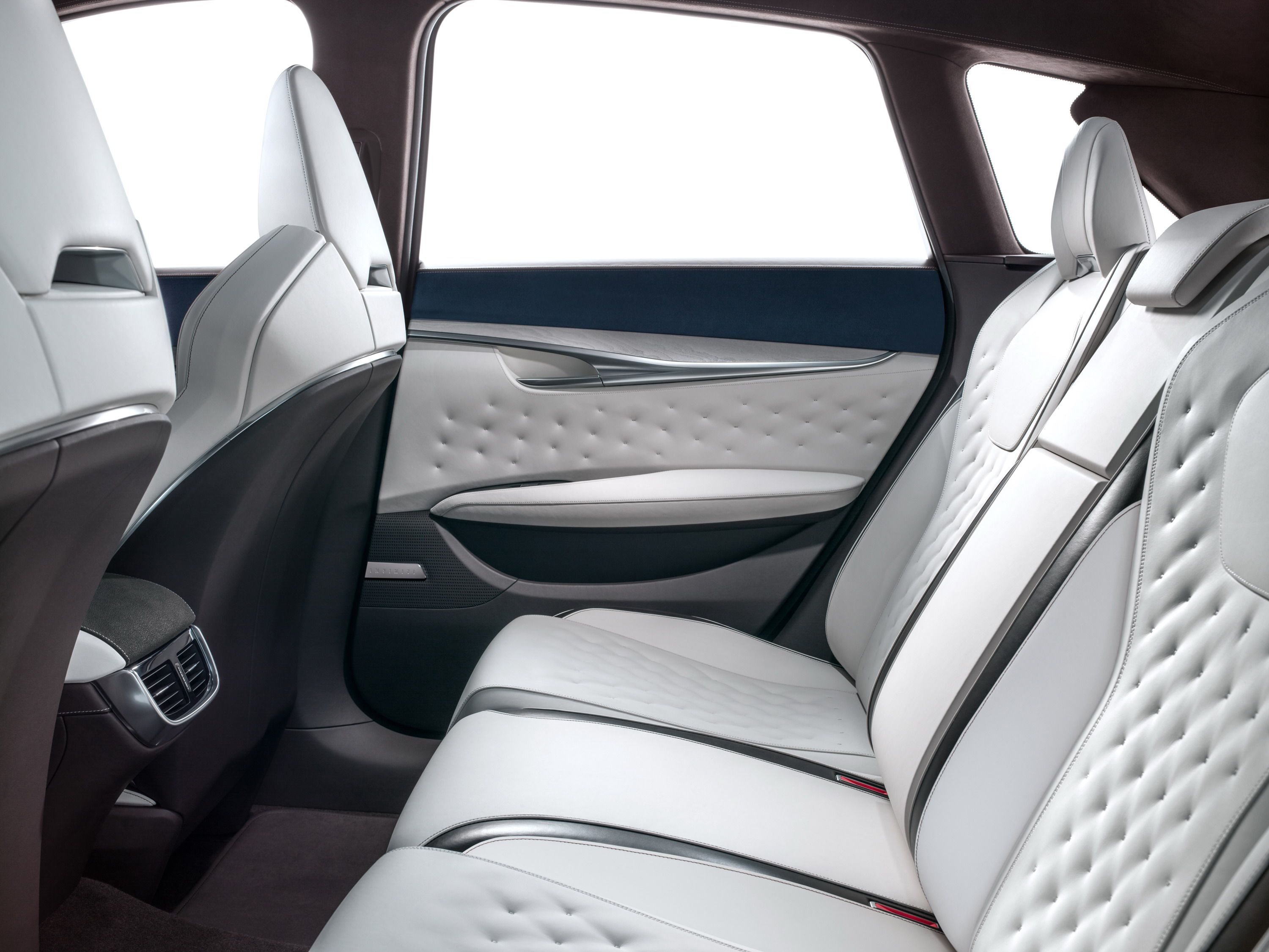
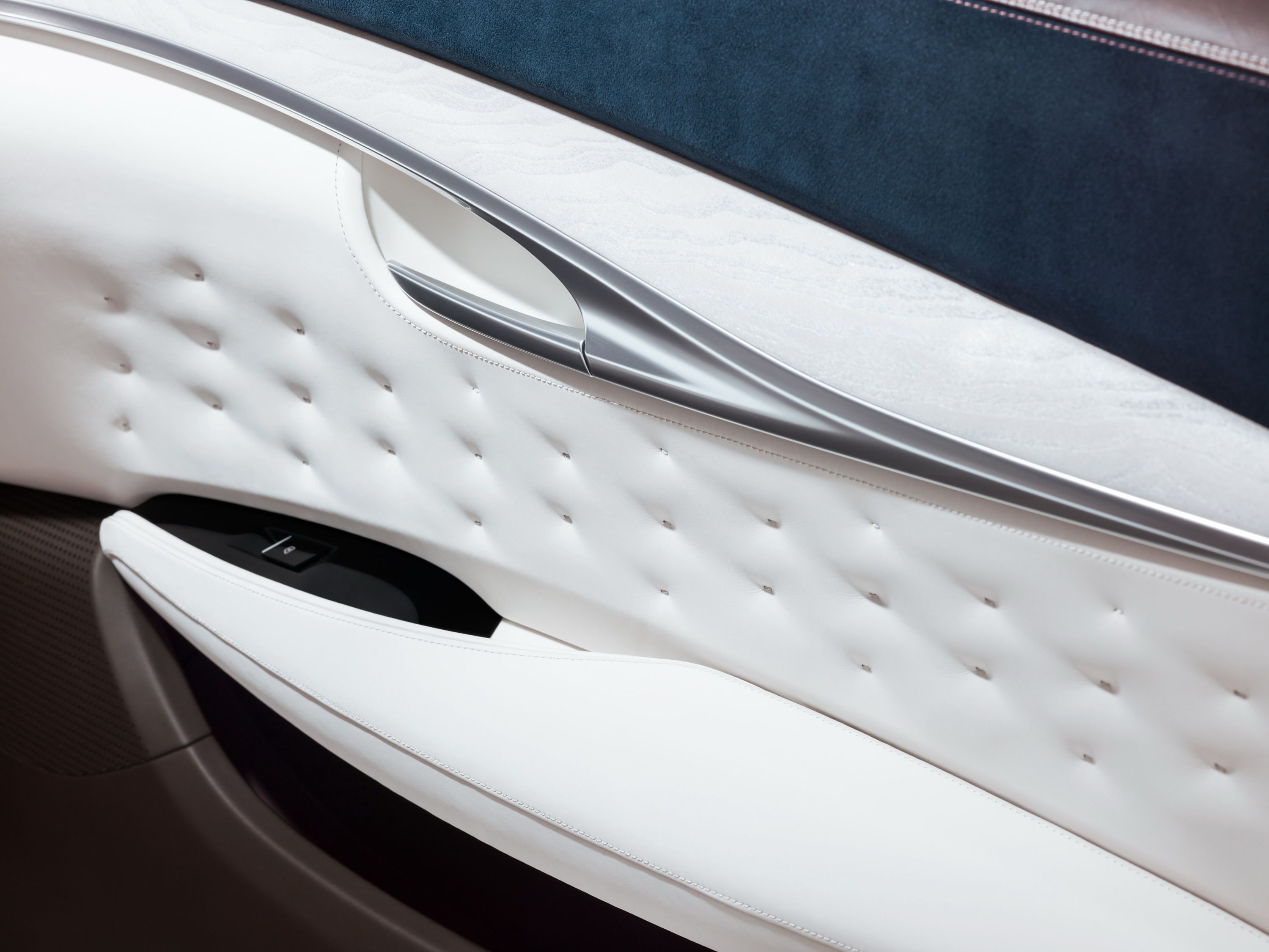
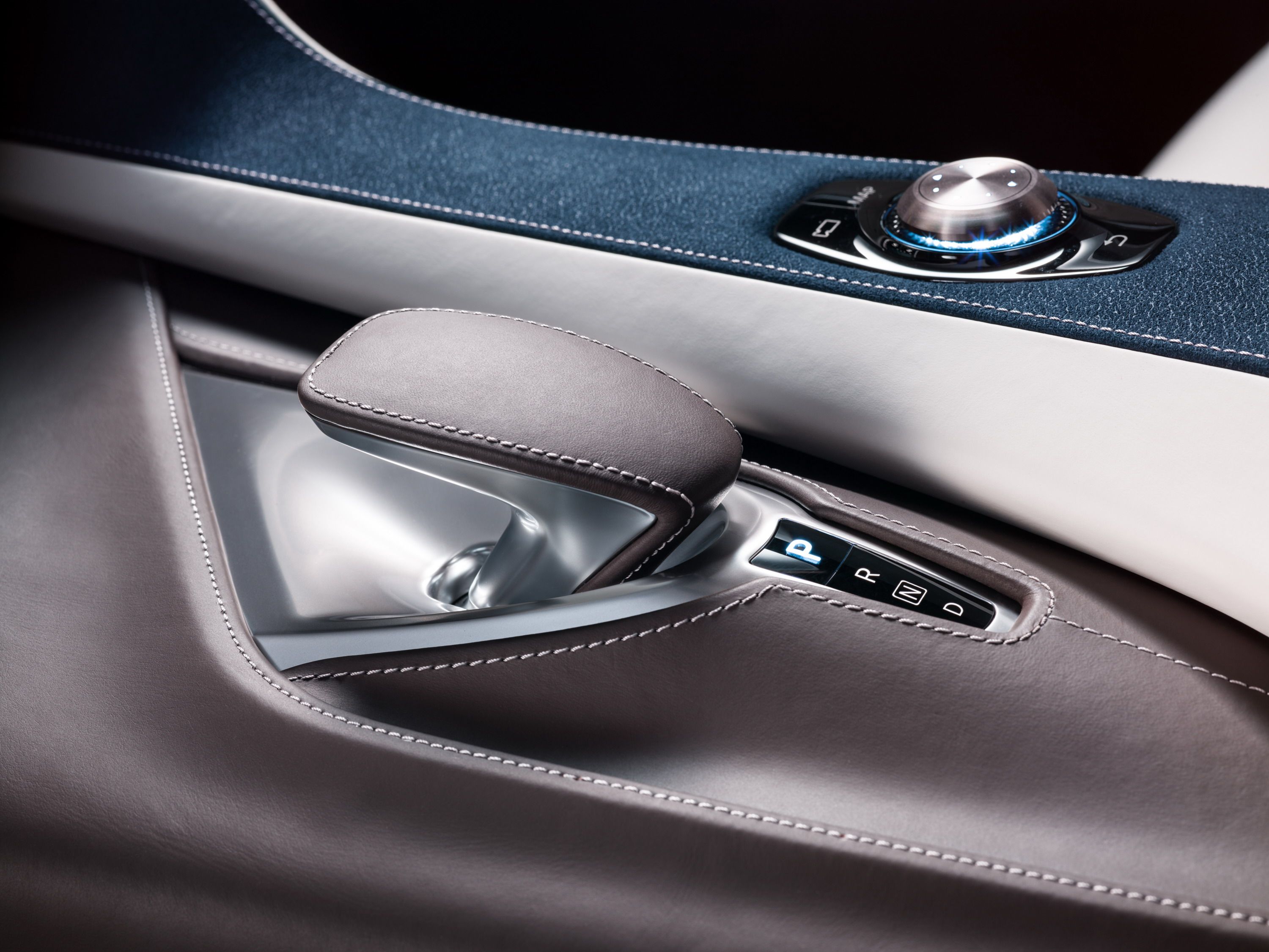
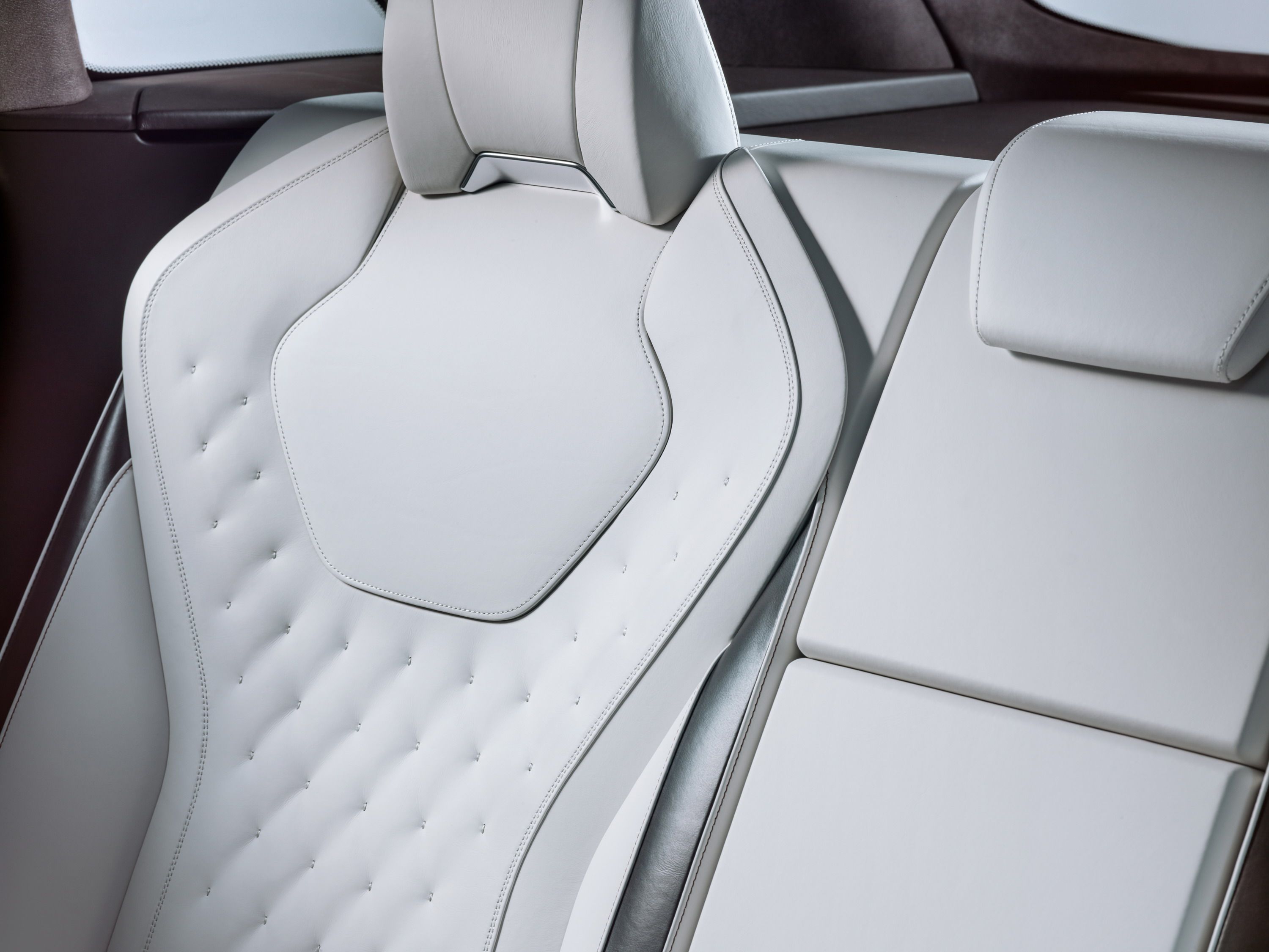
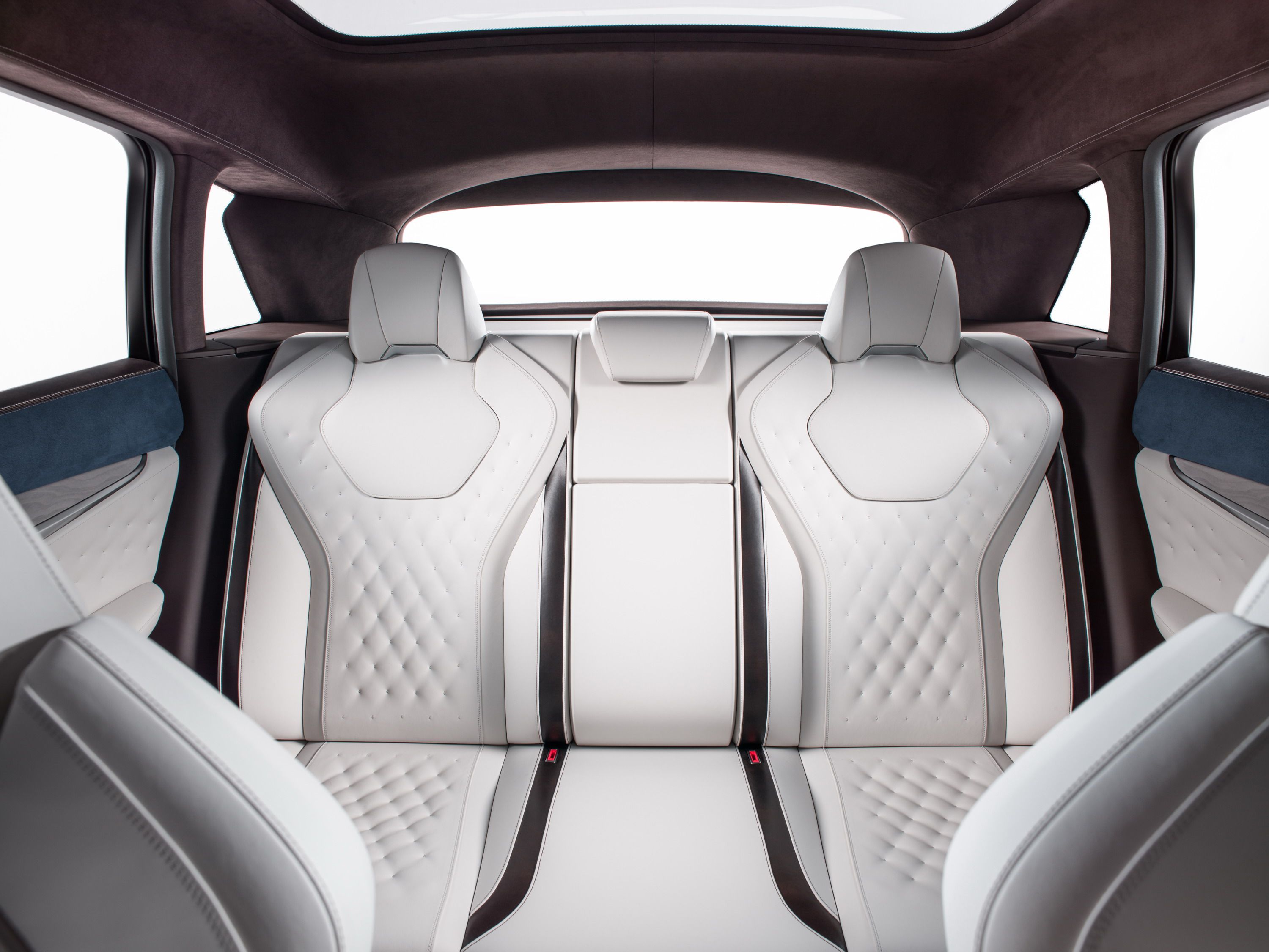
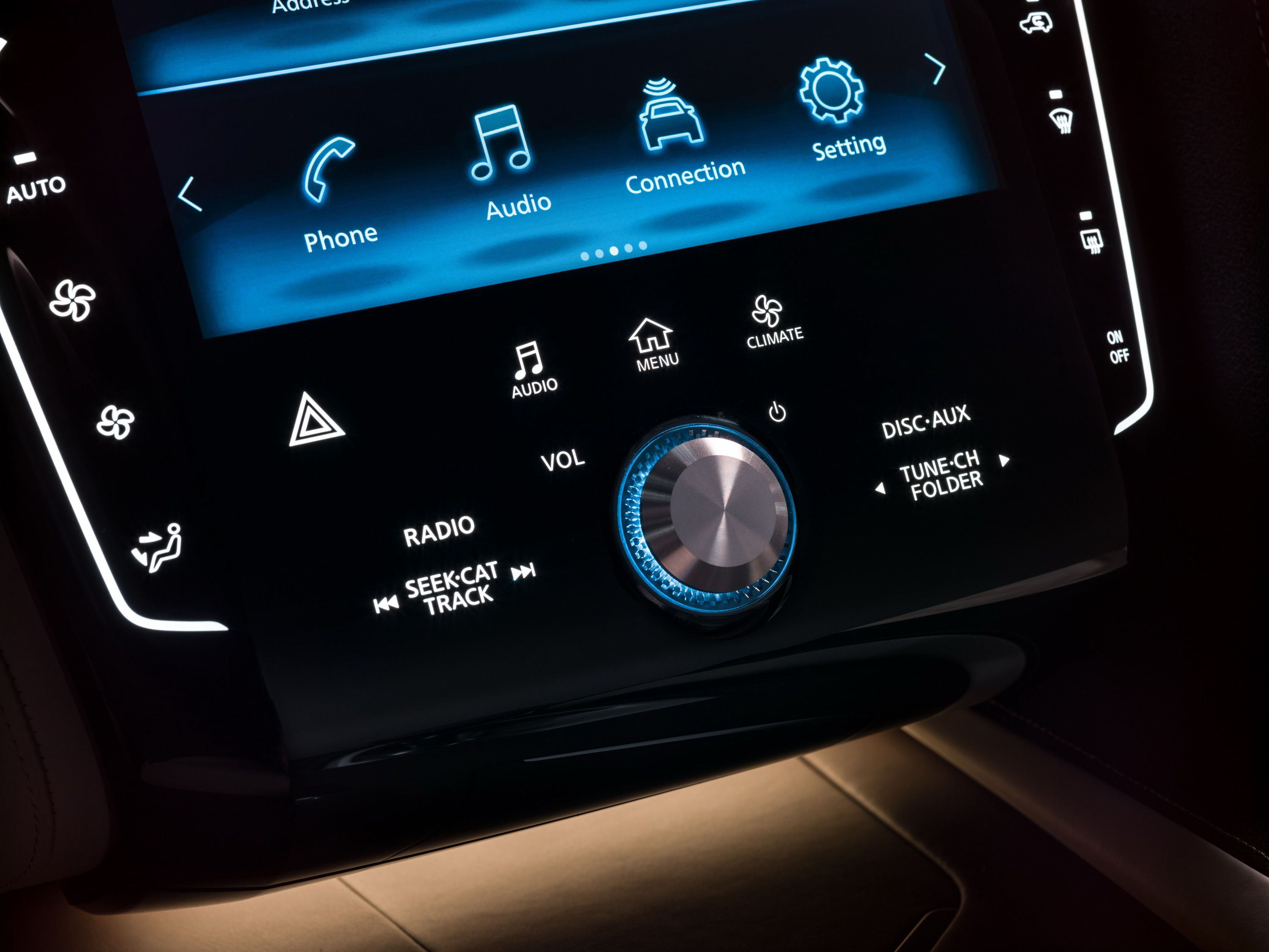








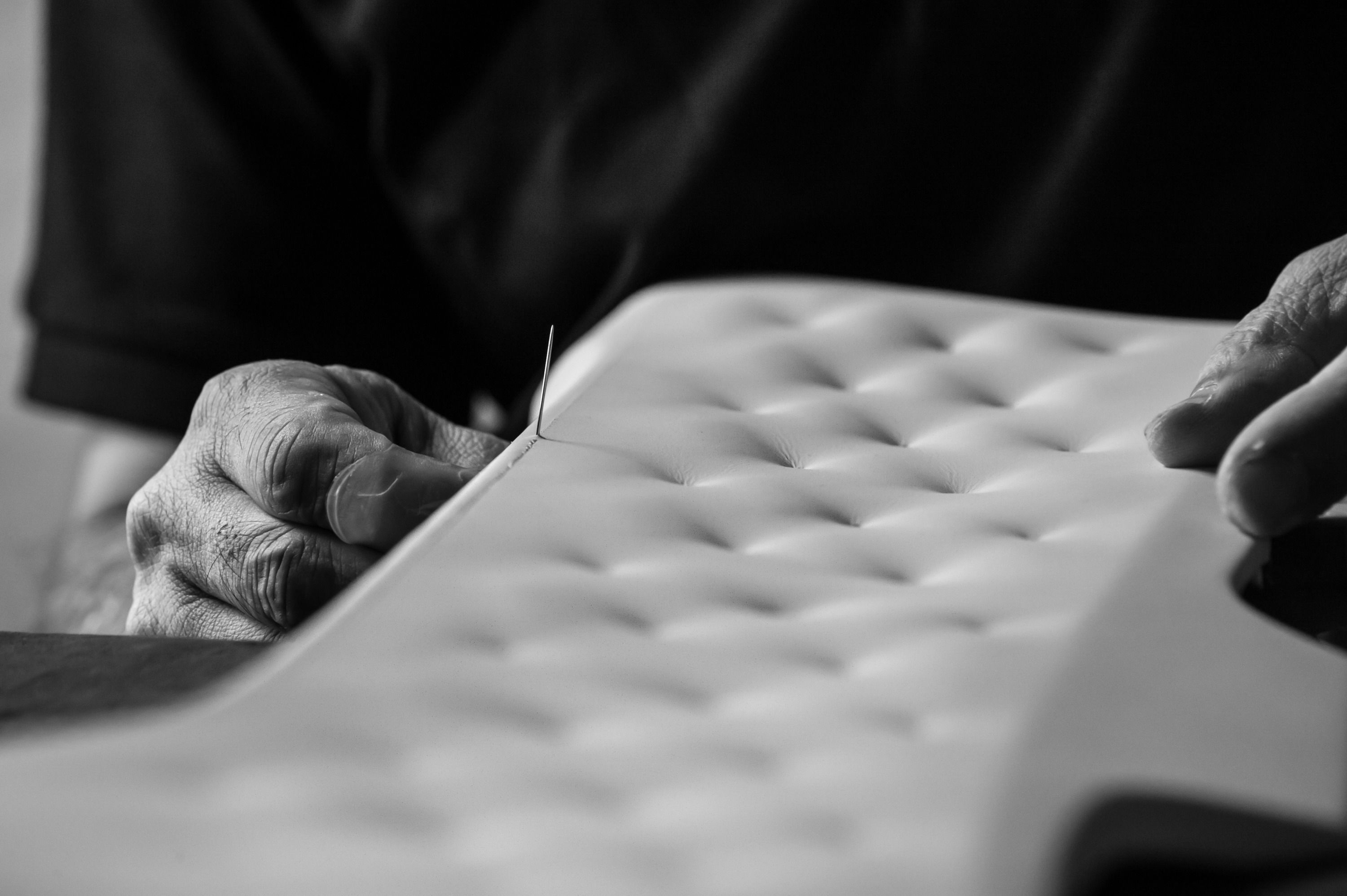
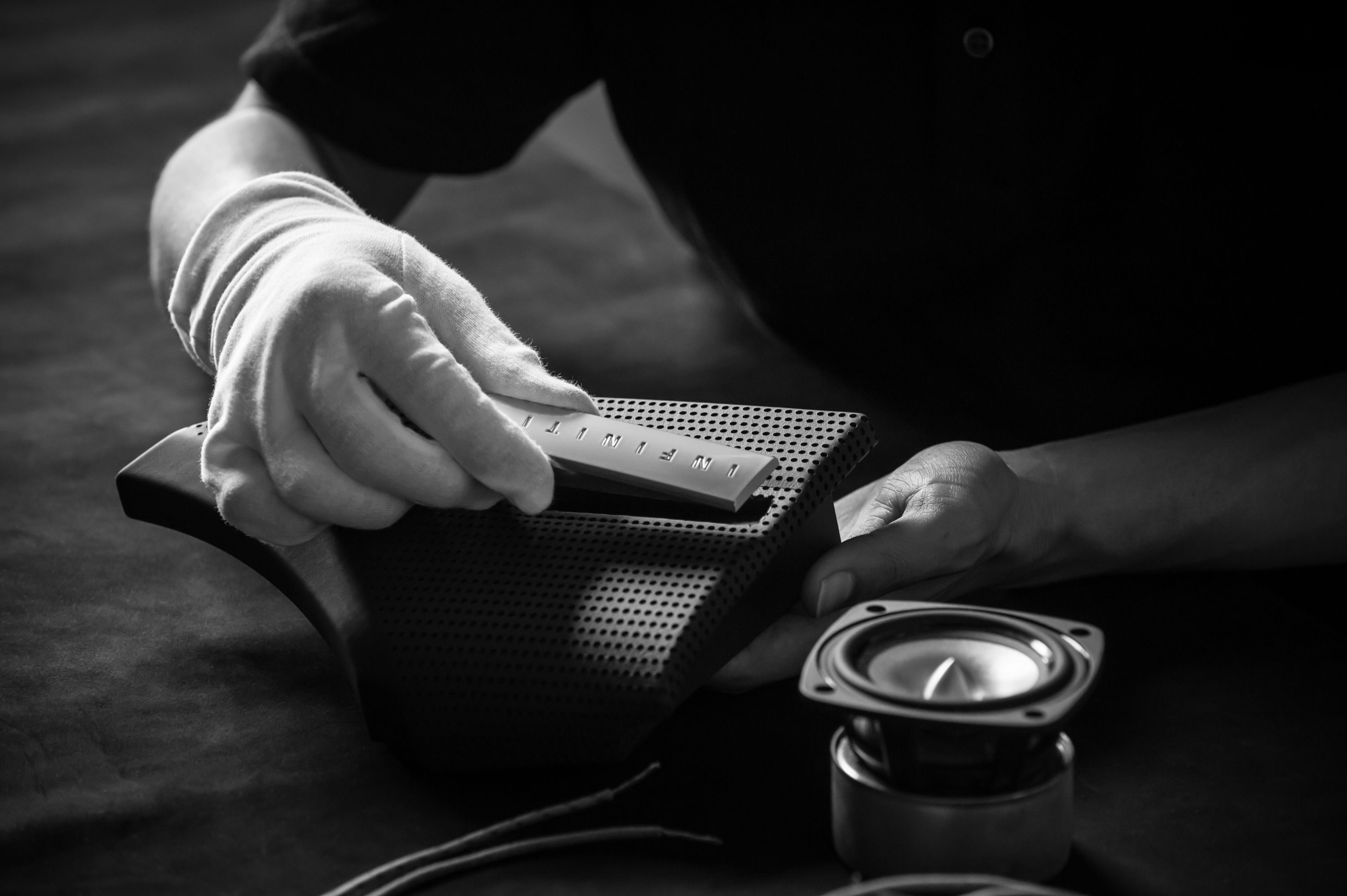
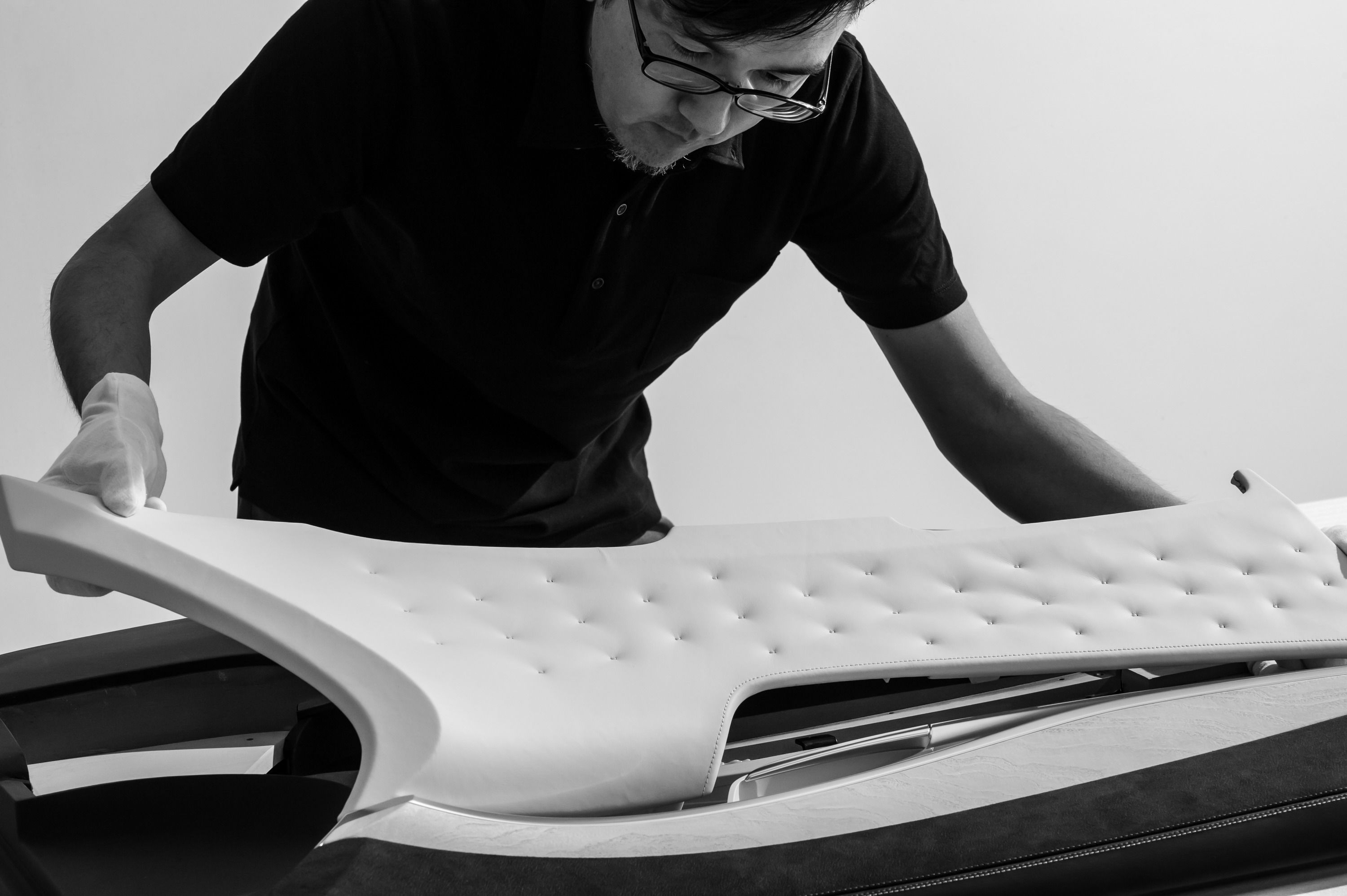
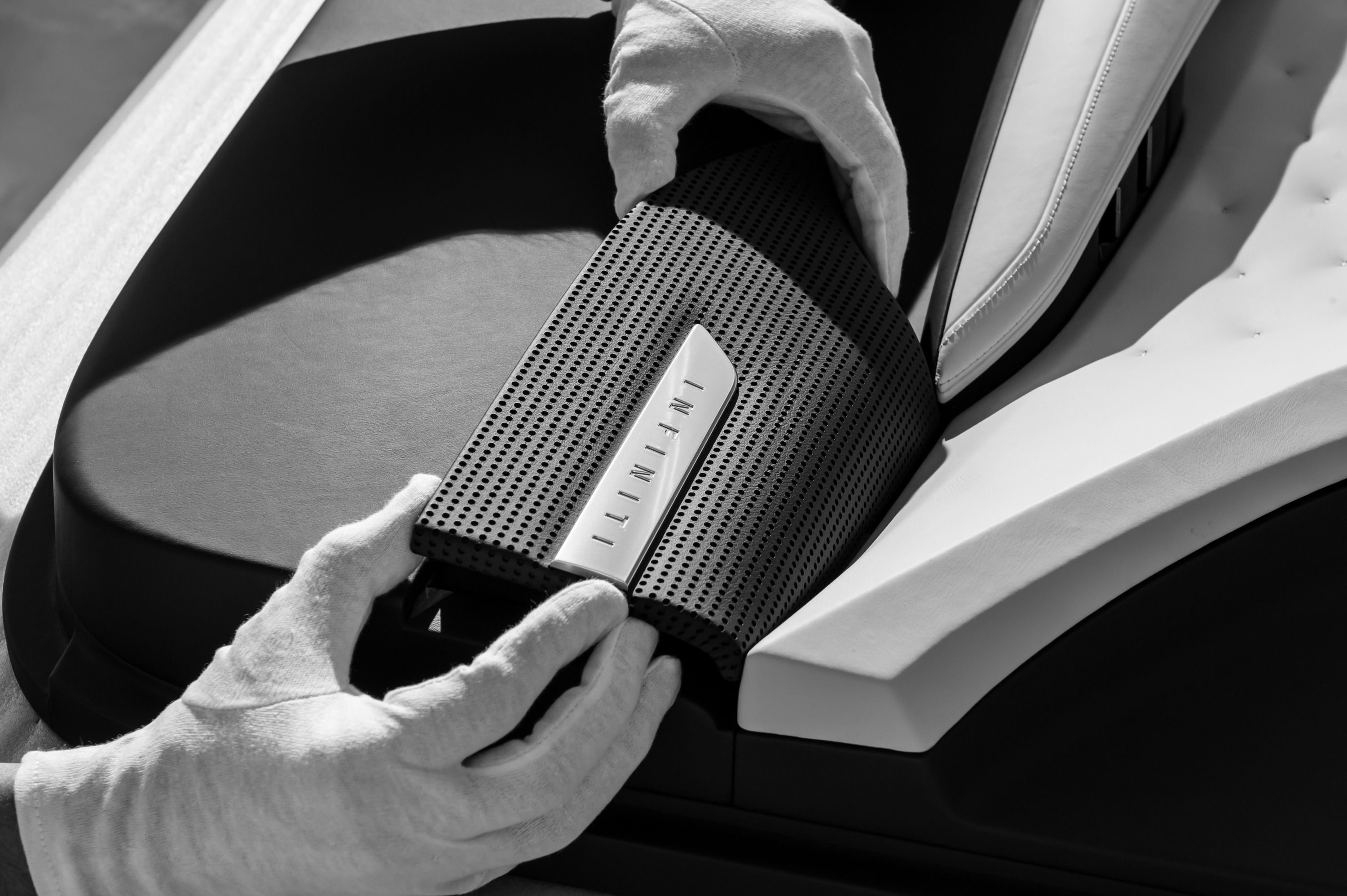
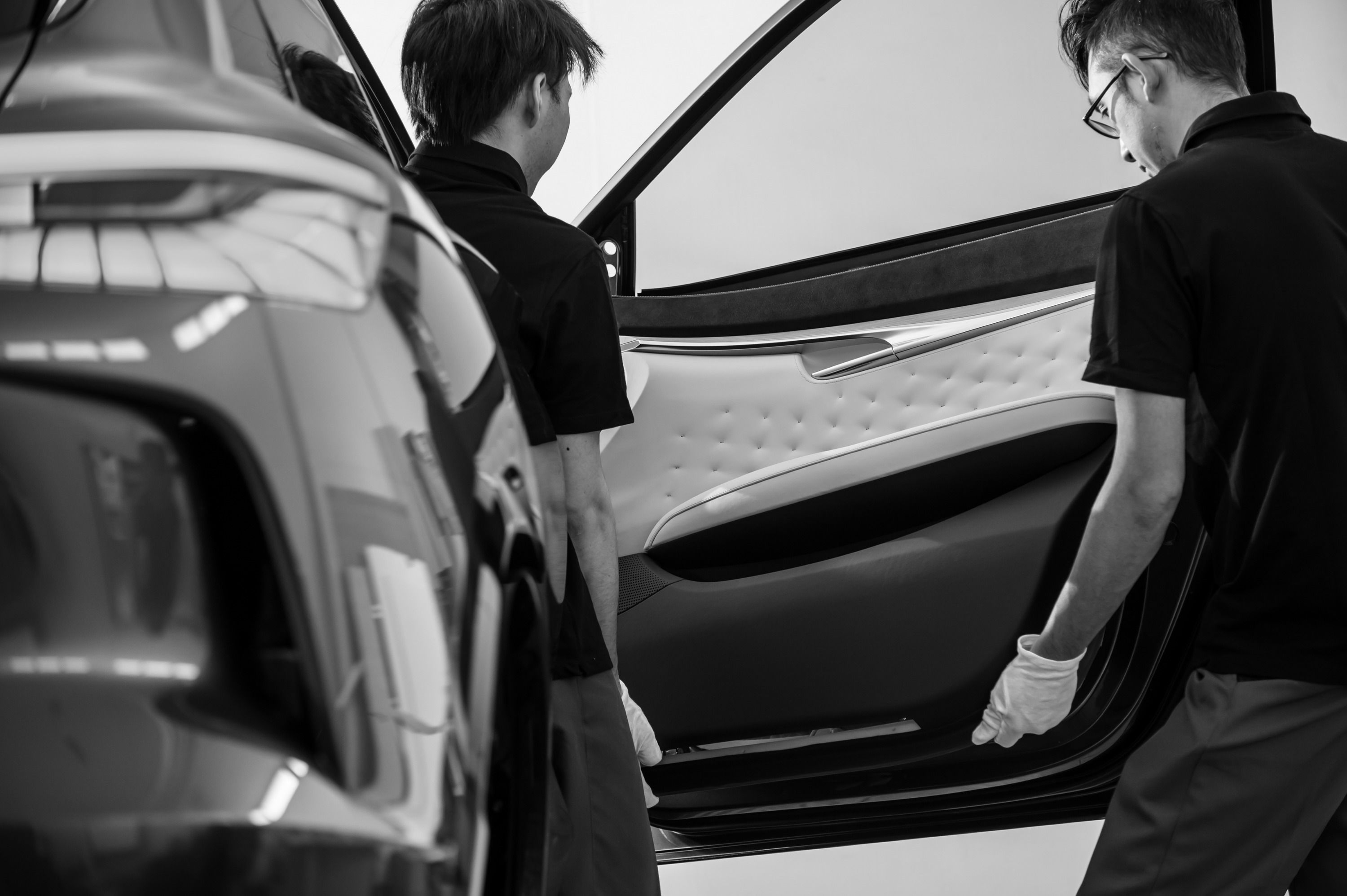



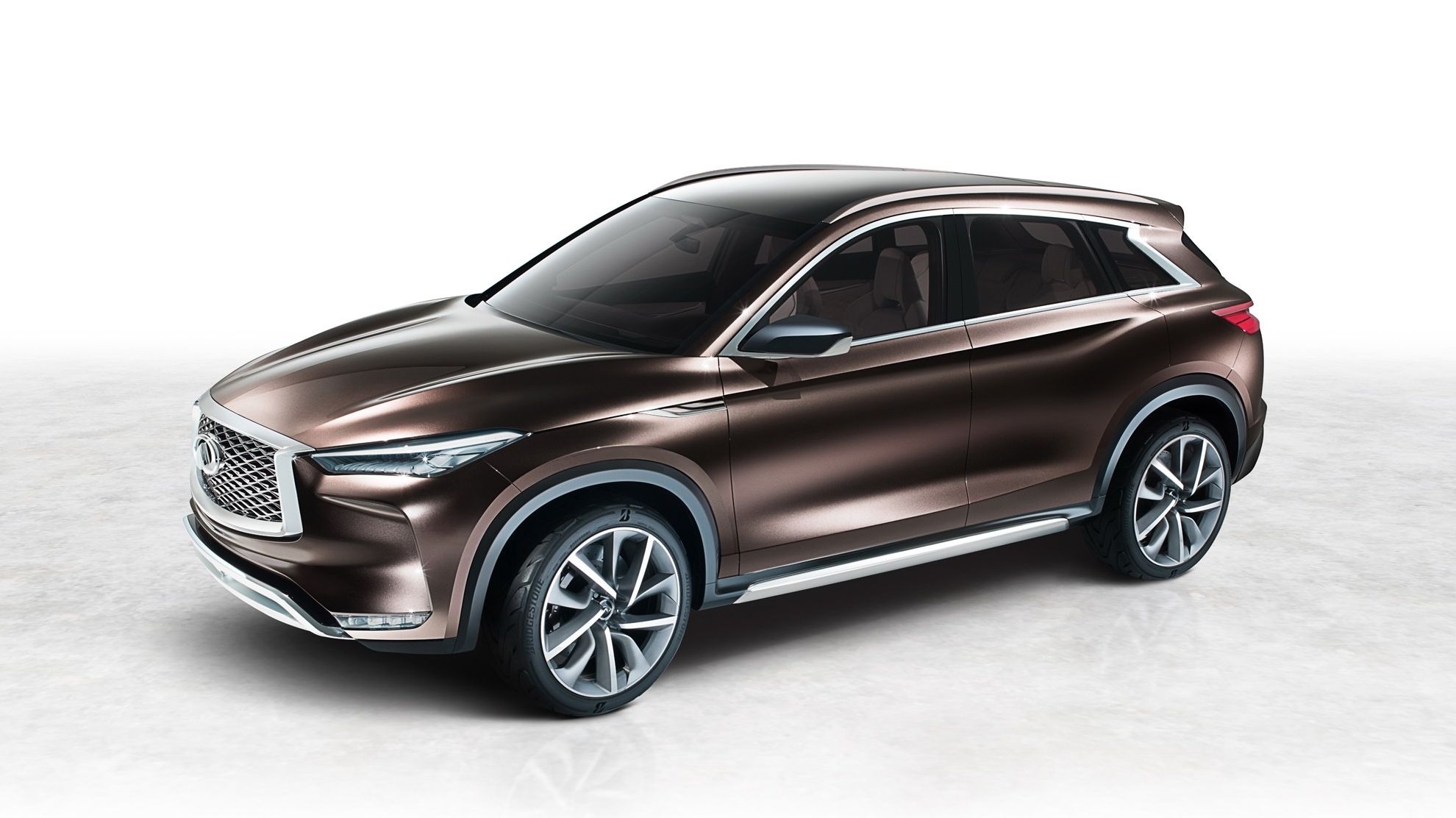
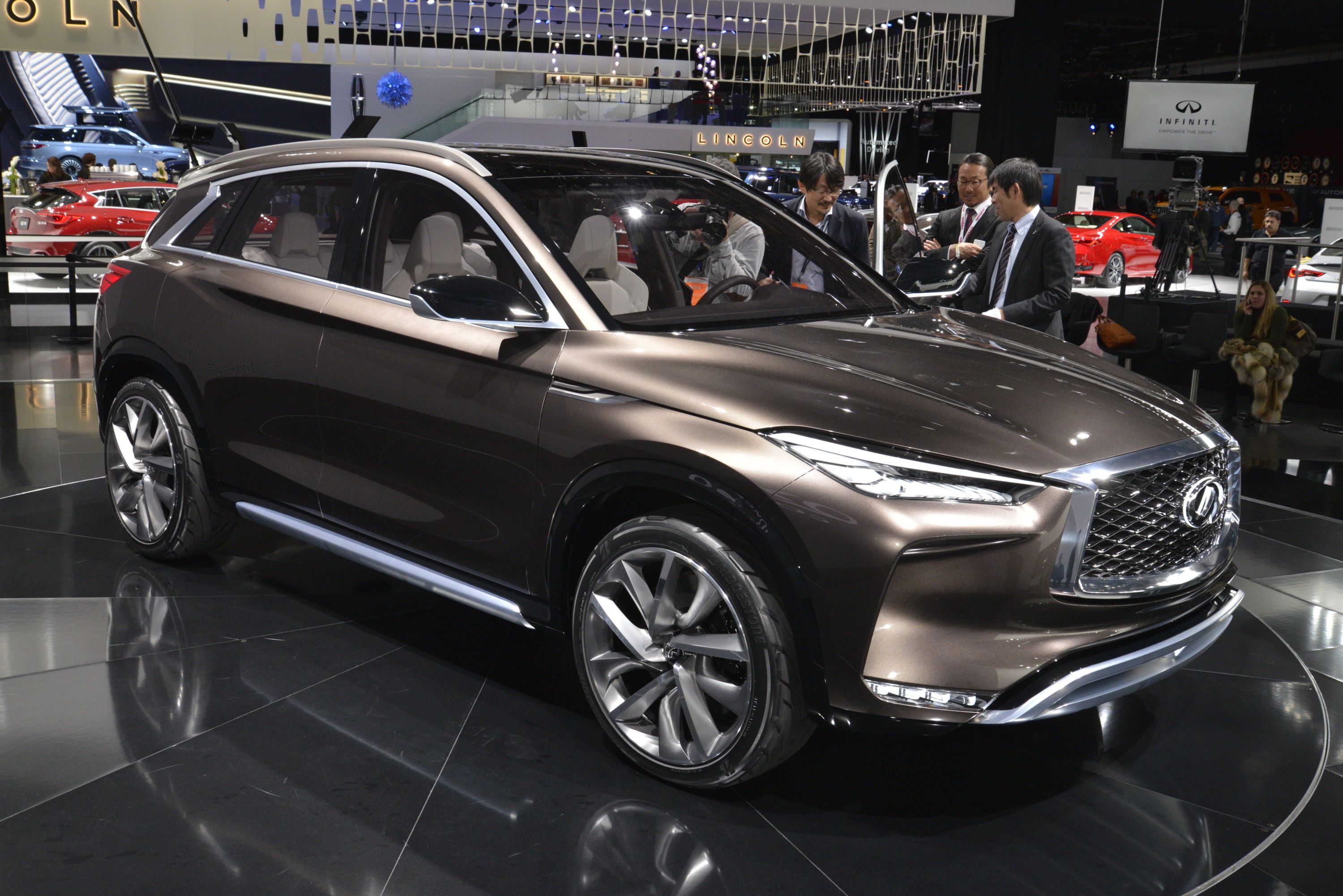
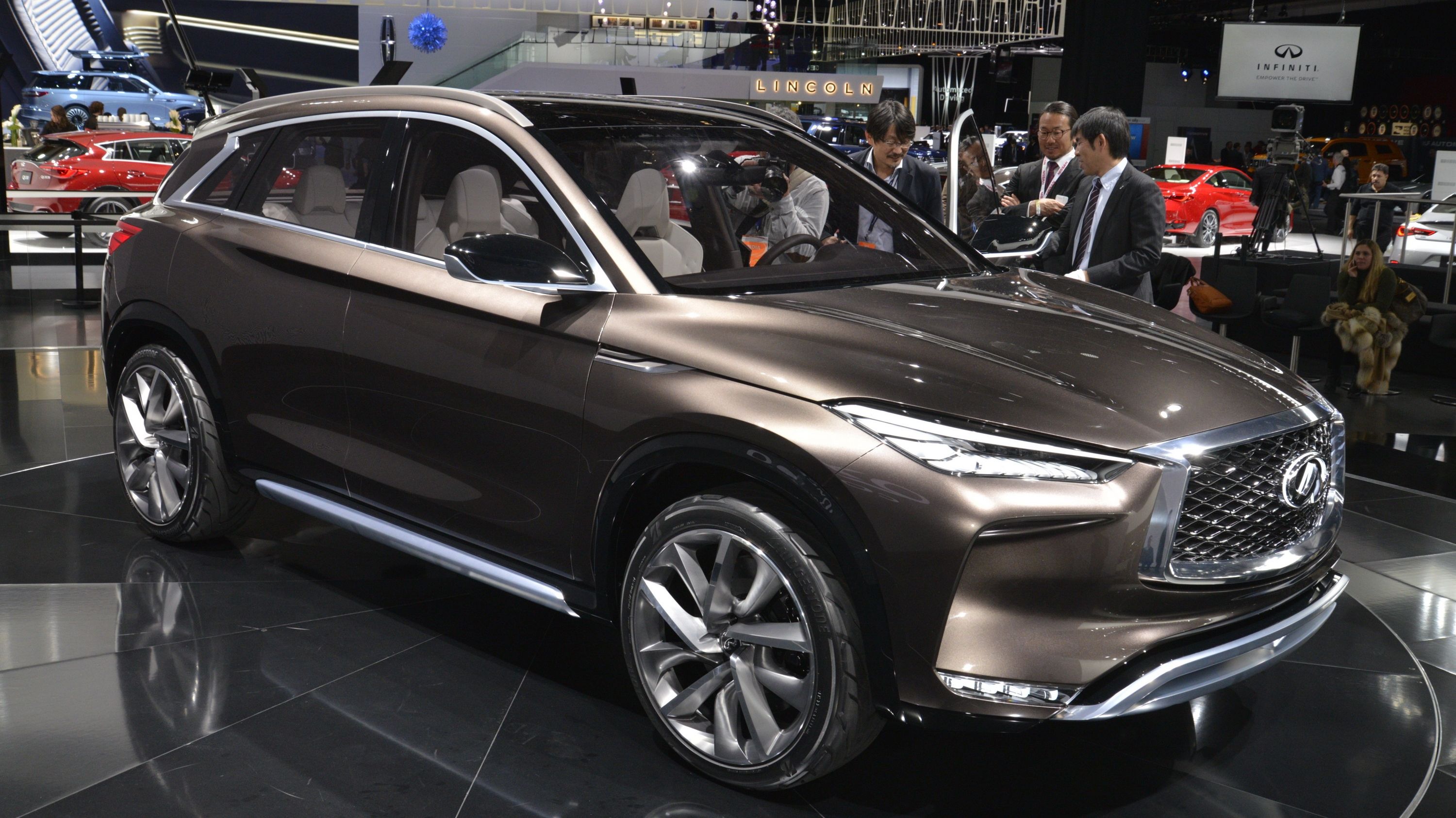
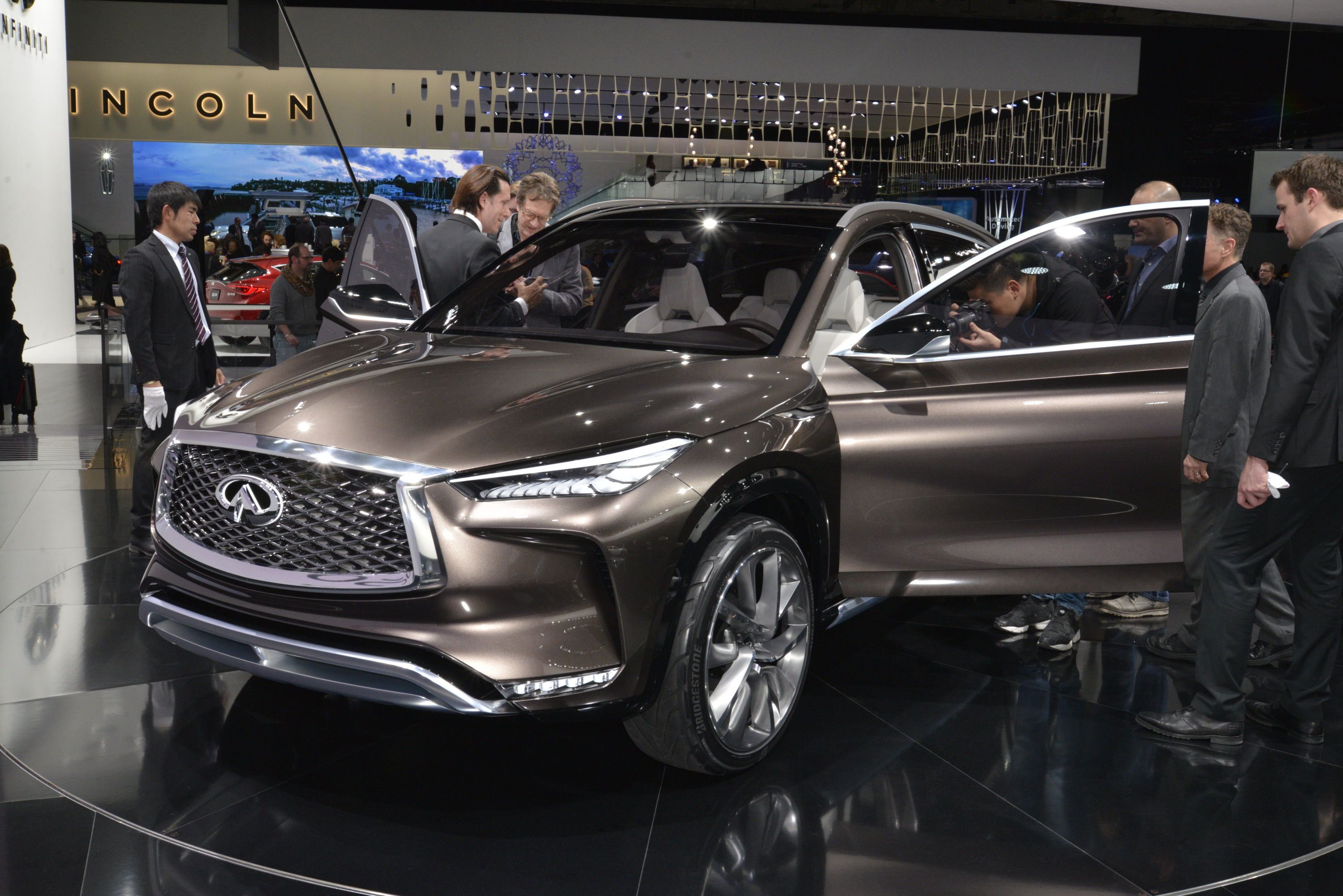
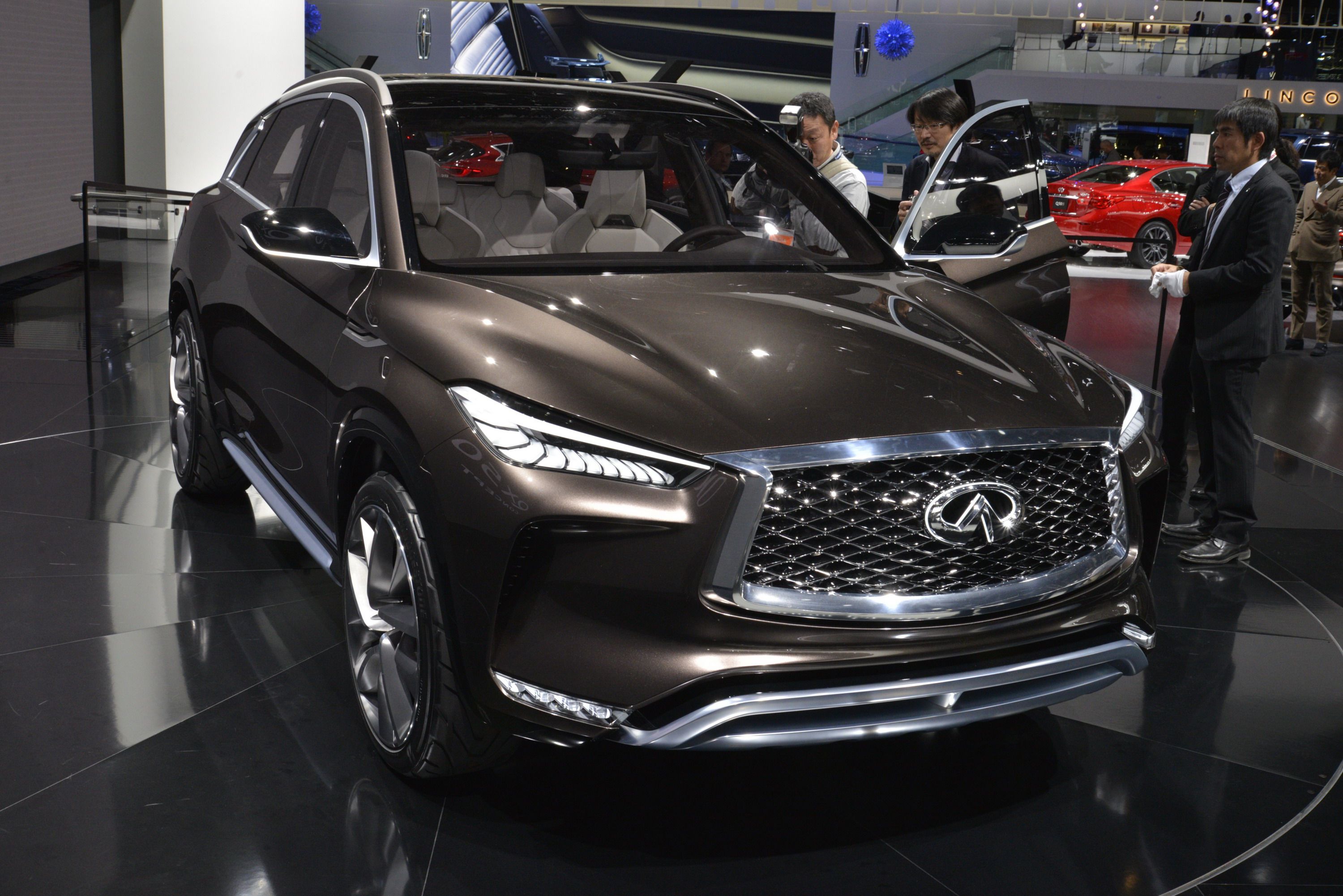
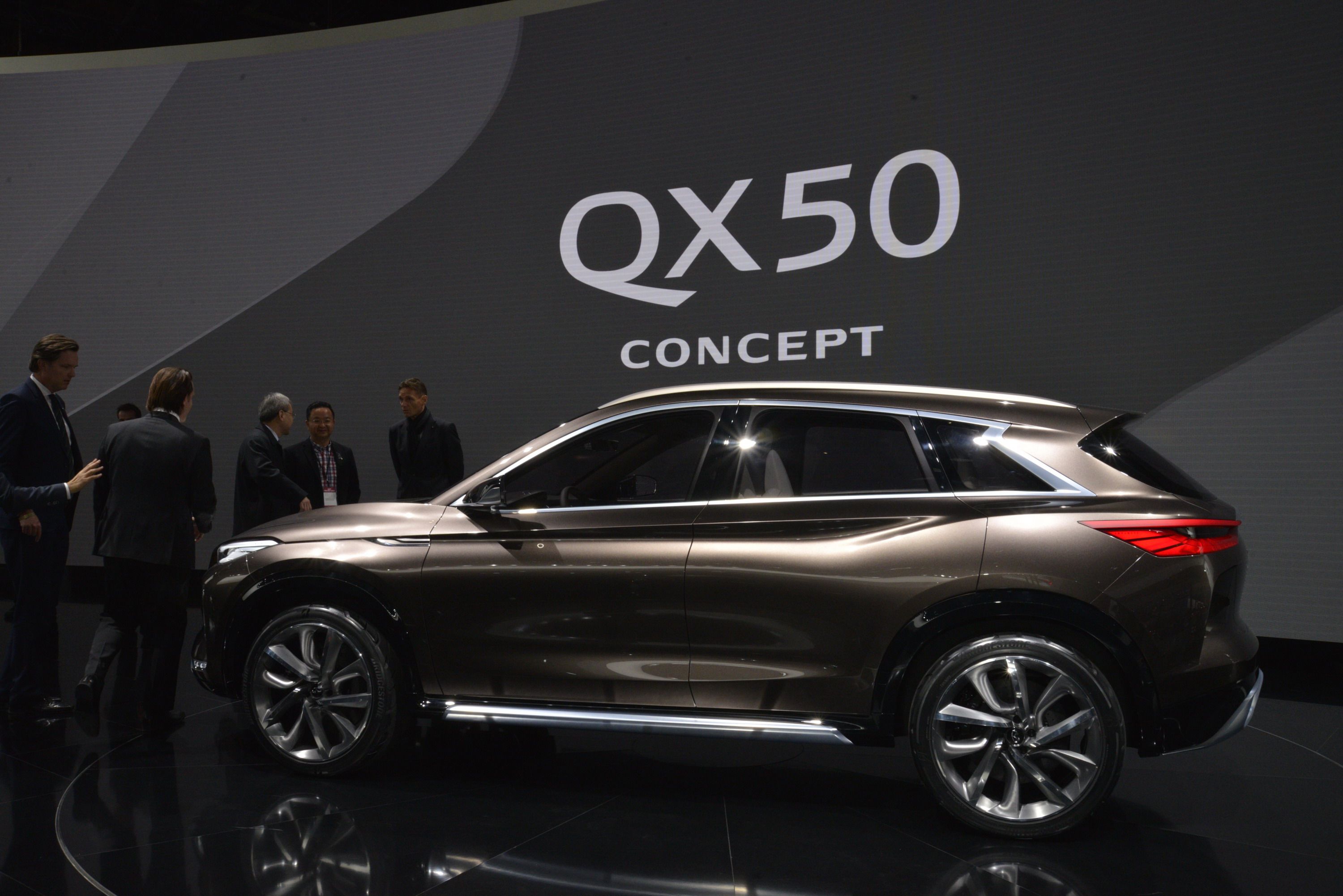
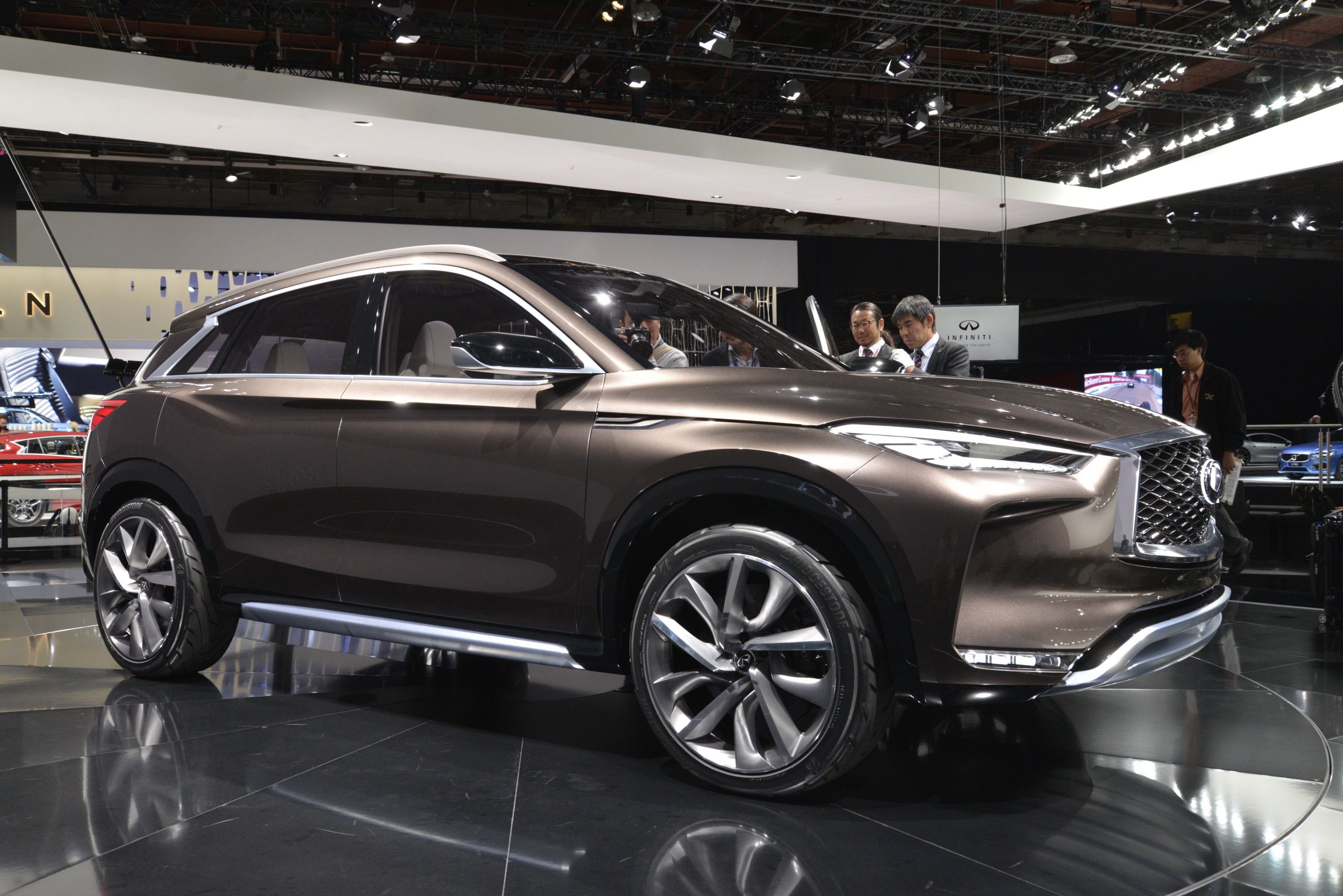
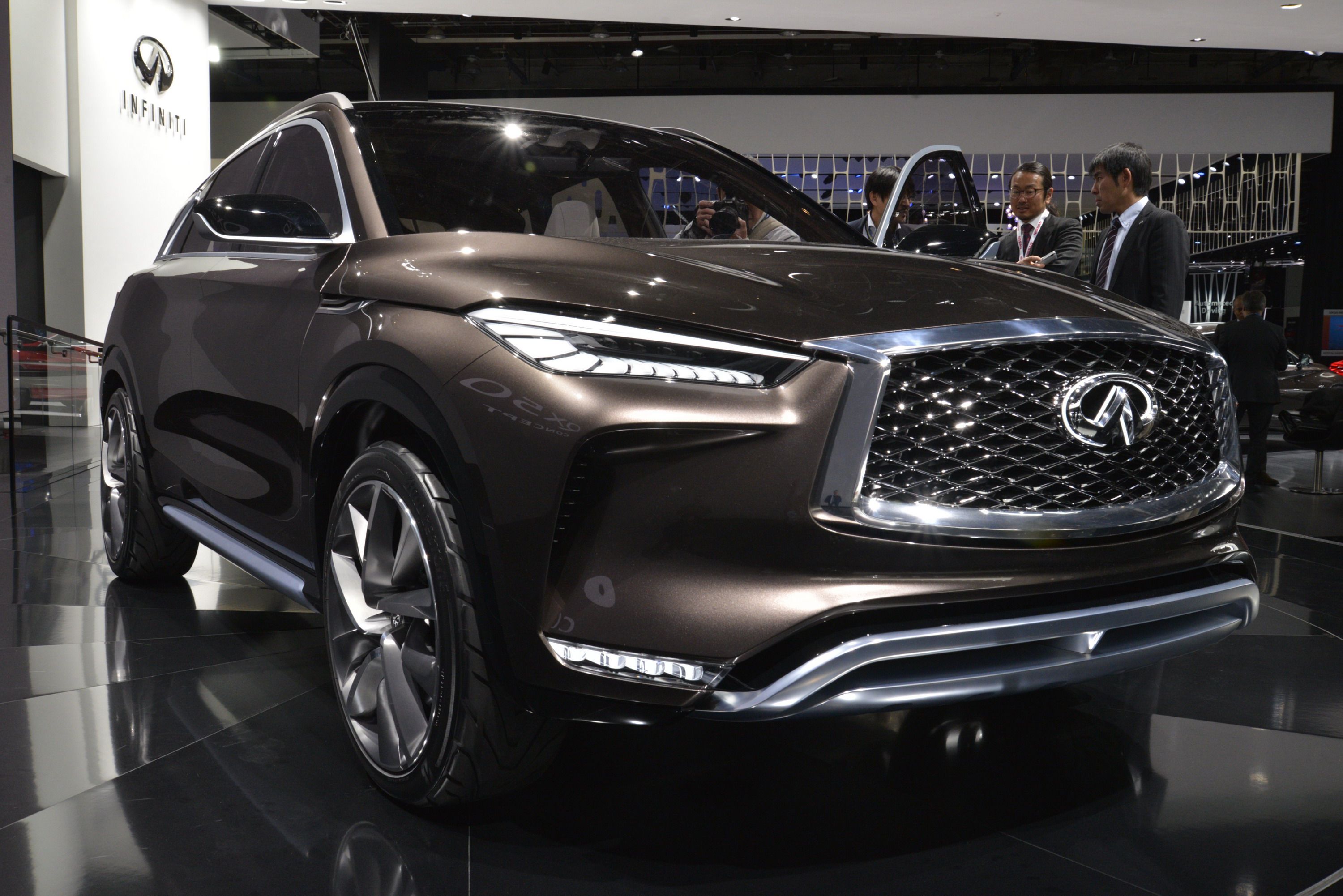
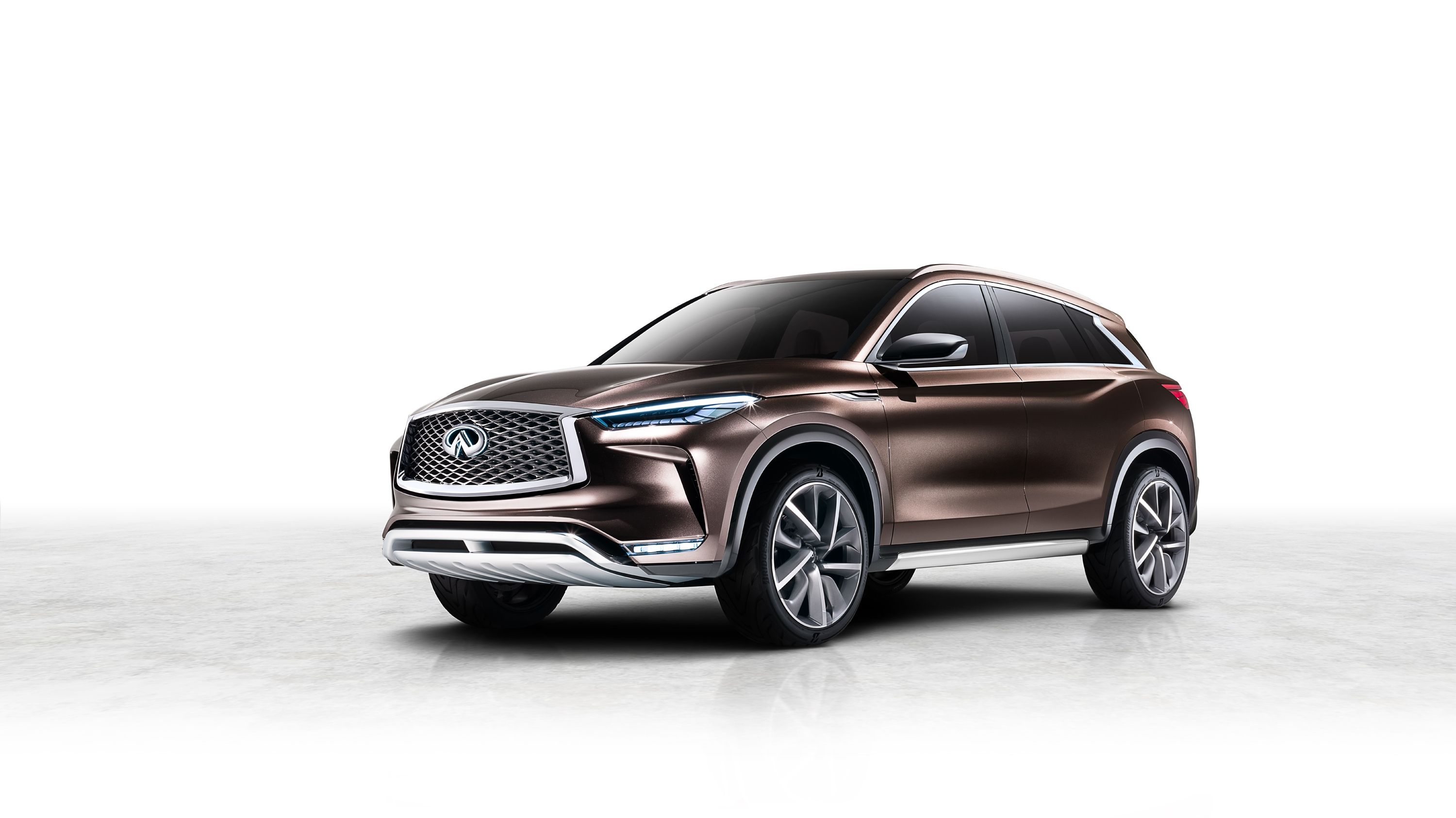
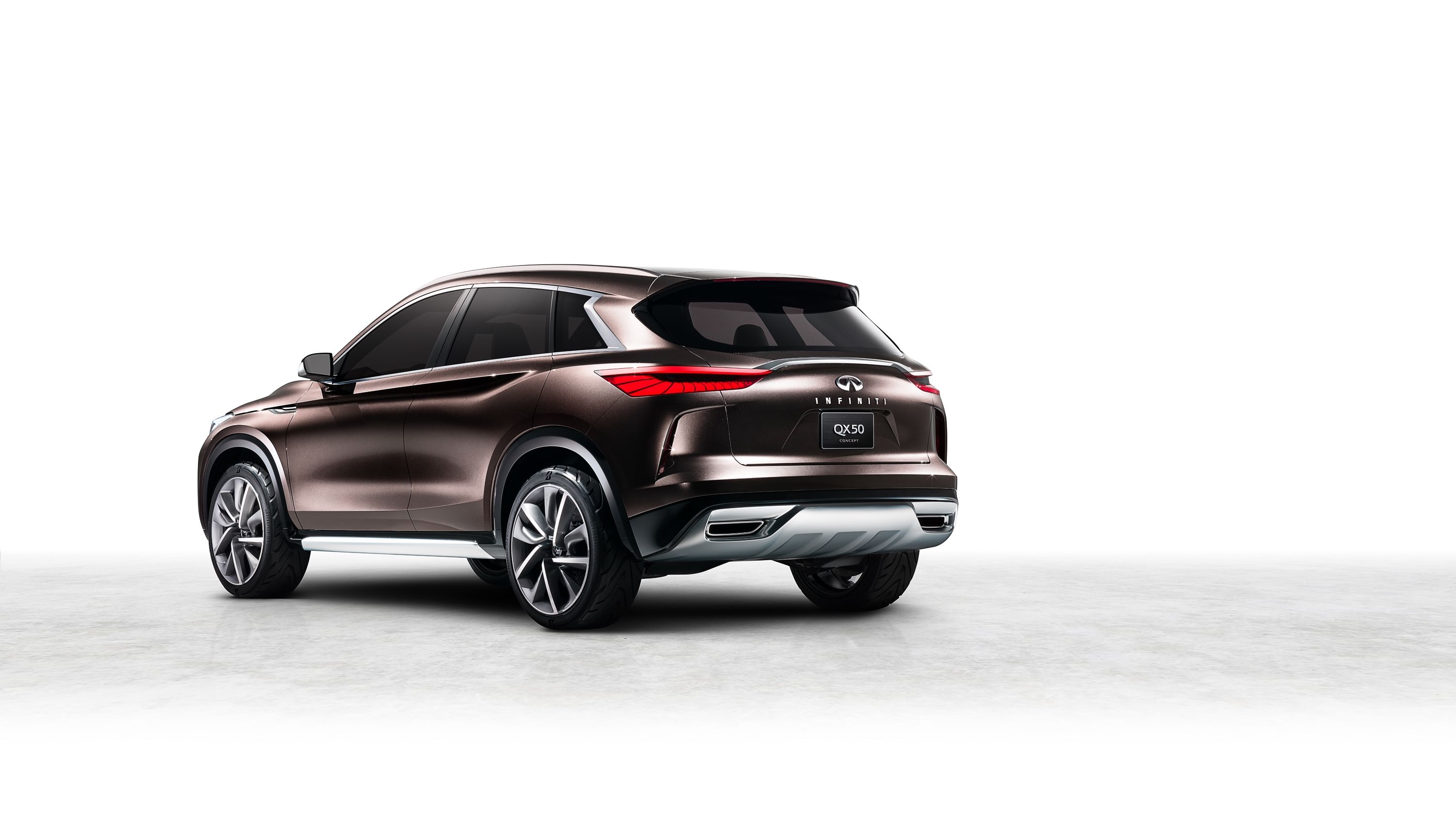
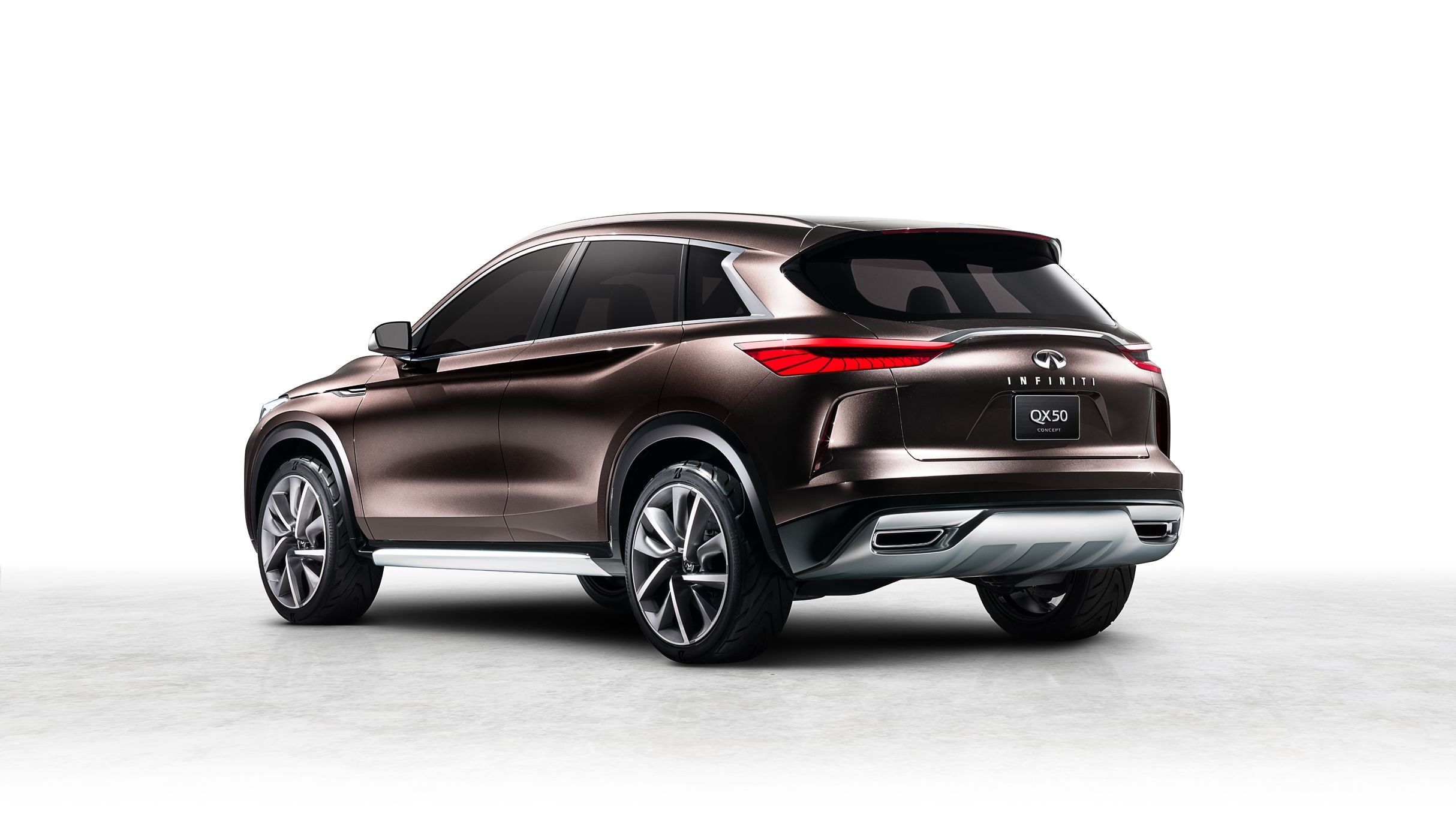
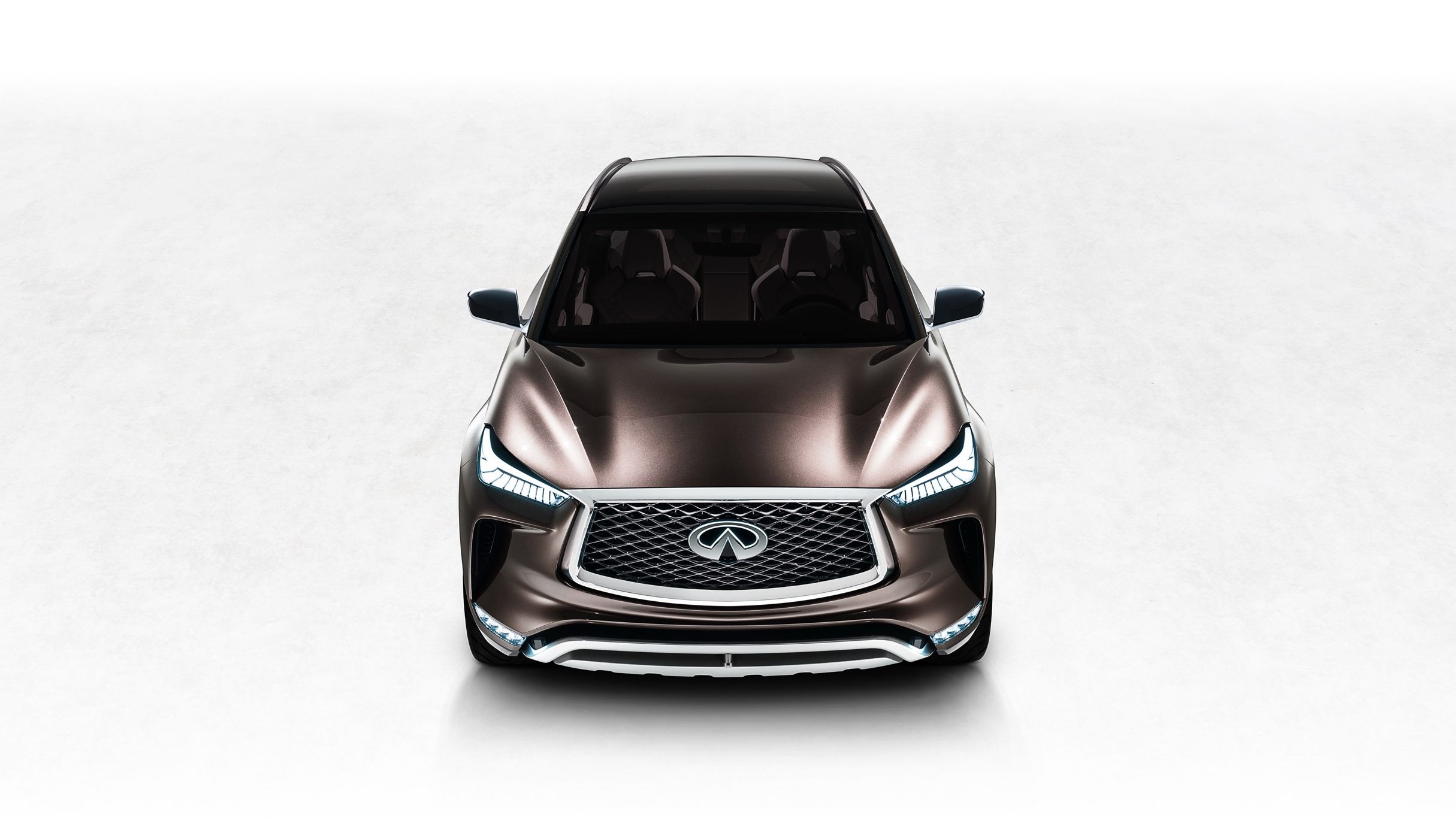
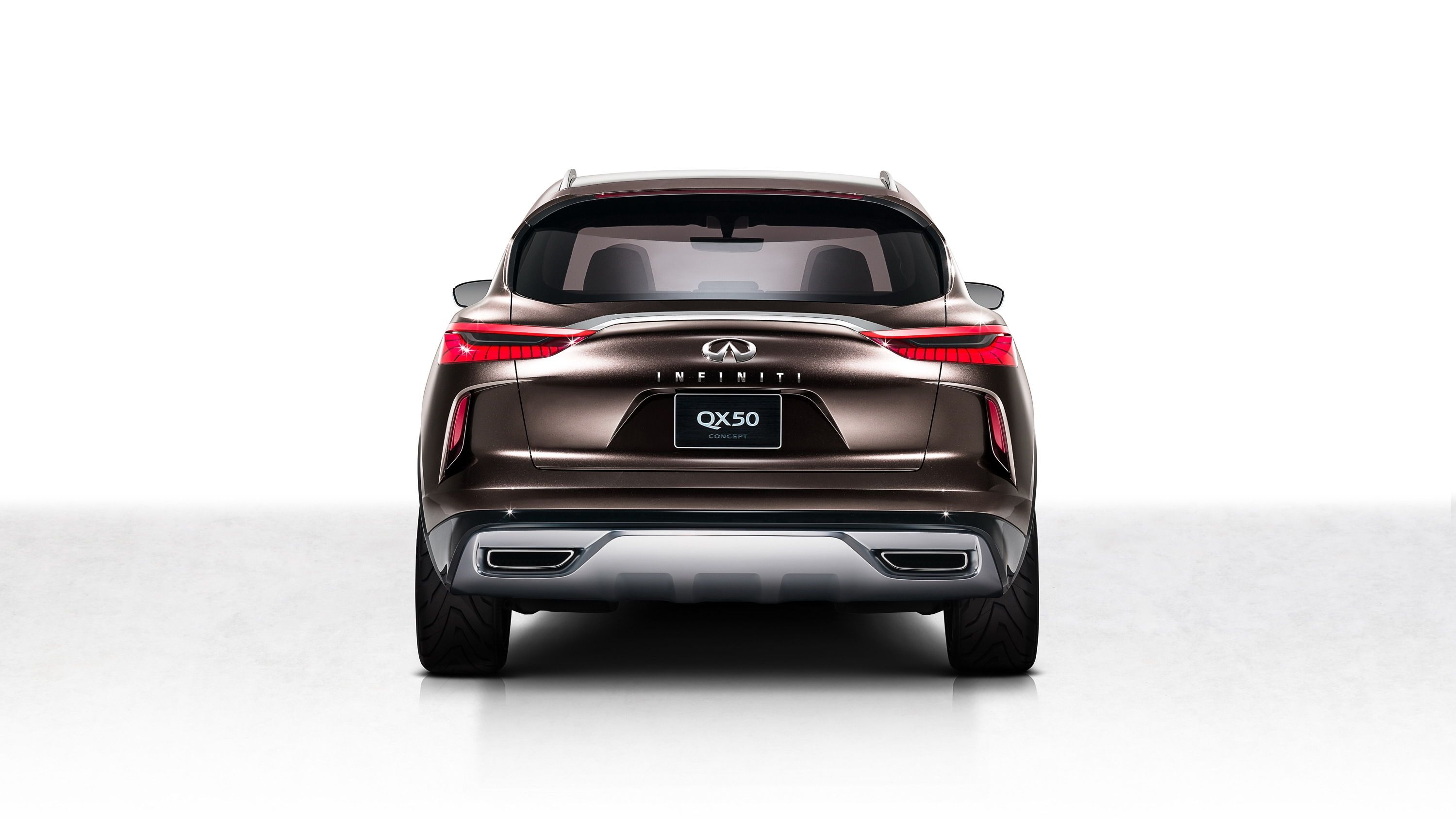
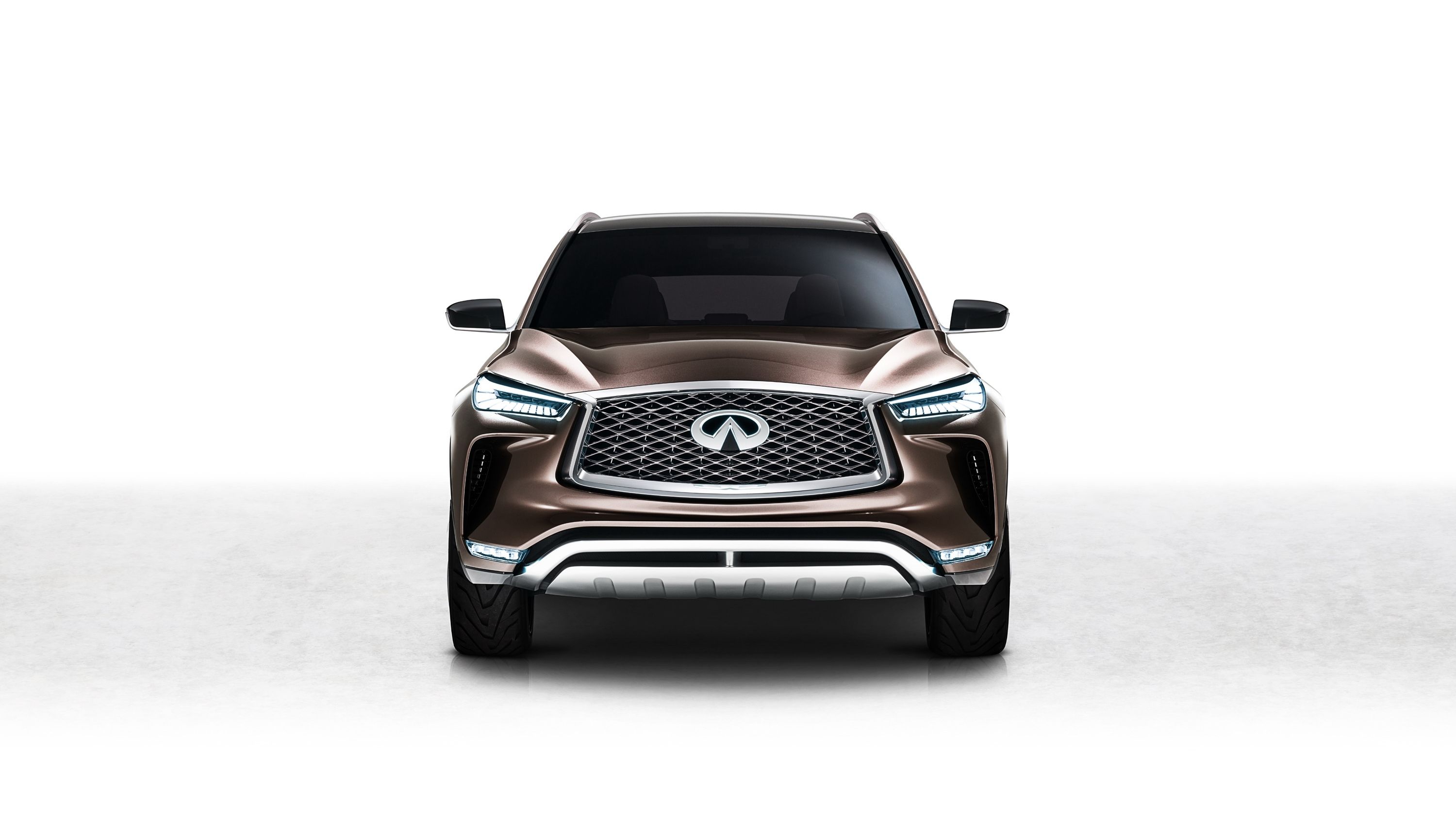
- Make: Array
- Model: 2017 Infiniti QX50 Concept
- [do not use] Vehicle Model: Array
Exterior

Described as an evolution of the QX Sport Inspiration study, the QX50 concept is actually almost identical to vehicle that Infiniti showcased in 2016. Up front, we can see several features that have been transferred from the QX Sport Inspiration, including the headlamps, the shape and size of the grille, the vertical intakes at the corners, and the engine hood. As far as features that set the QX50 apart, the grille has a slightly different mesh, while the bumper has revised air vents, new LED foglamps, and a larger skid plate.
Onto the sides, it appears that the Sport Inspiration was toned down for the QX50 badge, thus taking it closer to a production model. Specifically, the side cameras have been replaced with actual mirrors, while the side skirts have a more conventional design. The roof also appears to sit a bit higher, but fortunately, Infiniti didn't meddle with the concept's sporty lines, leaving the sloping roofline, the uniquely shaped quarter windows, and the beefy rear haunches in place.




Around back, the QX50 sports the same taillights and tailgate design of its predecessor, but stands out by means of added vents on each side of the fascia, a slightly larger roof spoiler, and a trapezoidal license plate recess. The Sport Inspiration's aggressive difuser-like element was also redesigned to include a more SUV-like center section and smaller exhaust pipes. Also, the element is now finished in silver instead of the two-tone livery seen on the previous concept.
Overall, the QX50 Concept looks as production-ready as they get, and even though its design clearly includes cues seen on existing Infiniti vehicles, I think it looks fantastic. And I'm not a big fan of SUVs...
Interior

Despite the "concept" denomination in the name, the cabin design is a pretty big departure from the Sport Inspiration. The latter showcases a rather futuristic approach, while the QX Concept is pretty close to a production model. Specifically, it doesn't have the organic styling cues or the funky center console. Instead, we're looking at a standard premium interior with a two-tone dashboard, a regular center stack, and a display flanked by two A/C vents. The instrument cluster also houses a big screen between the gauges, which is really cool.
The seats also have a more down-to-earth design, while the flat-bottom steering wheel of the previous concept was replaced with a more conventional unit. I’m not saying that Infiniti might not offer a flat-bottom wheel on the range-topping model, but it won’t be as extreme as the concept car’s.




All told, the QX50's cabin looks like a nice place to spend time in and the white, brown, and light-blue color combination is tasteful and works well with the crossover's clean design.
Moving over to the very little bit of information that the company has provided about the QX50’s interior, it will preview the brand’s very own autonomous drive support technologies. Described as a technology that "will act as a co-pilot for the driver, empowering rather than replacing them, and delegate more onerous driving tasks to the car," the system has yet to be unveiled, but it should be similar to the one introduced on the Nissan Serena minivan in Japan in mid-2016. It’s called ProPilot, works just as any other semi-autonomous system available on the market by maintaining the car’s lane position and distance behind other cars, while also being able to navigate without issues in stop-and-go traffic.
Drivetrain
Under the hood is where the big deal happens, as the QX50 concept uses Infiniti's new variable compression turbo engine technology. Dubbed VC-Turbo, it's the world's first production-ready variable compression ratio engine and Infiniti claims that it combines the power of a high-performance 2.0-liter turbo gasoline mill with the torque and efficiency of an advanced diesel powertrain.
Using an innovative multi-link system, the VC-Turbo engine is reportedly able to adapt its compression ratio according to driving conditions in order to deliver optimal levels of performance and efficiency. By raising or lowering the reach of the pistons, it instantly finds the most suitable compression for driving conditions, offering any compression ratio between 8:1 for higher performance and 14:1 for higher efficiency.

Infiniti also brags that the VC-Turbo technology marks a significant "leap forward for the internal combustion engine, joining other renowned powertrain innovations such as liquid cooling, fuel injection, catalytic convertors, and turbocharging." These are mighty big claims and it remains to be seen whether it's just PR talk or something we will indeed conclude in the future.
As far as performance goes, the target output for this engine is about 268 horsepower and 288 pound-feet of torque. At first glance, the torque figure doesn't seem that spectacular compared to a diesel, but rather in line with what we can get from turbocharged drivetrains. However, Infiniti says that the VC-Turbo engine will be comparable to "certain six-cylinder gasoline powertrains for performance, while significantly outperforming them in efficiency." The company also said that it is targeting a 27 percent improvement in fuel efficiency over V6 gasoline engines of similar power output. To put this into perspective, the outgoing QX50 uses a 3.7-liter V-6 rated at 325 horsepower and 266 pound-feet of torque that returns 24 mpg in the city and 17 mpg on the highway. This means that the upcoming model and its VC-Turbo feature should be good for at least 31 mpg on the highway and 21 mpg in the city.
Conclusion

Although it's not the kind of concept car that blows you away in terms of design and technology, it's a vehicle that draws a lot of attention at an auto show. It's design is gorgeous to look at, it comes with a state-of-the-art semi-autonomous system, and drivetrain technology that's supposed to revolutionize the auto industry. And it's because of these reasons I'm actually glad the QX50 is not a wild, futuristic concept. This is mostly likely the exact car we'll get in dealerships by the end of 2017 and that's a very good reason to get excited about. It's also worth noting that the QX50 will inspire the company's larger SUVs, the QX70 and QX80, both in need of a makeover.

